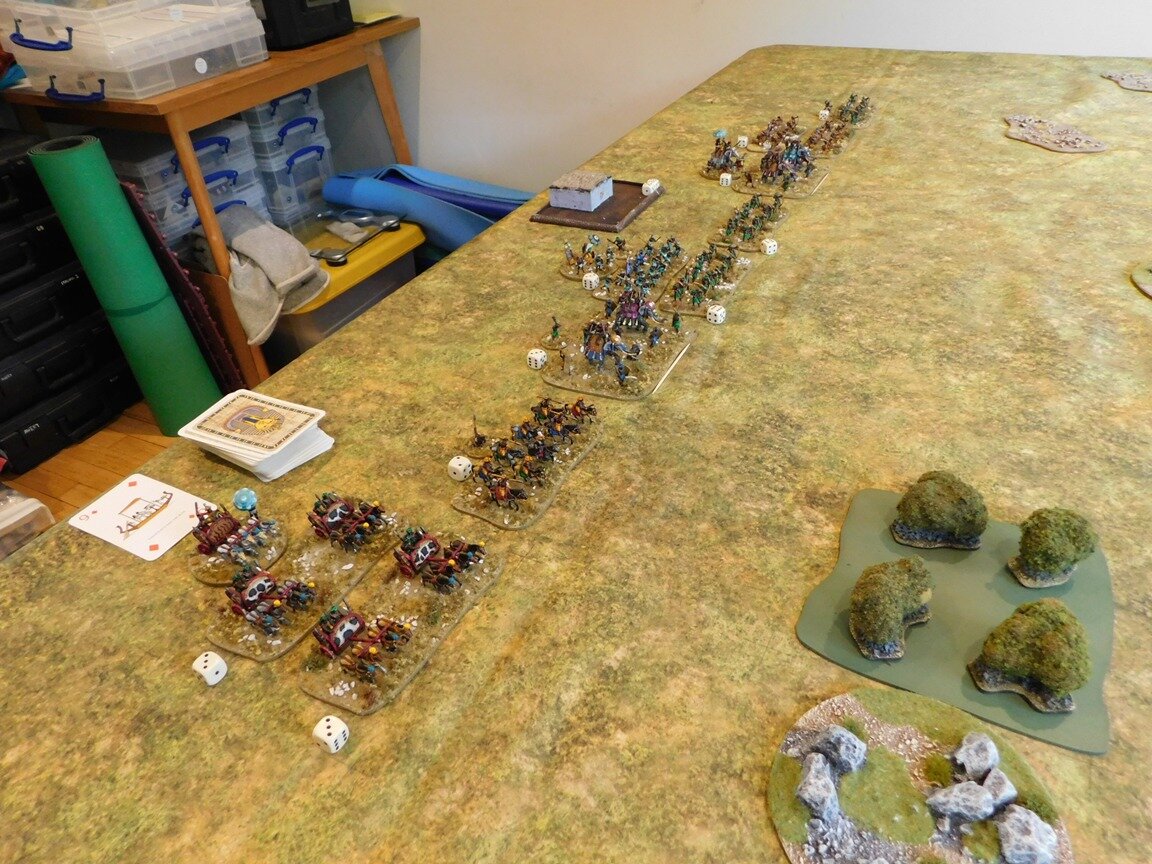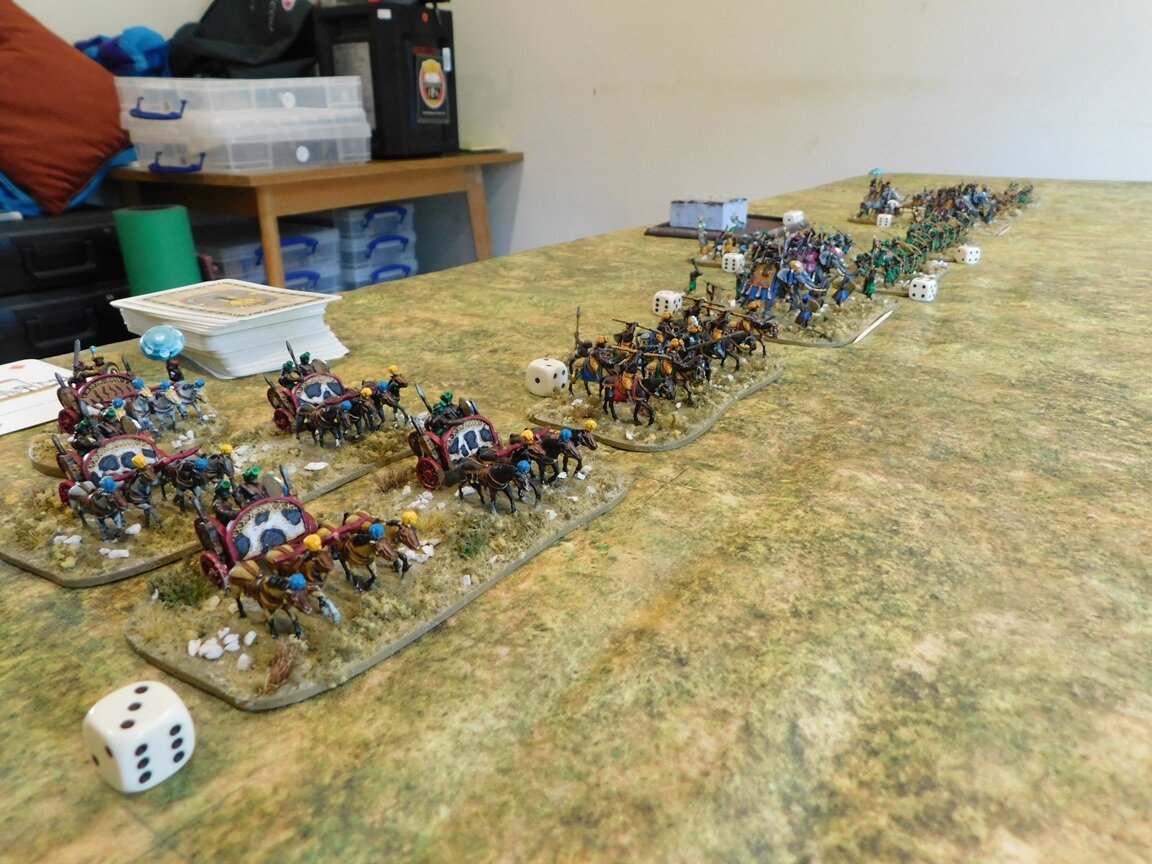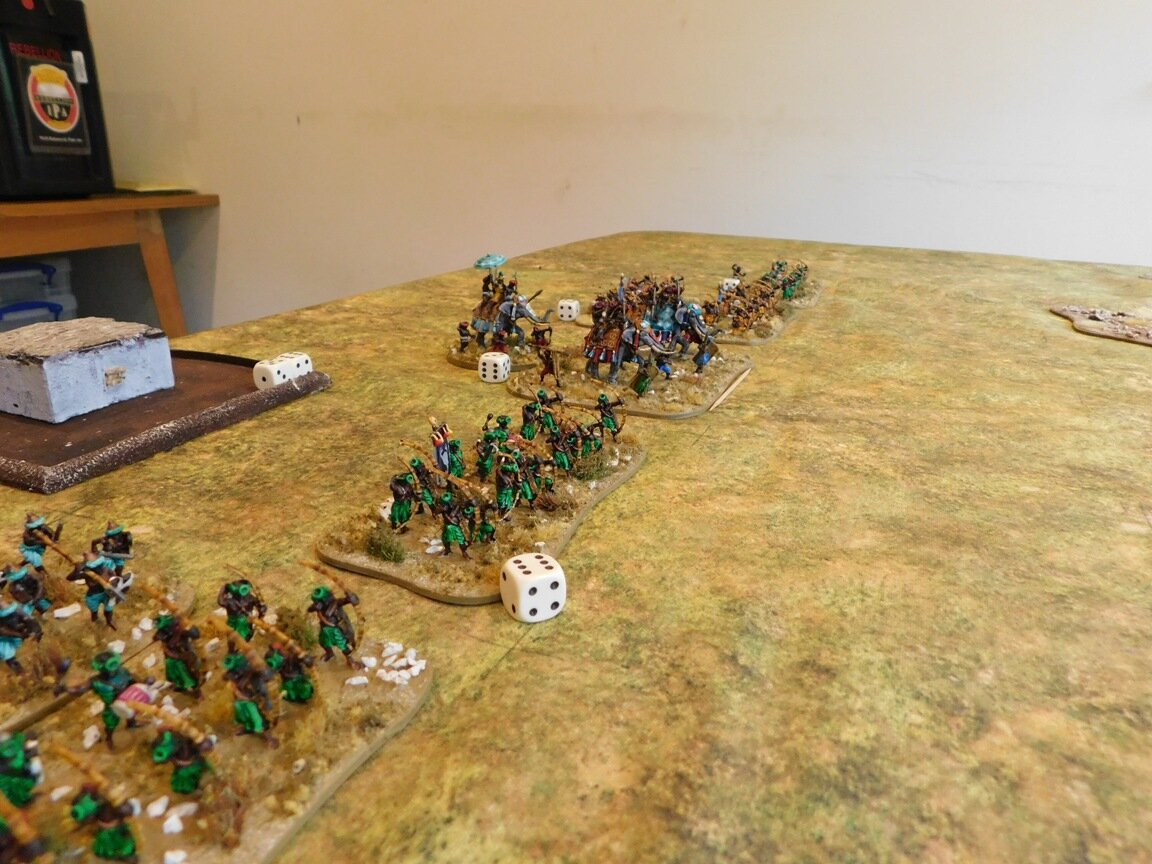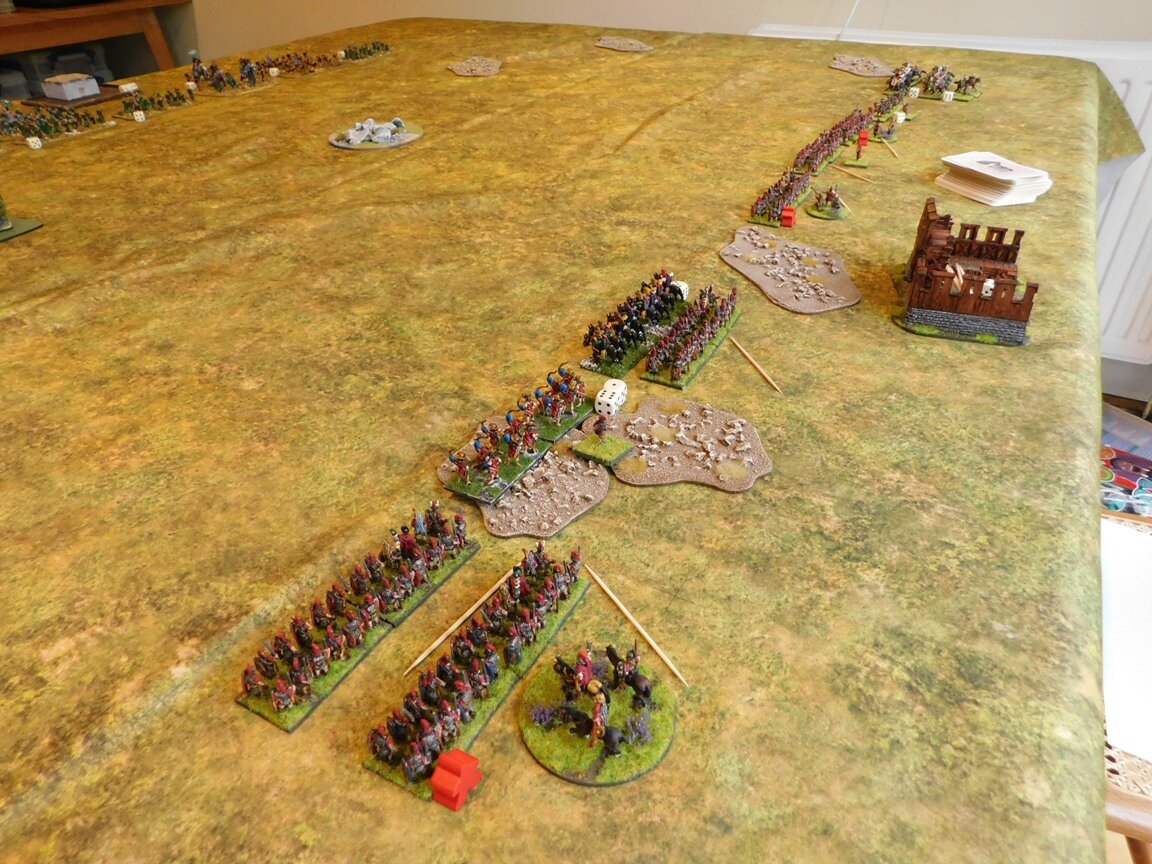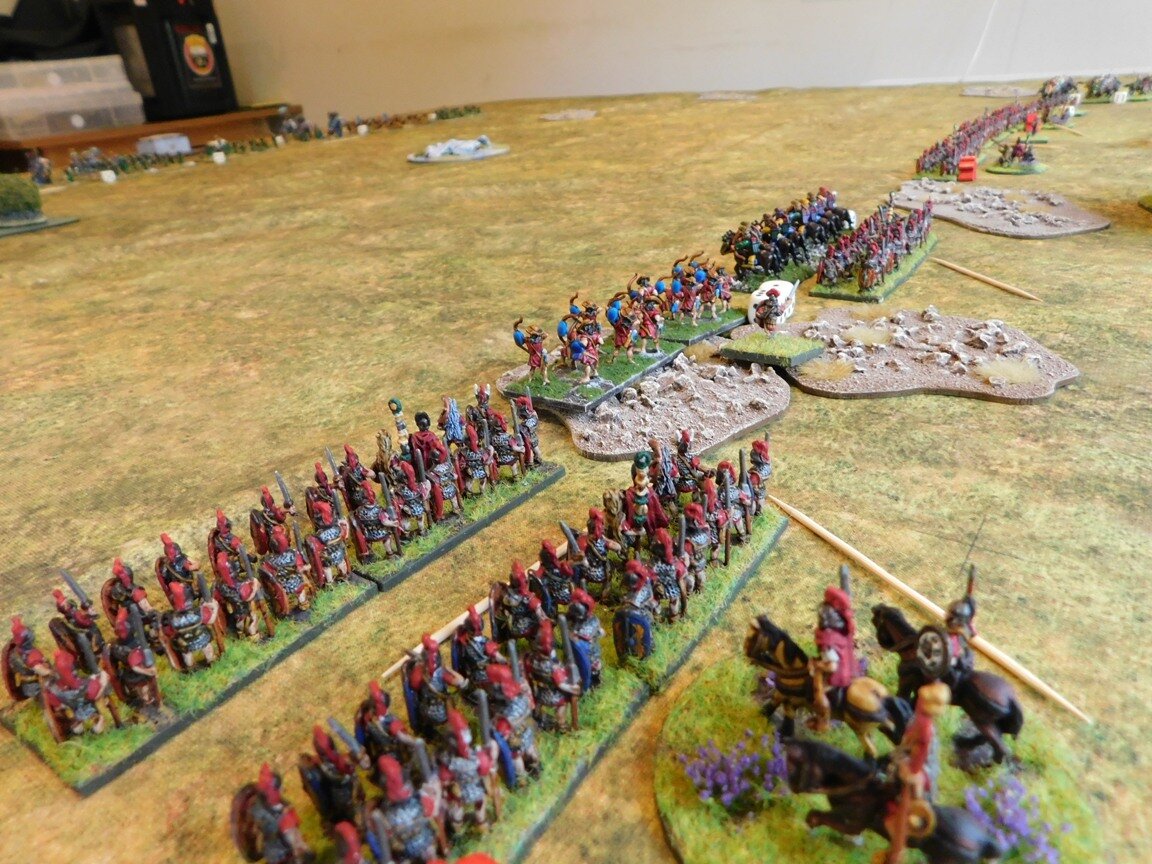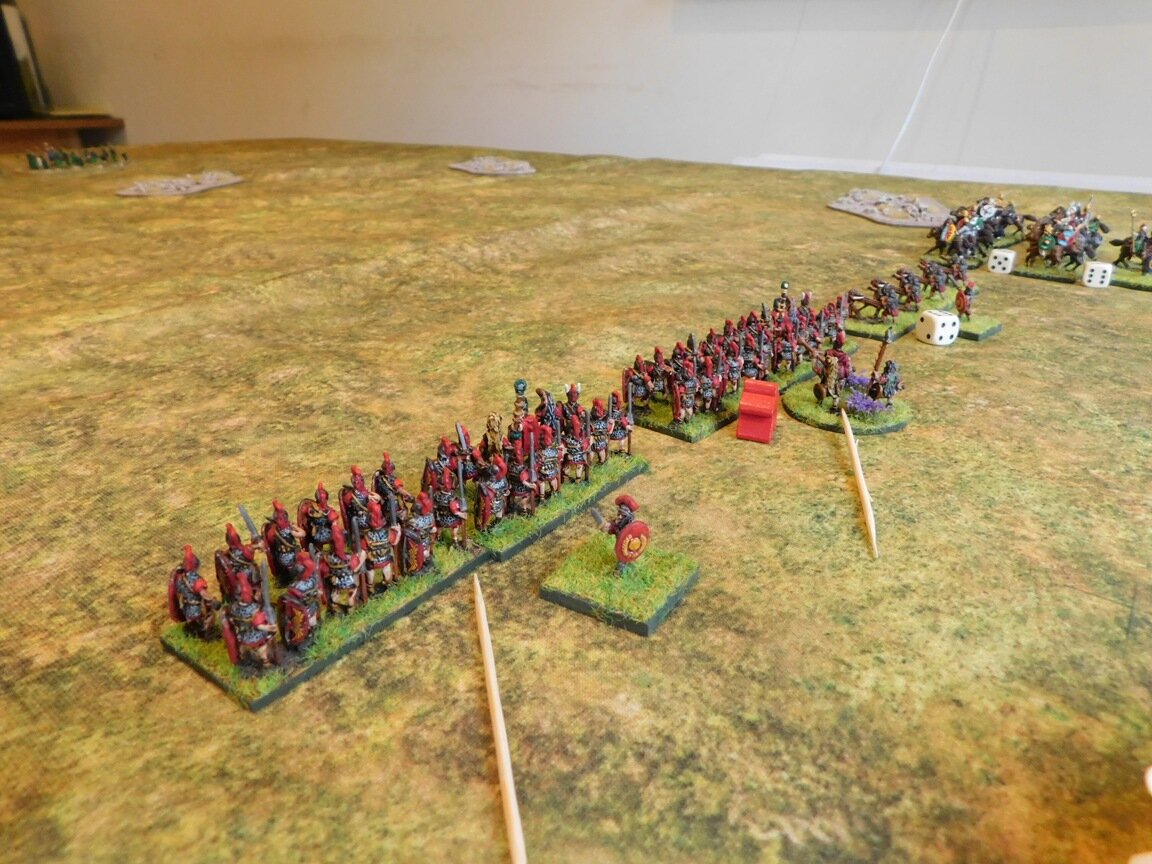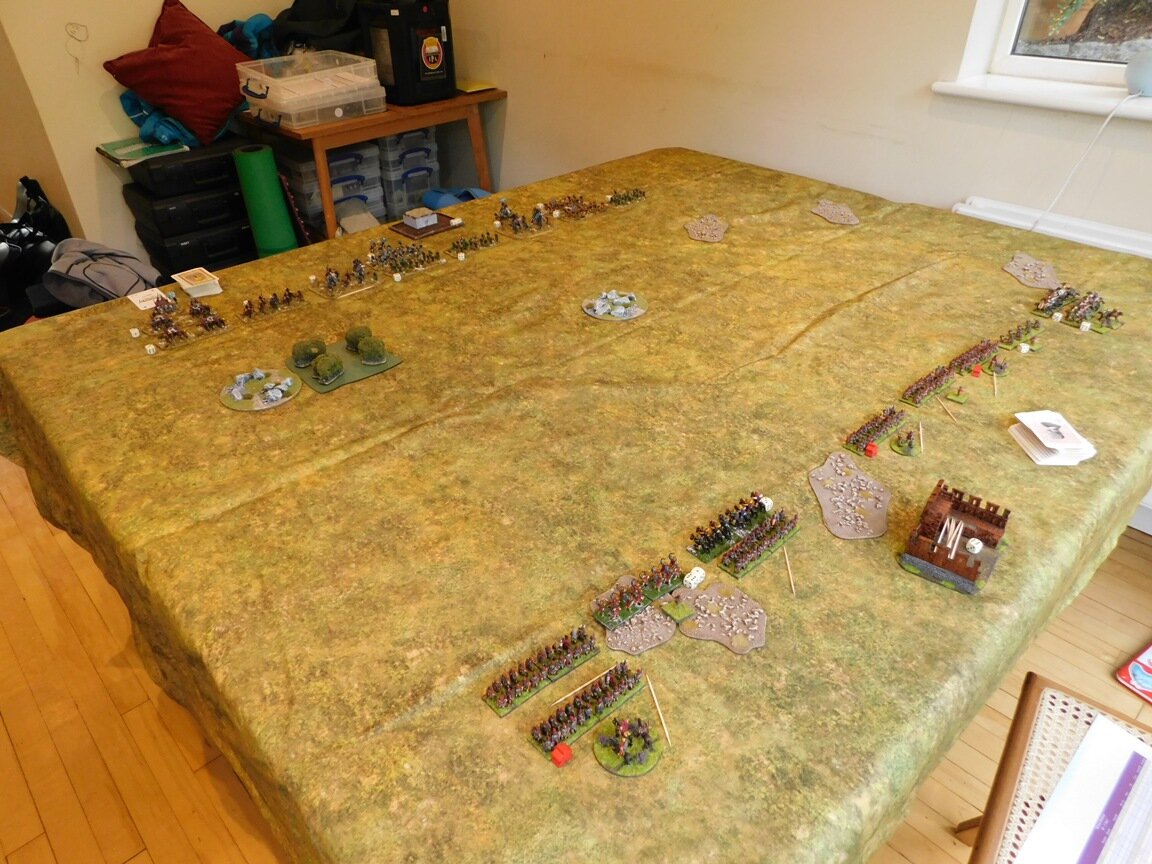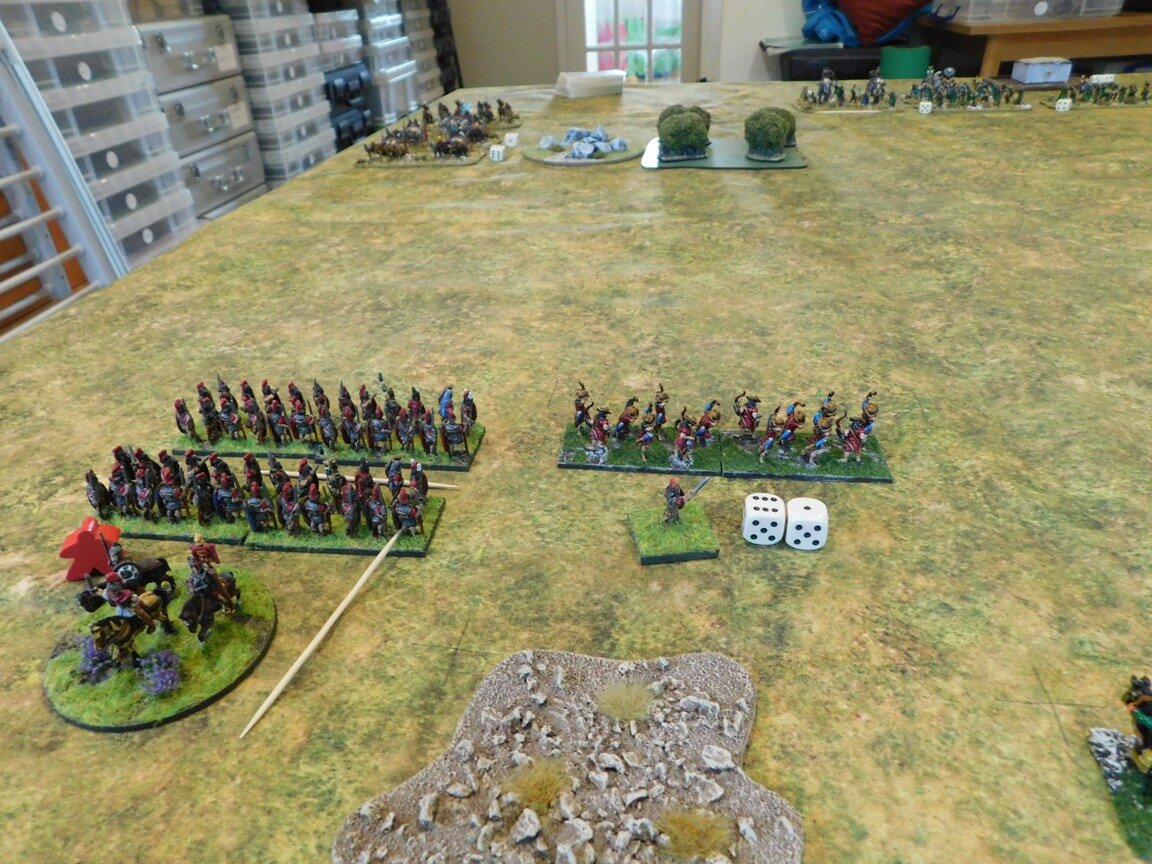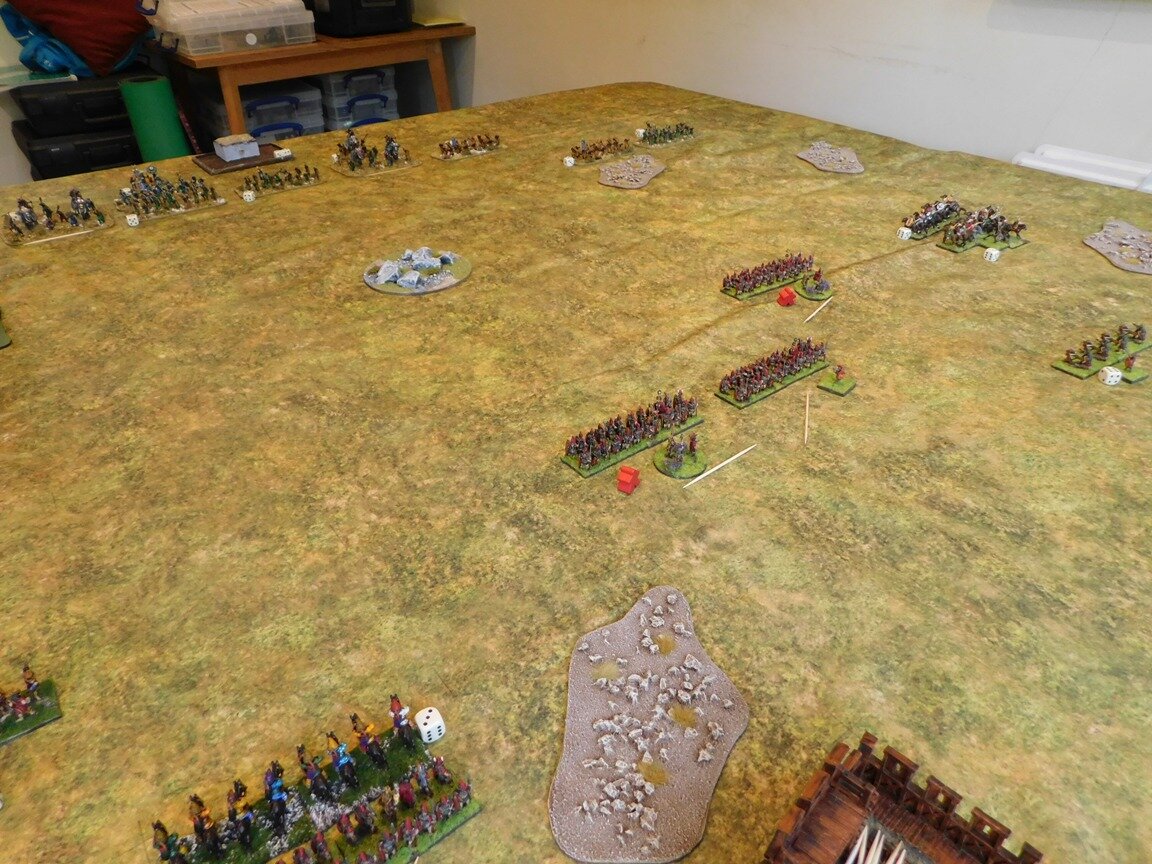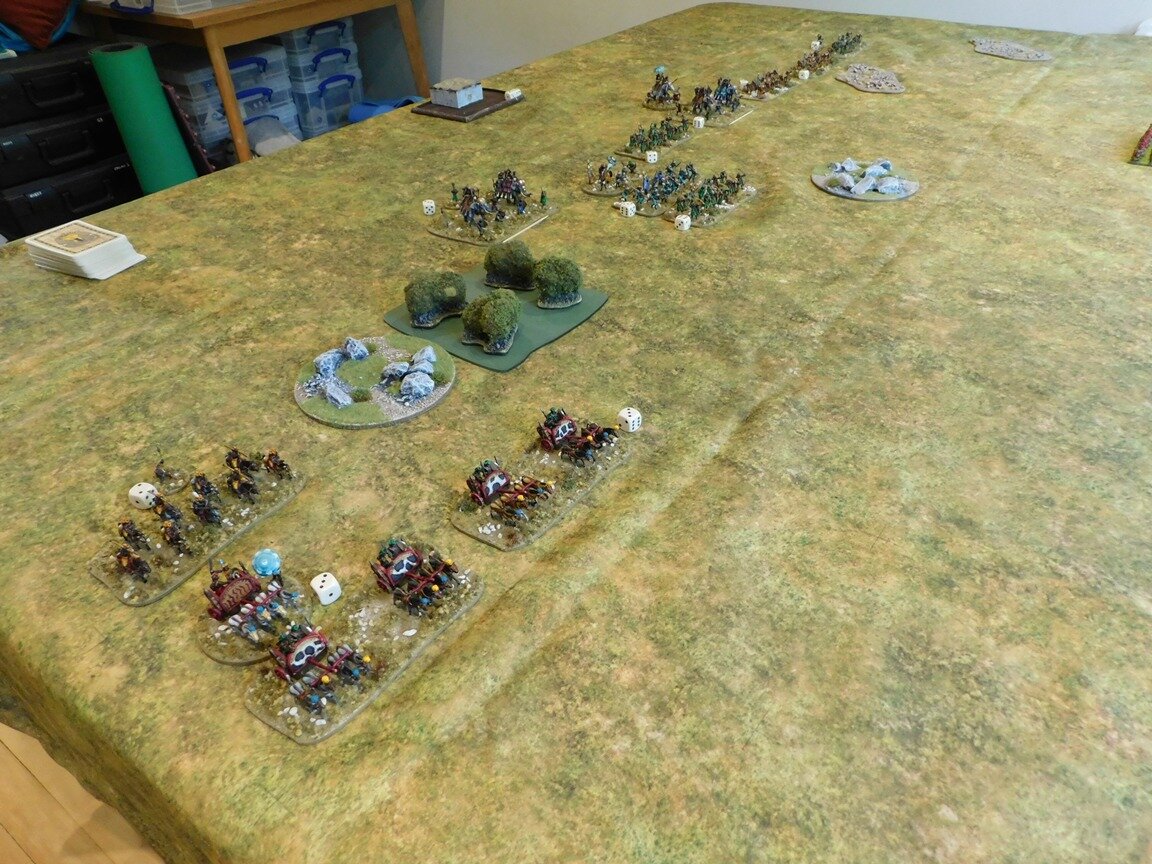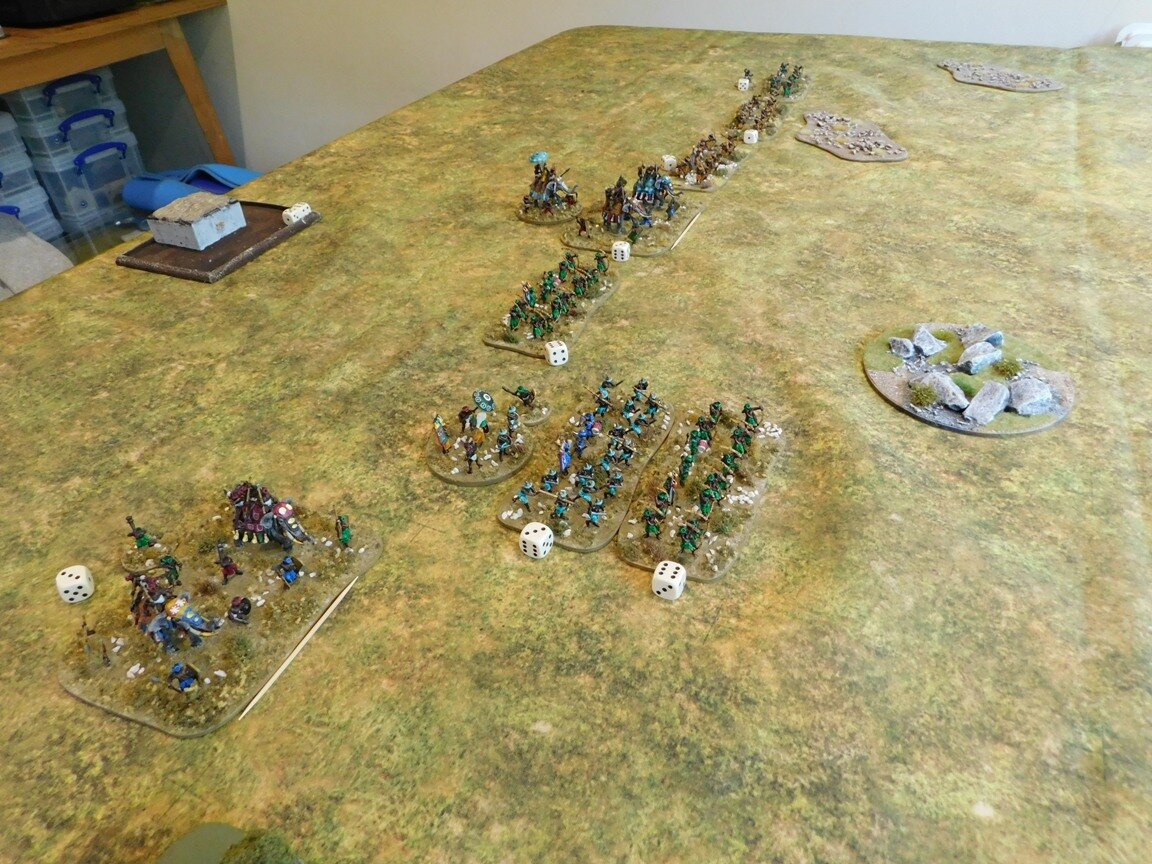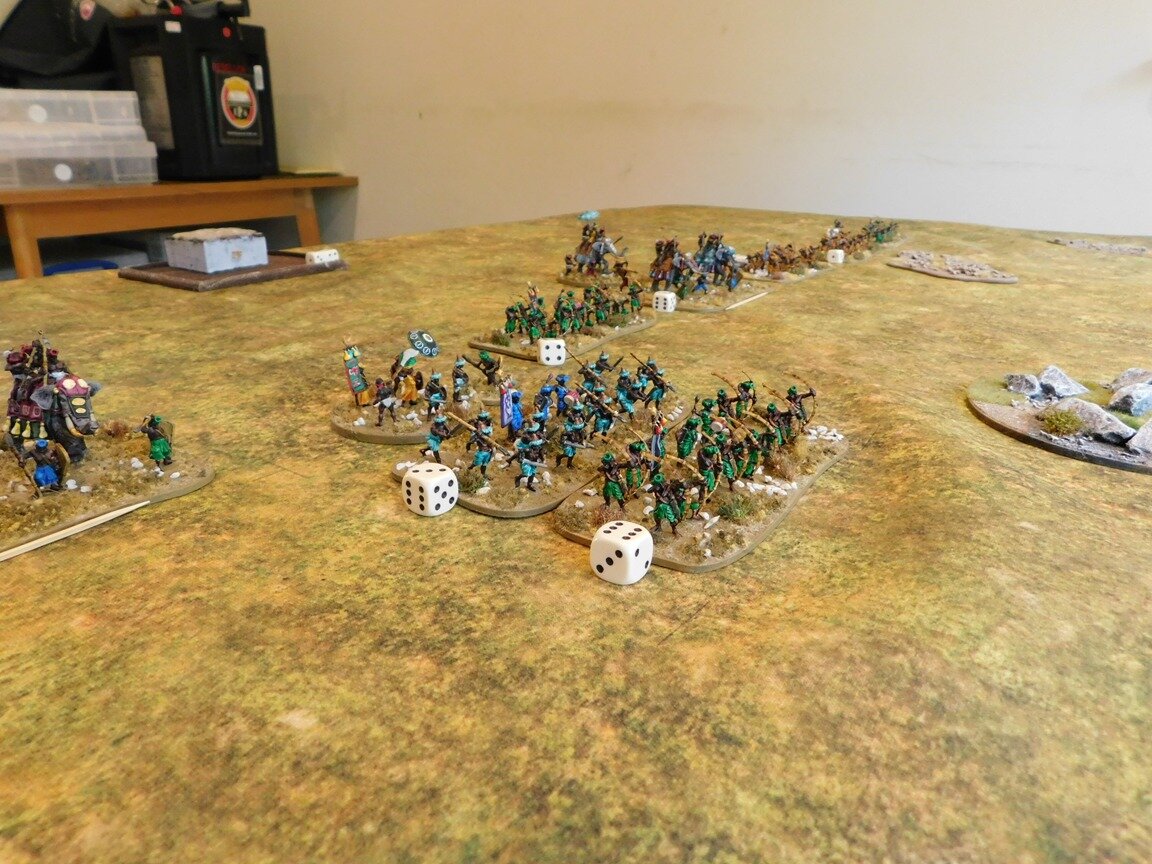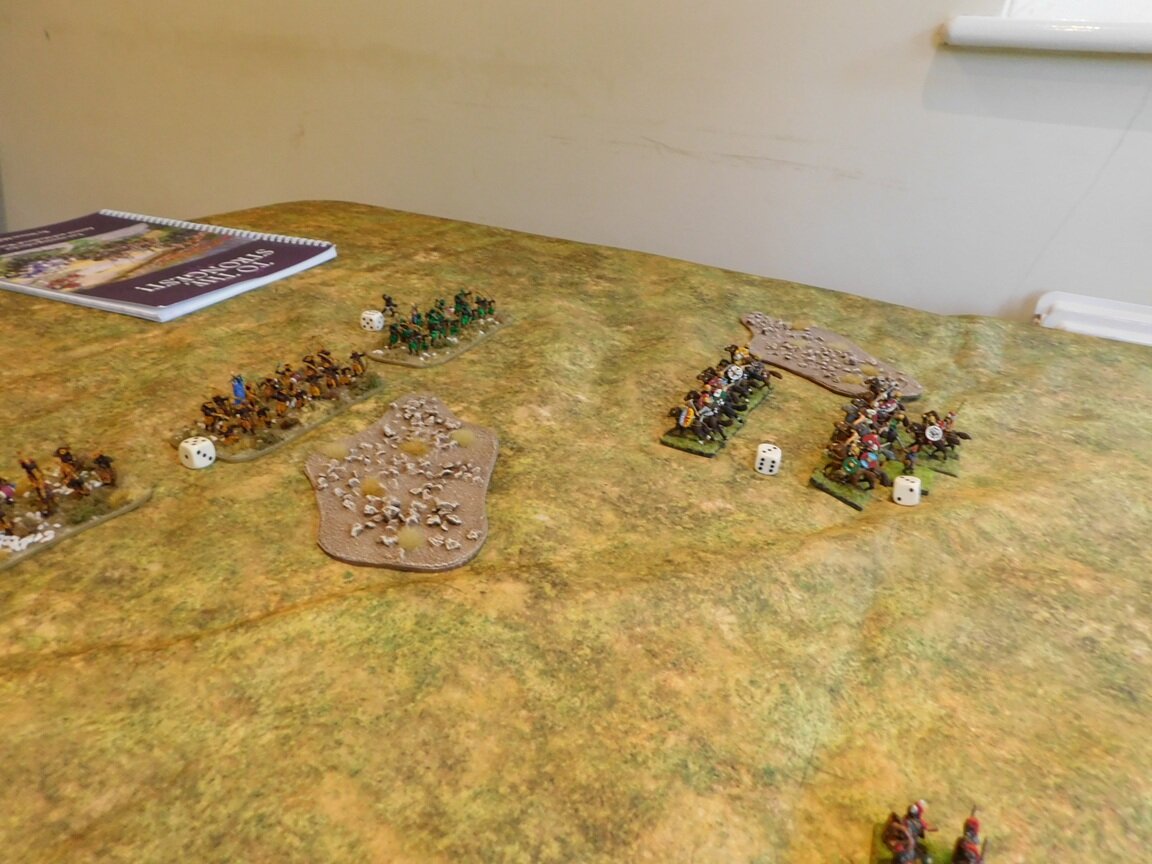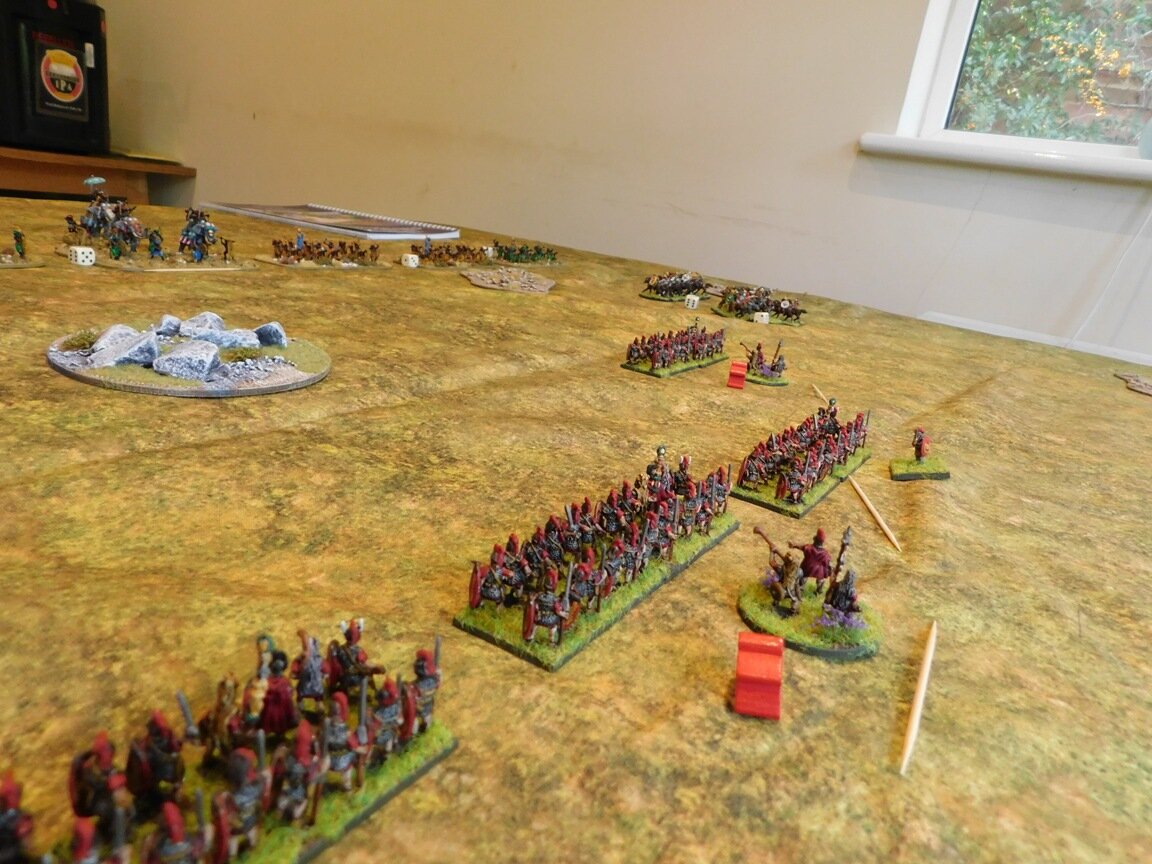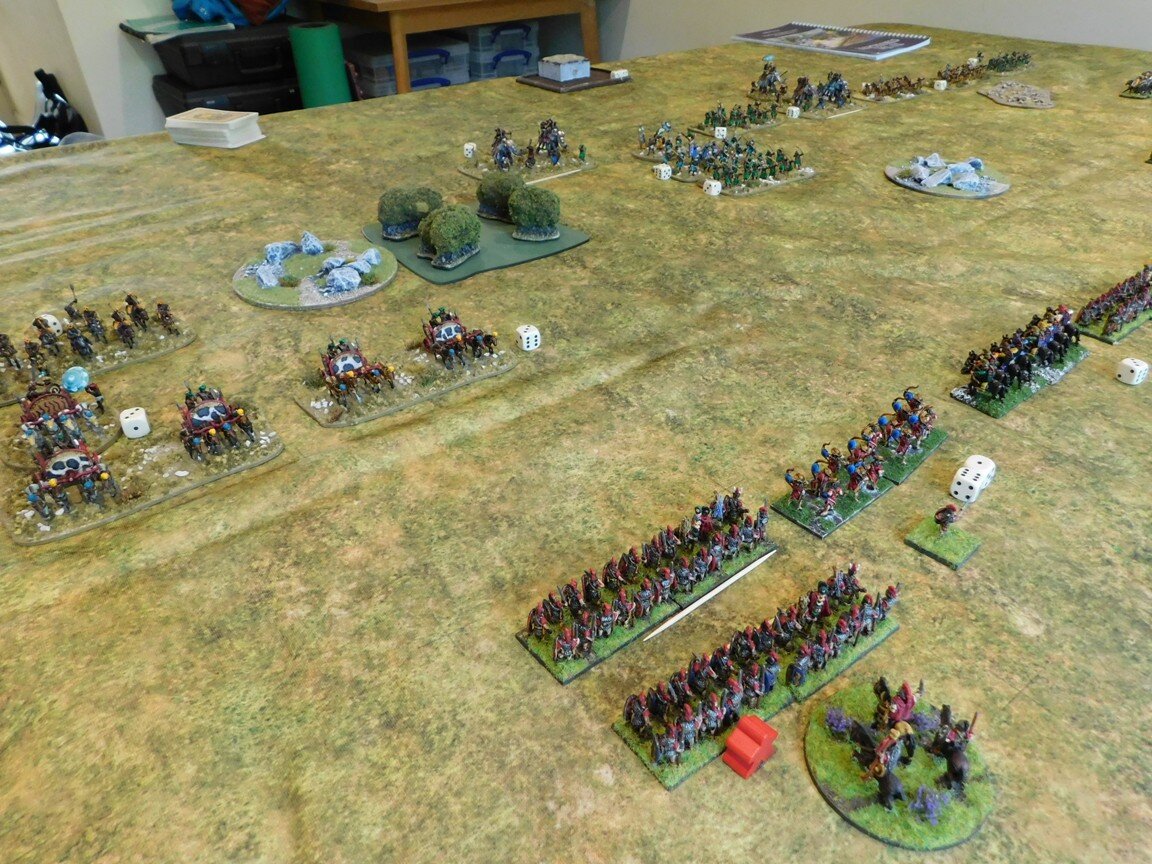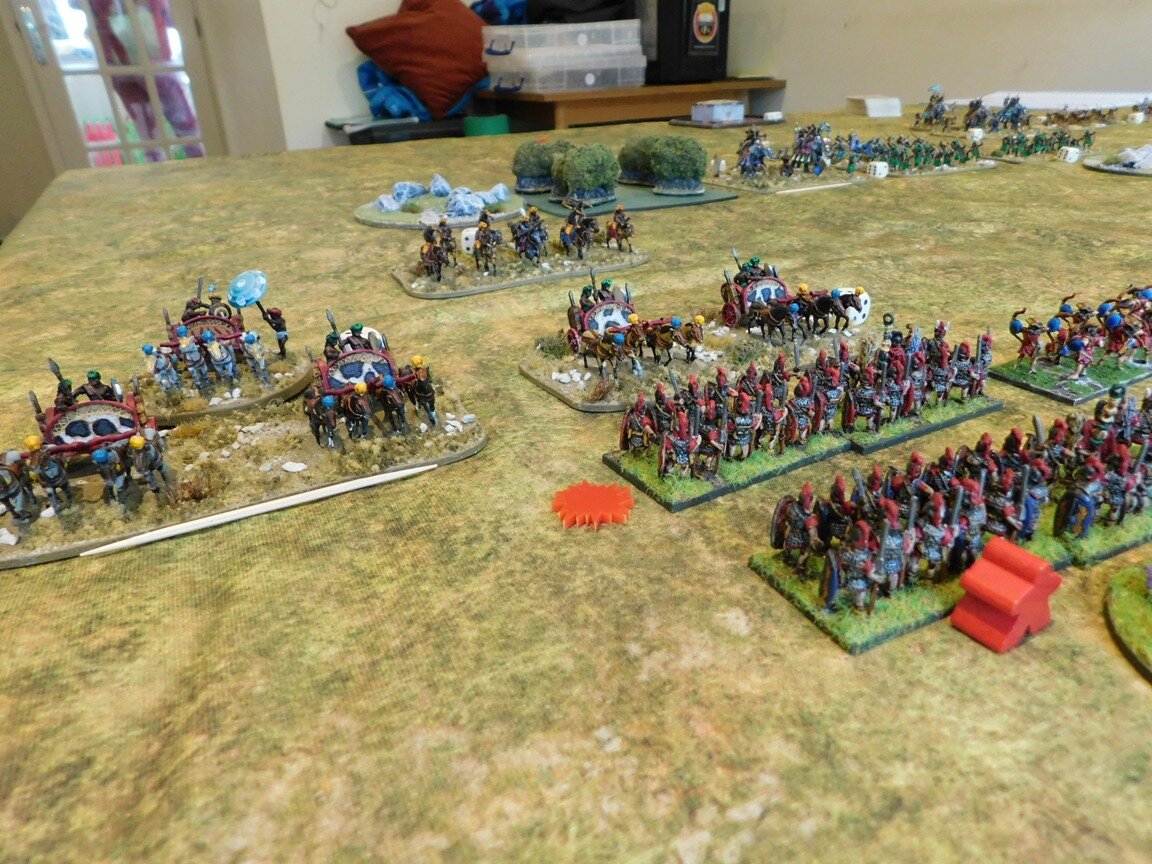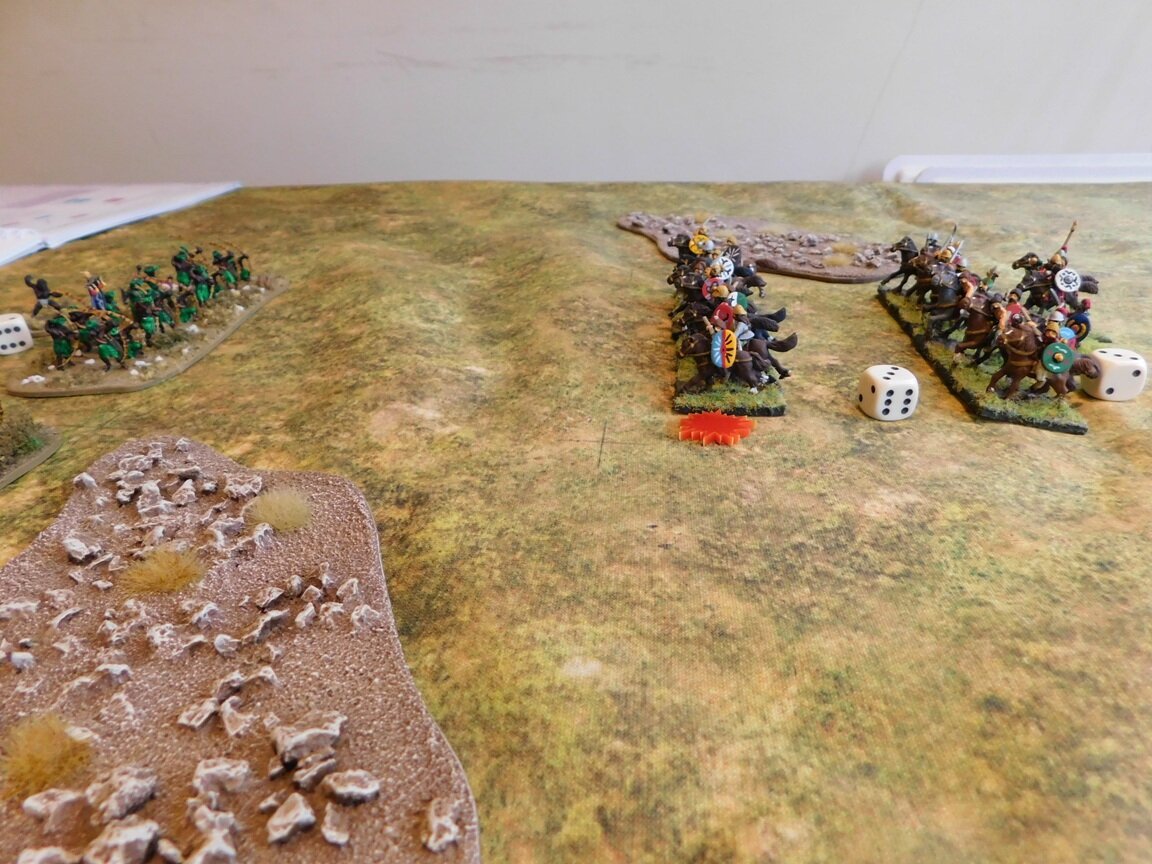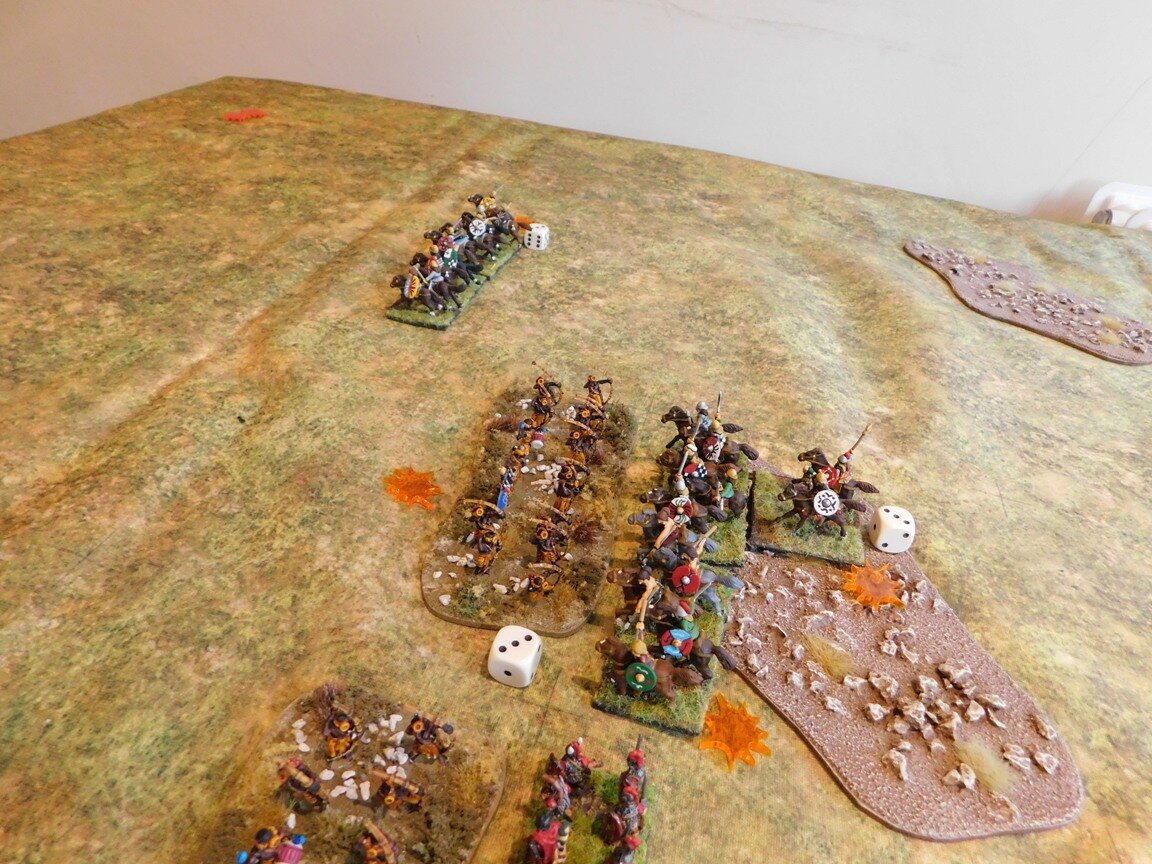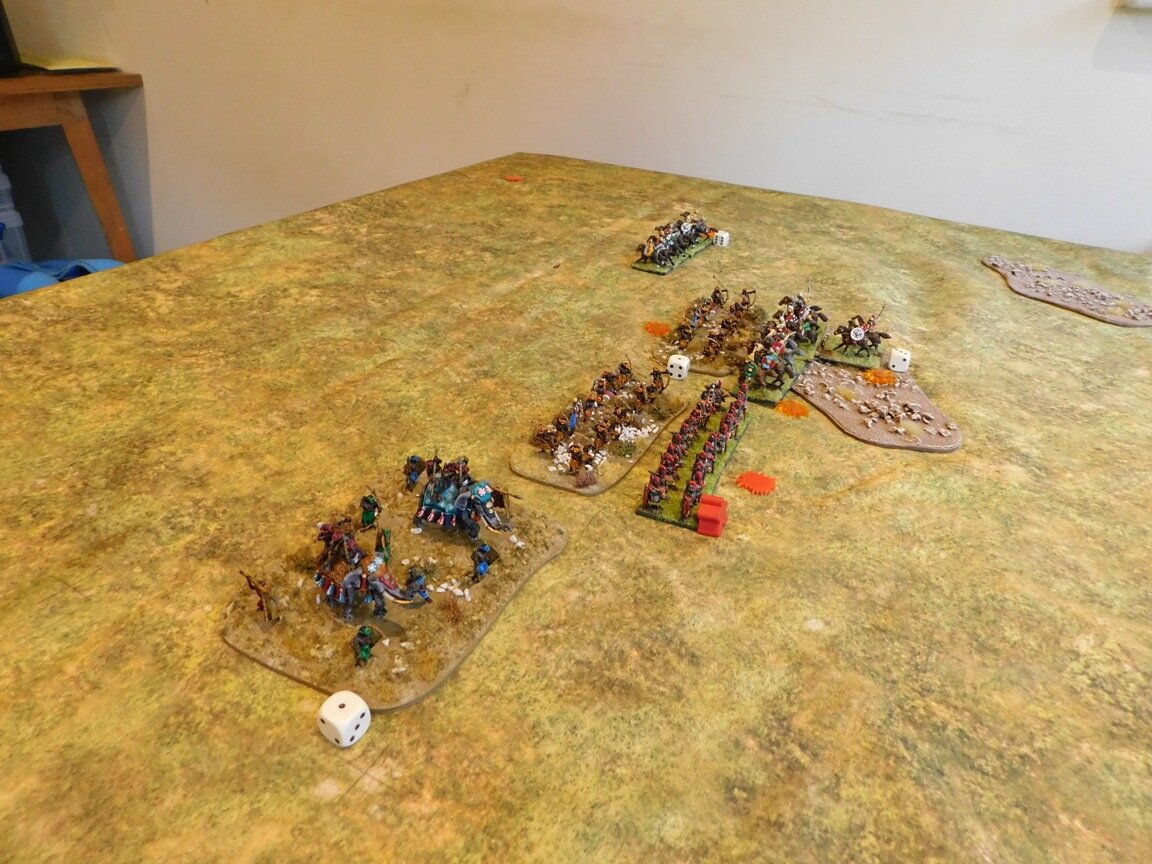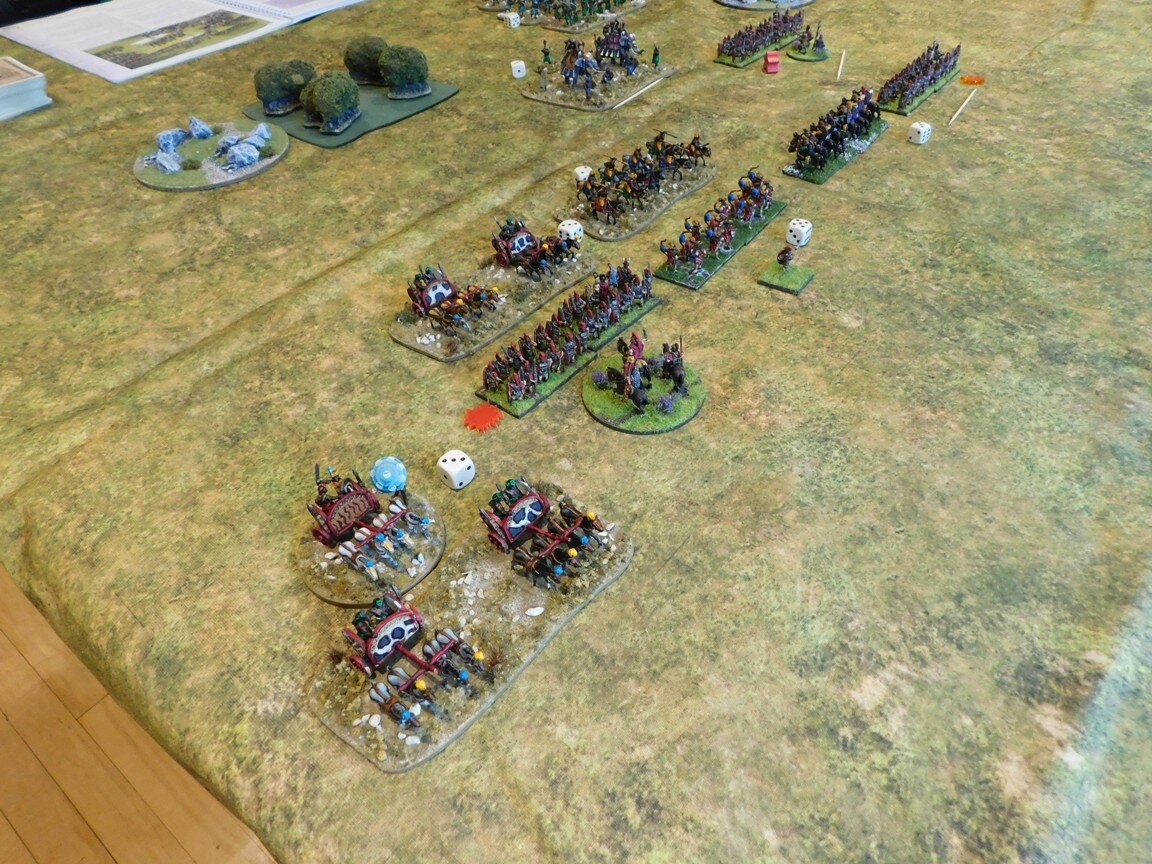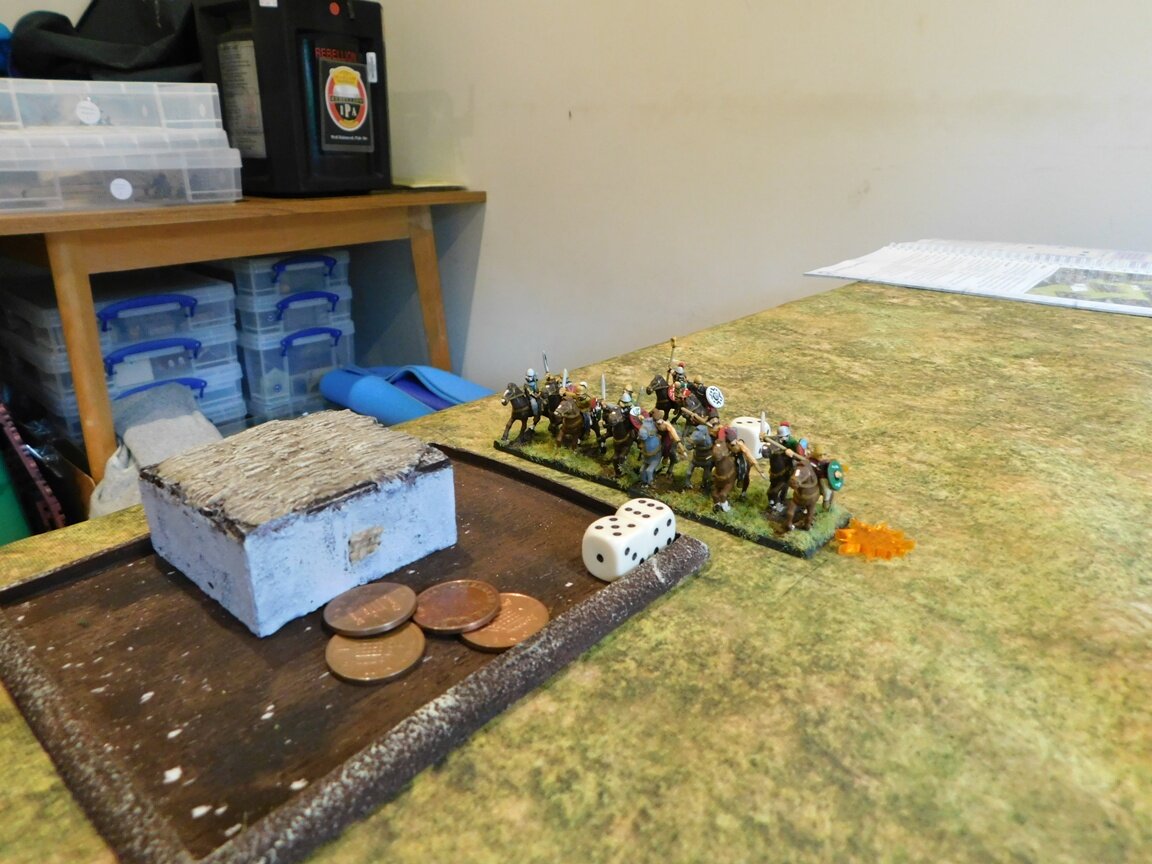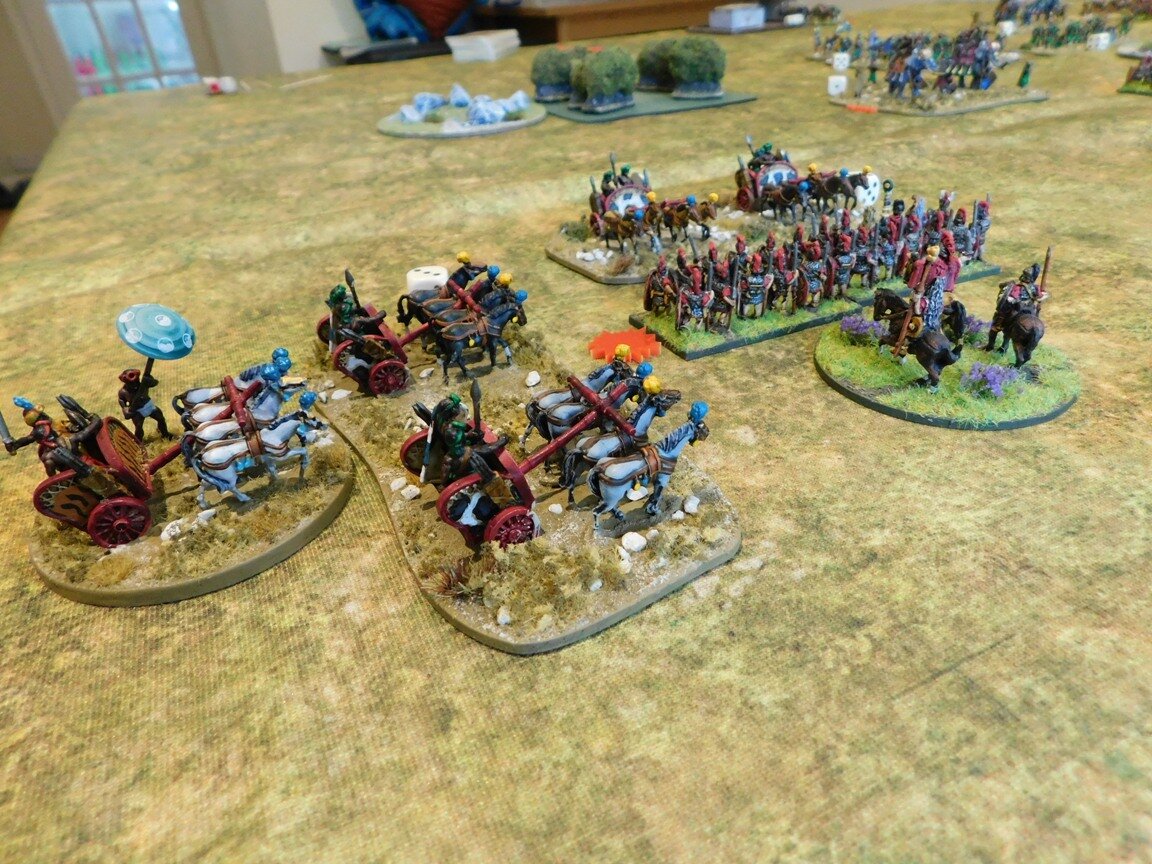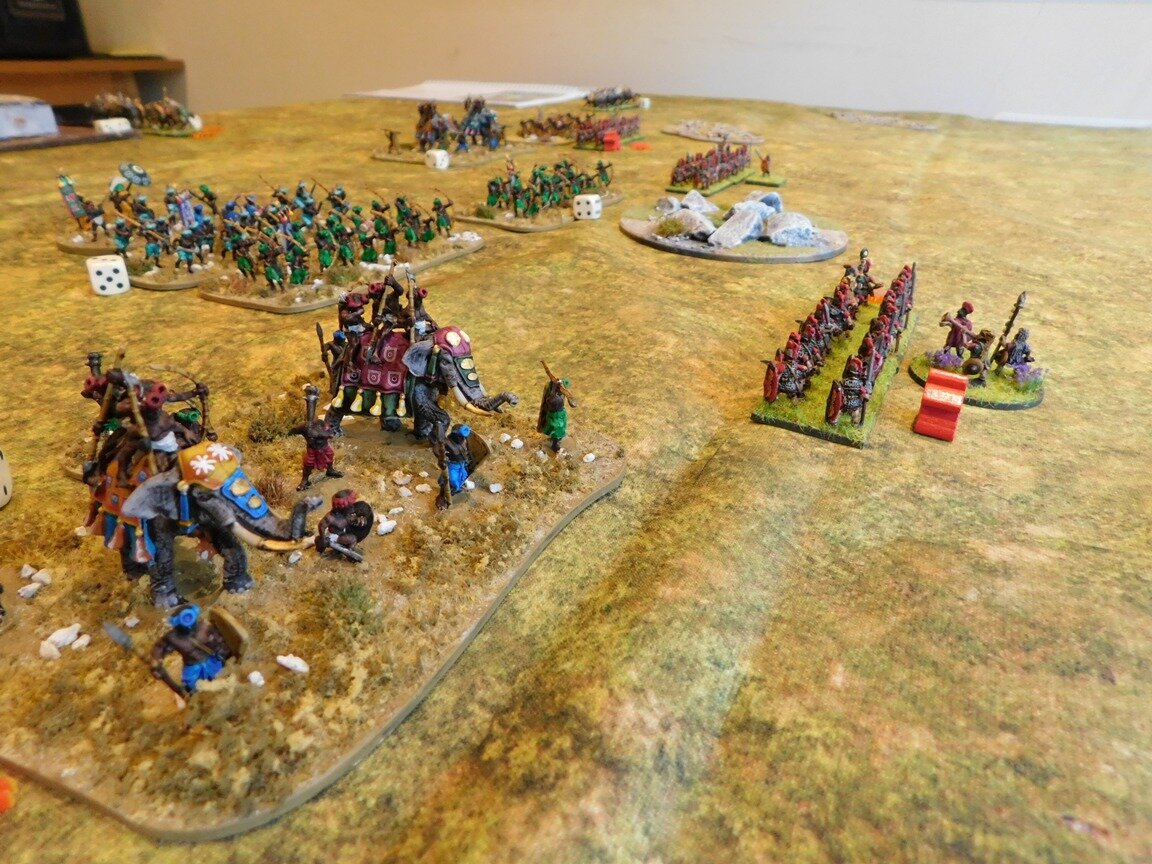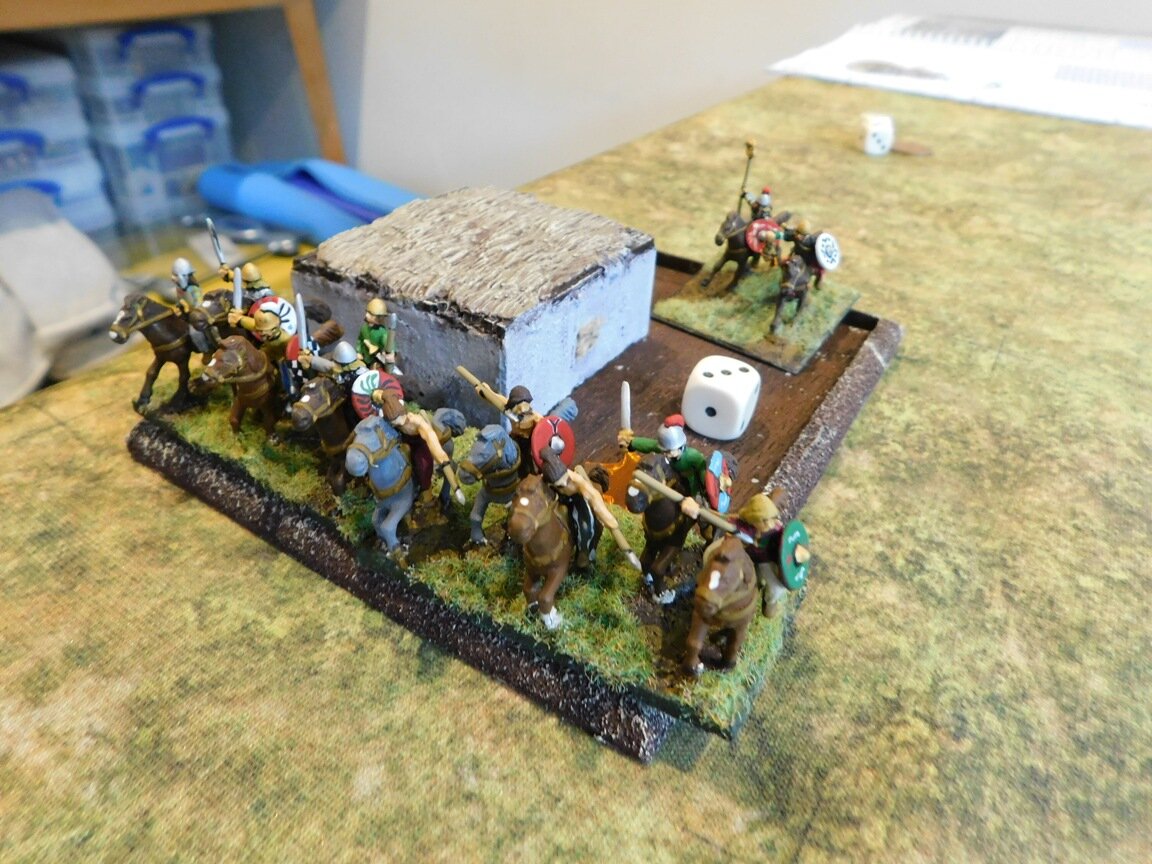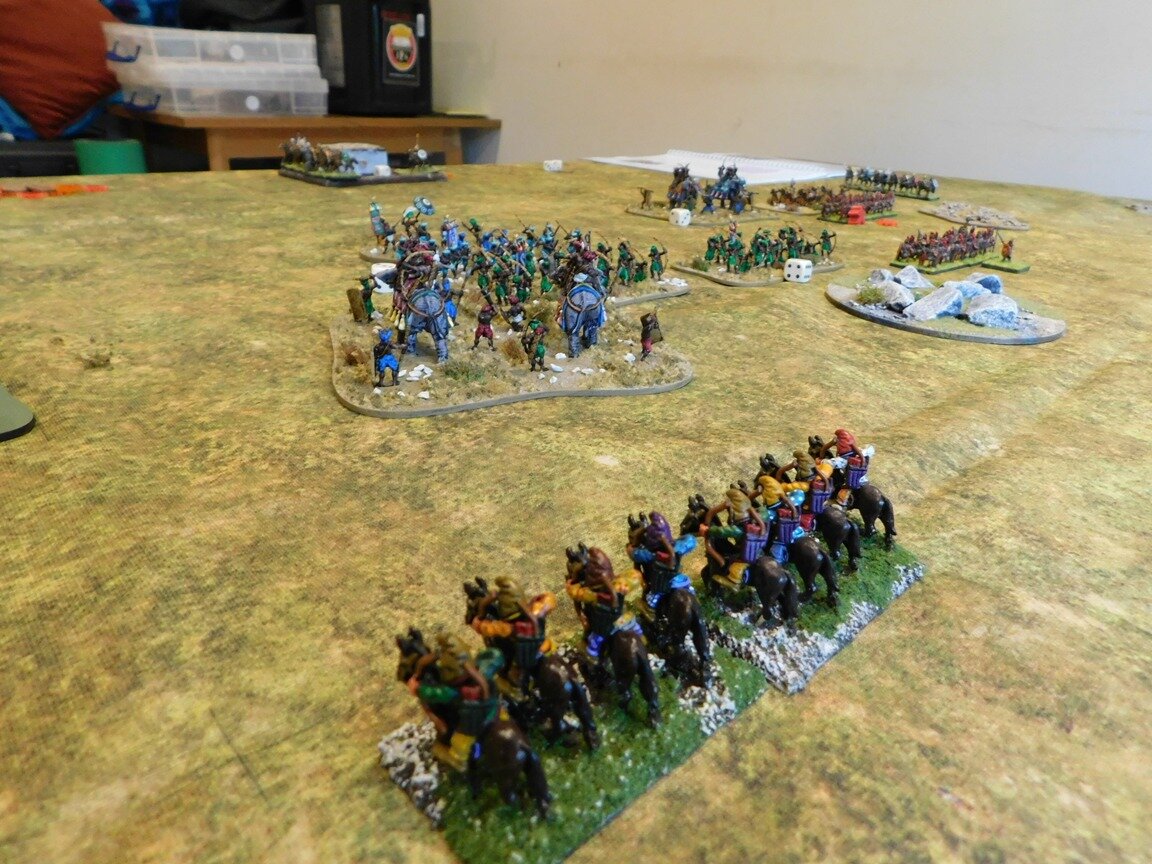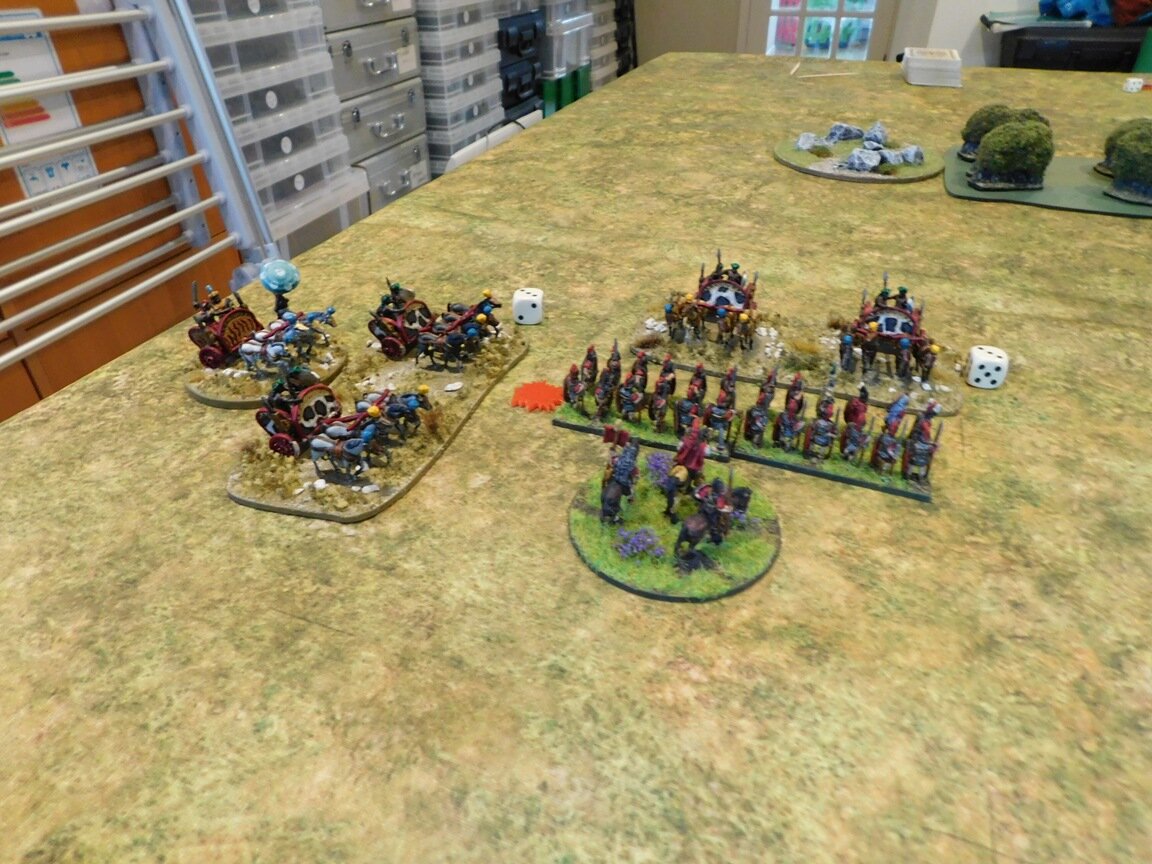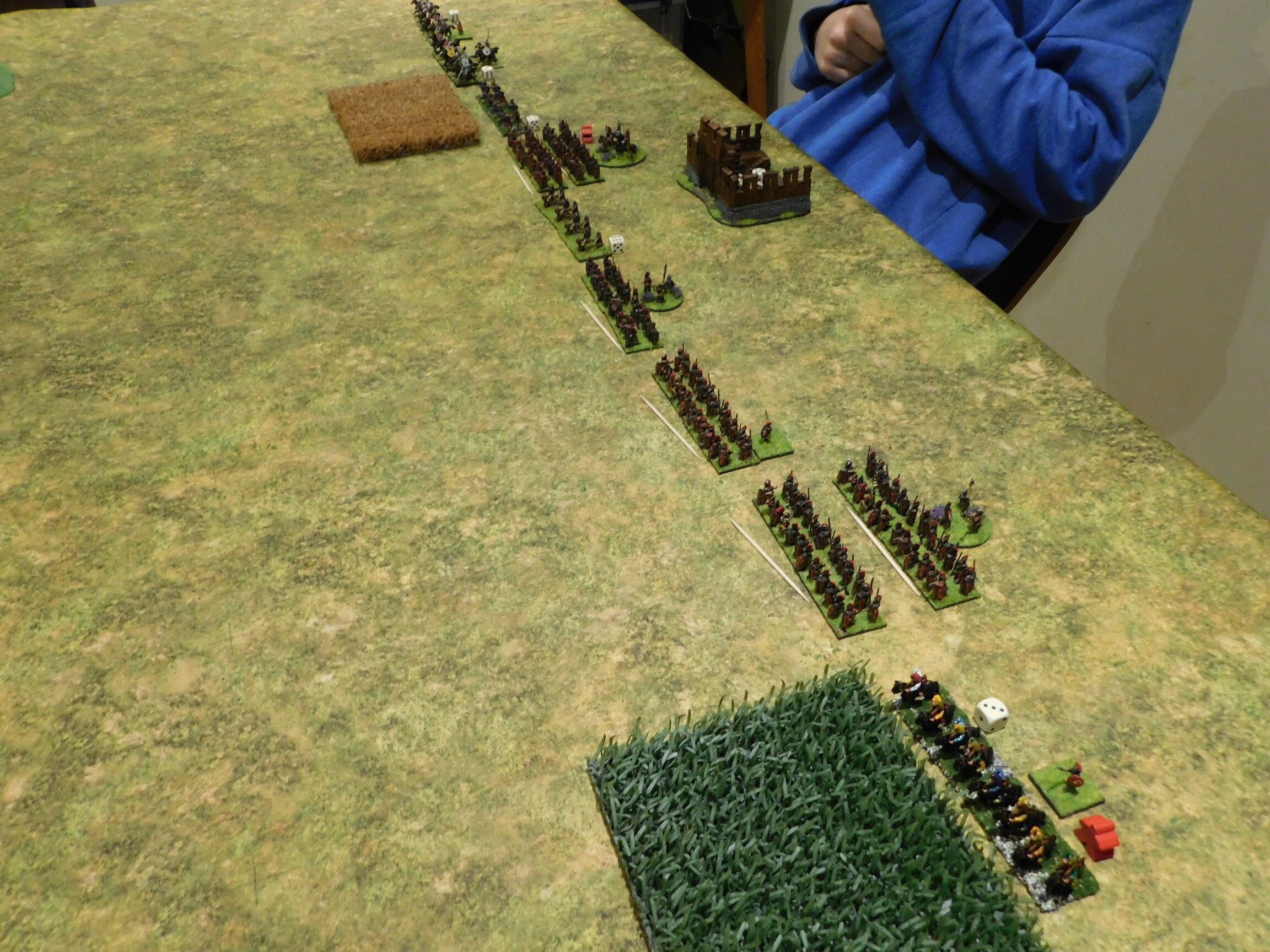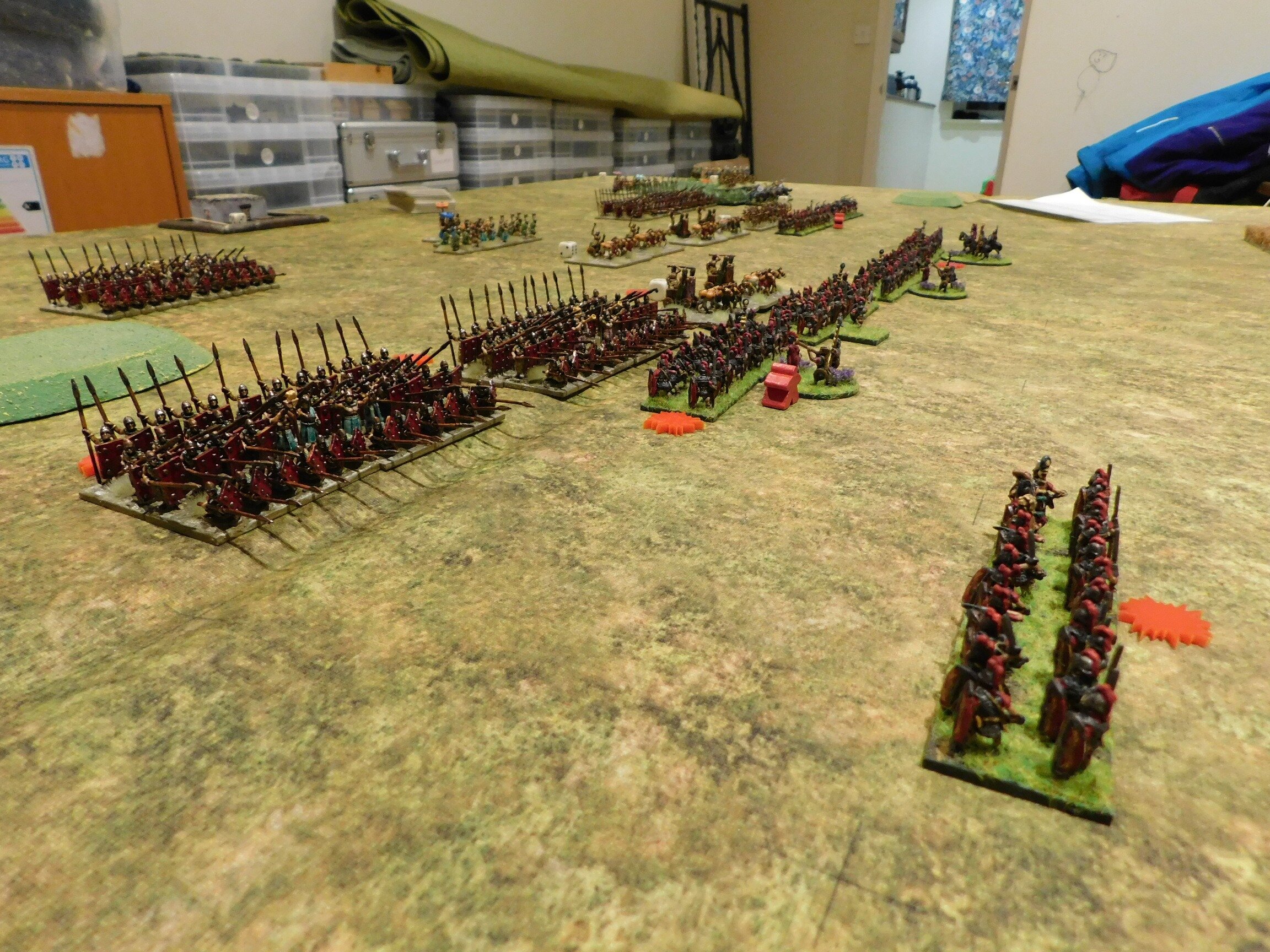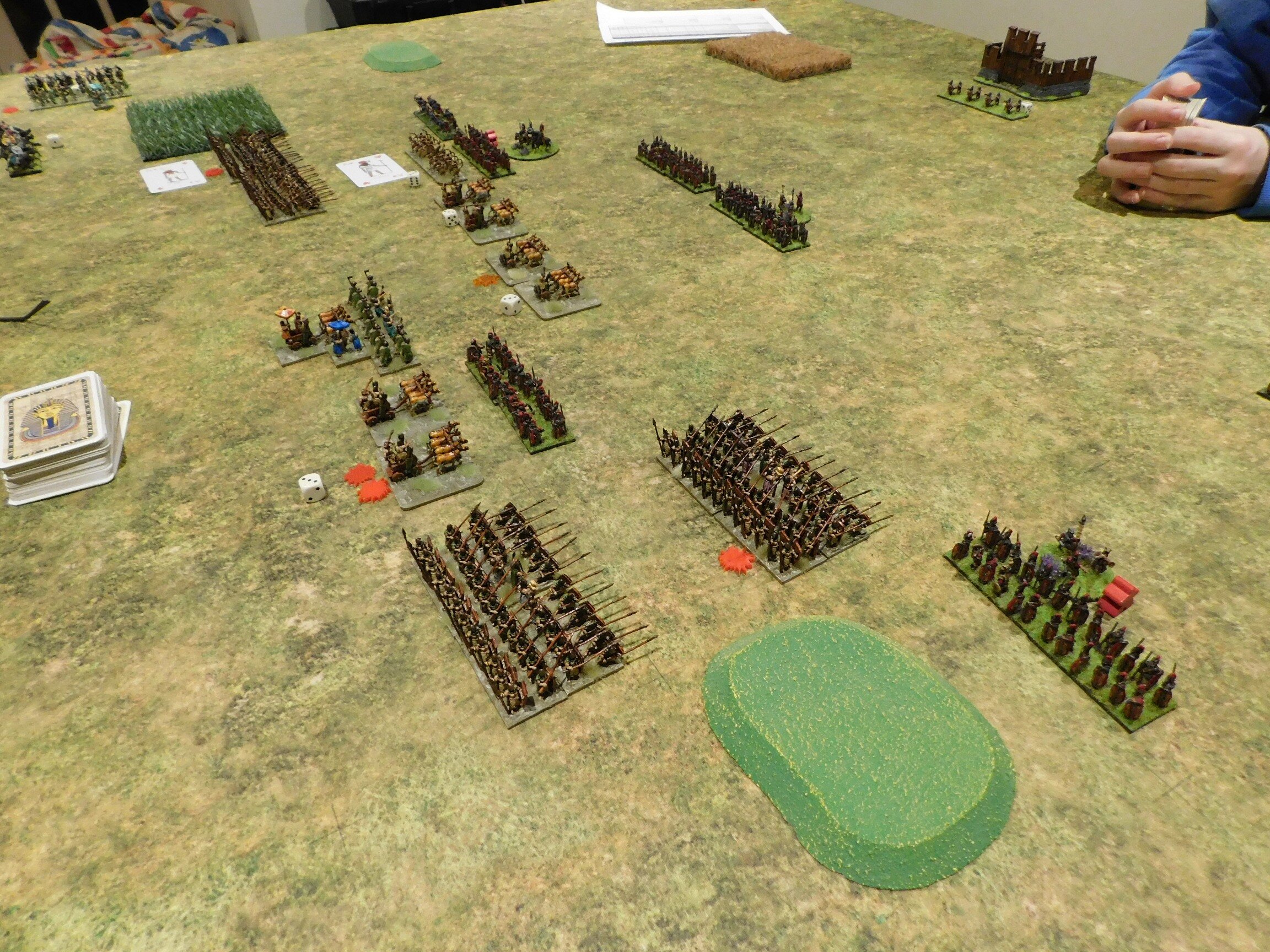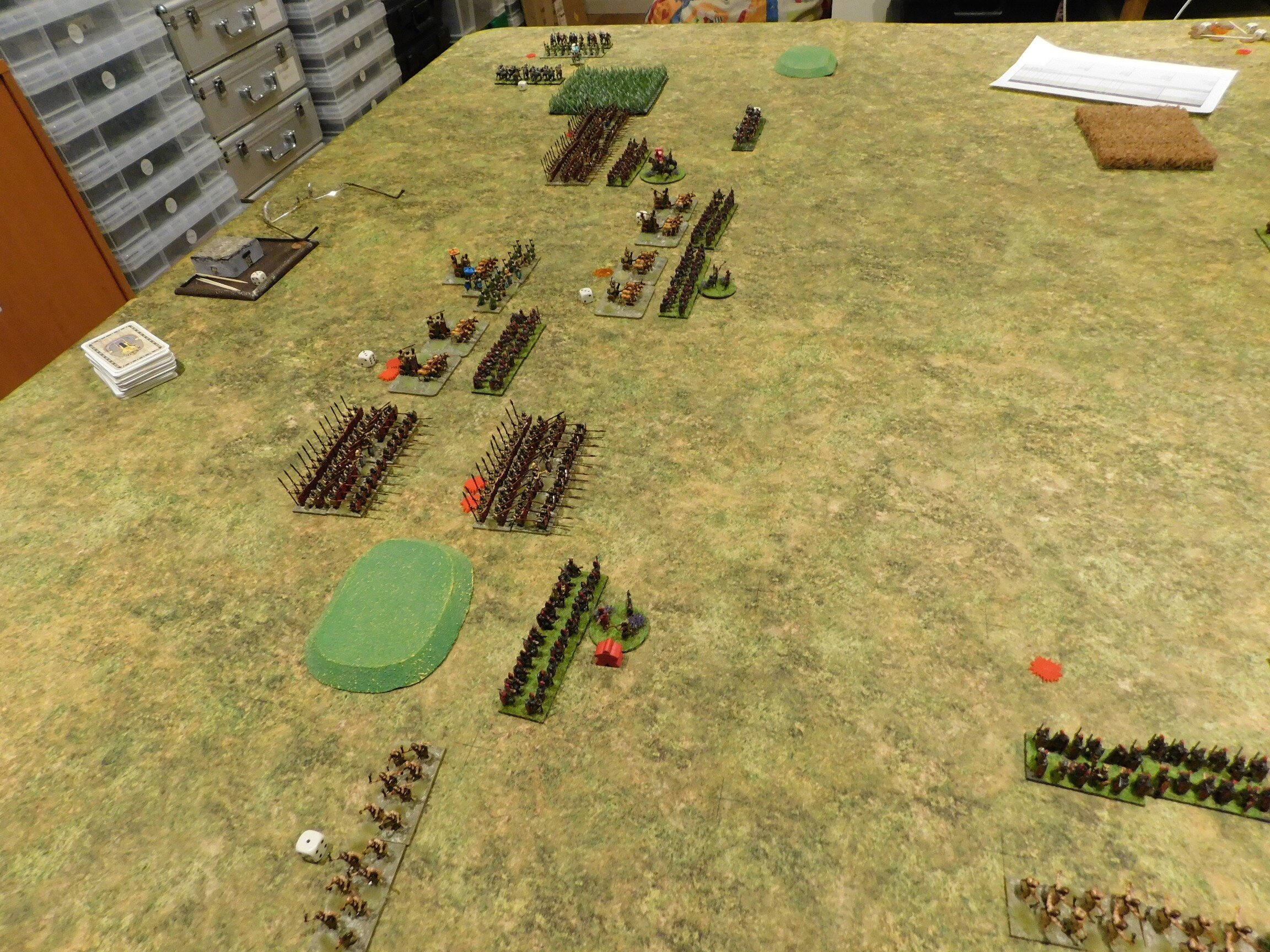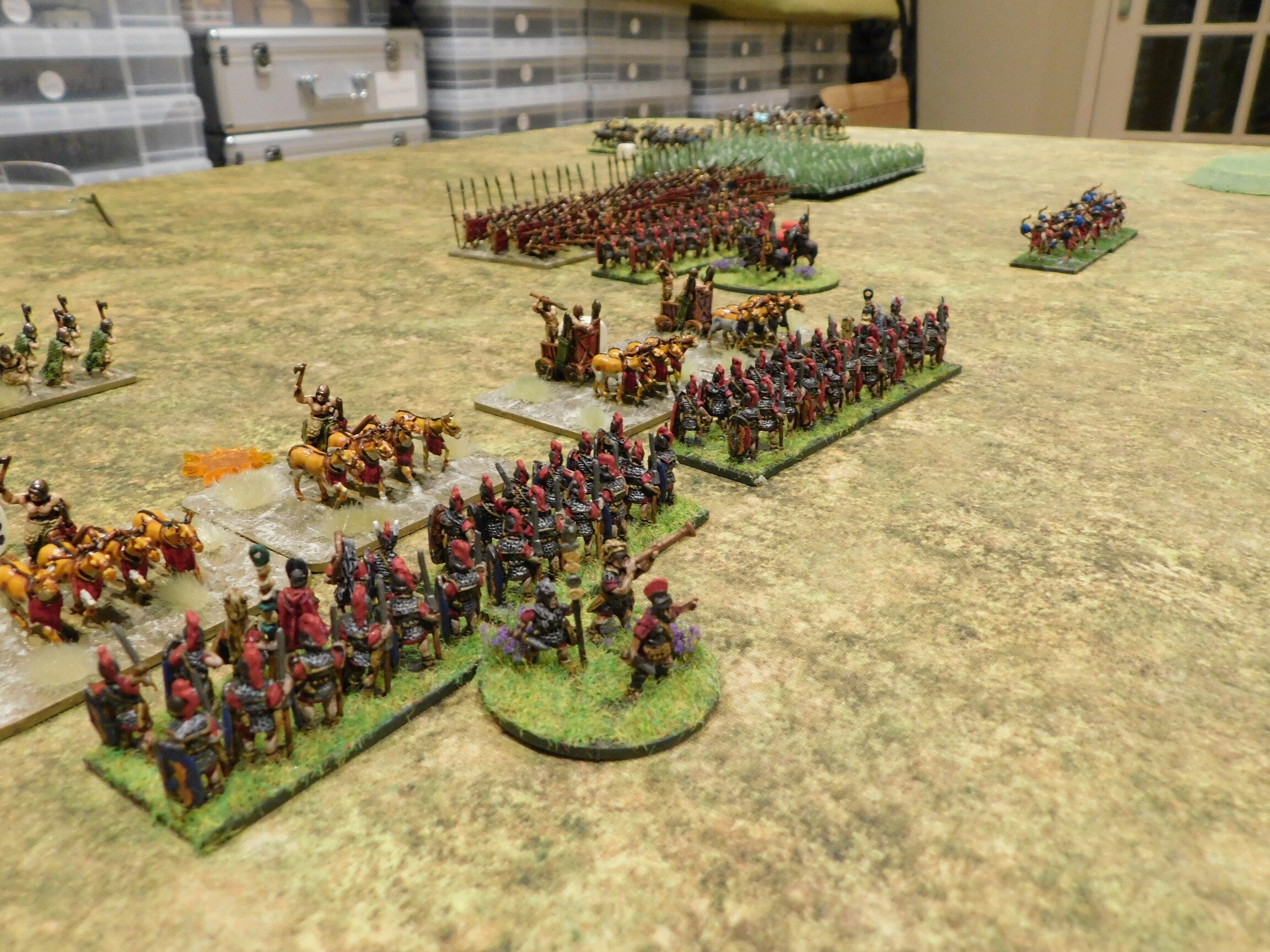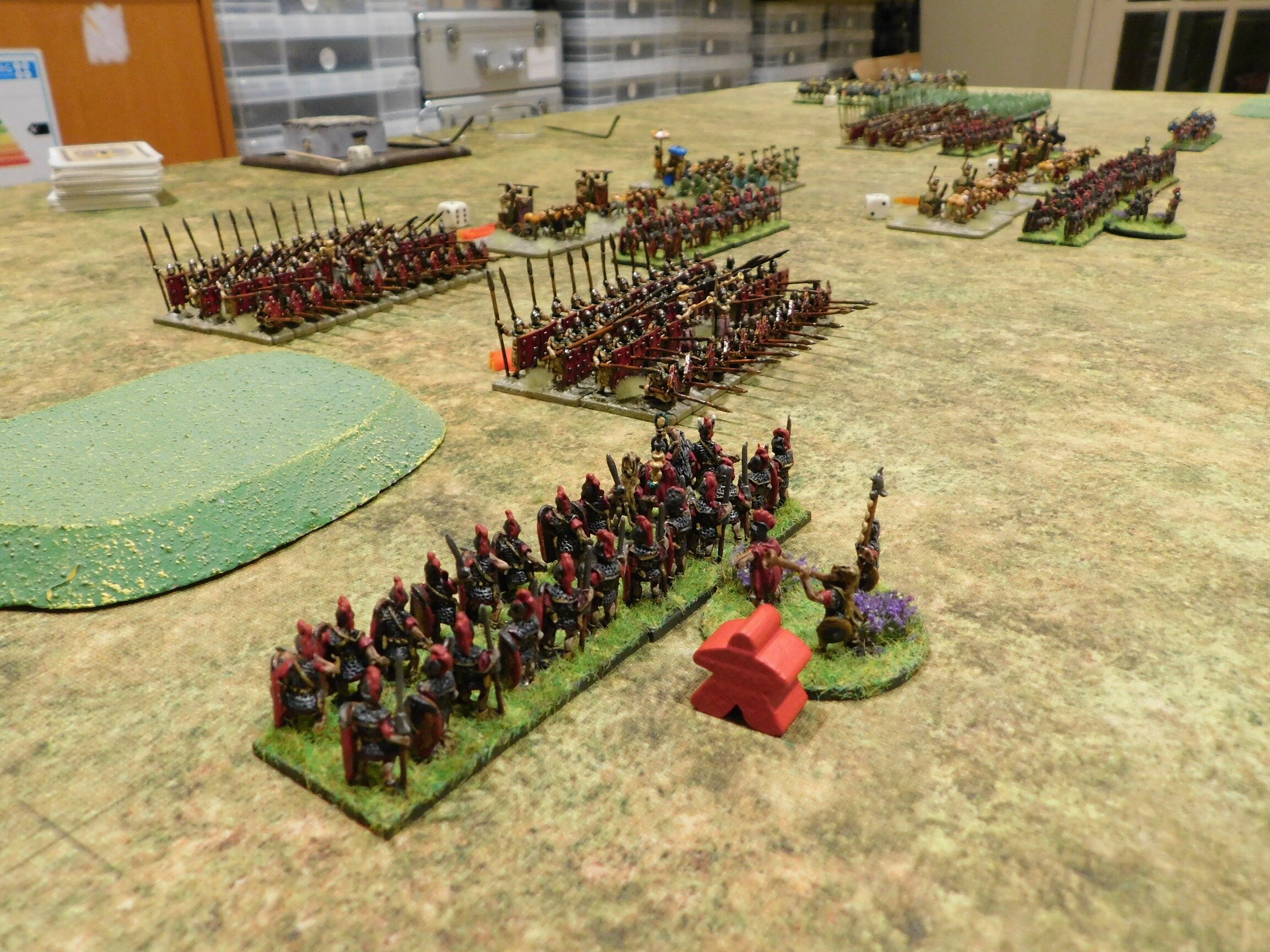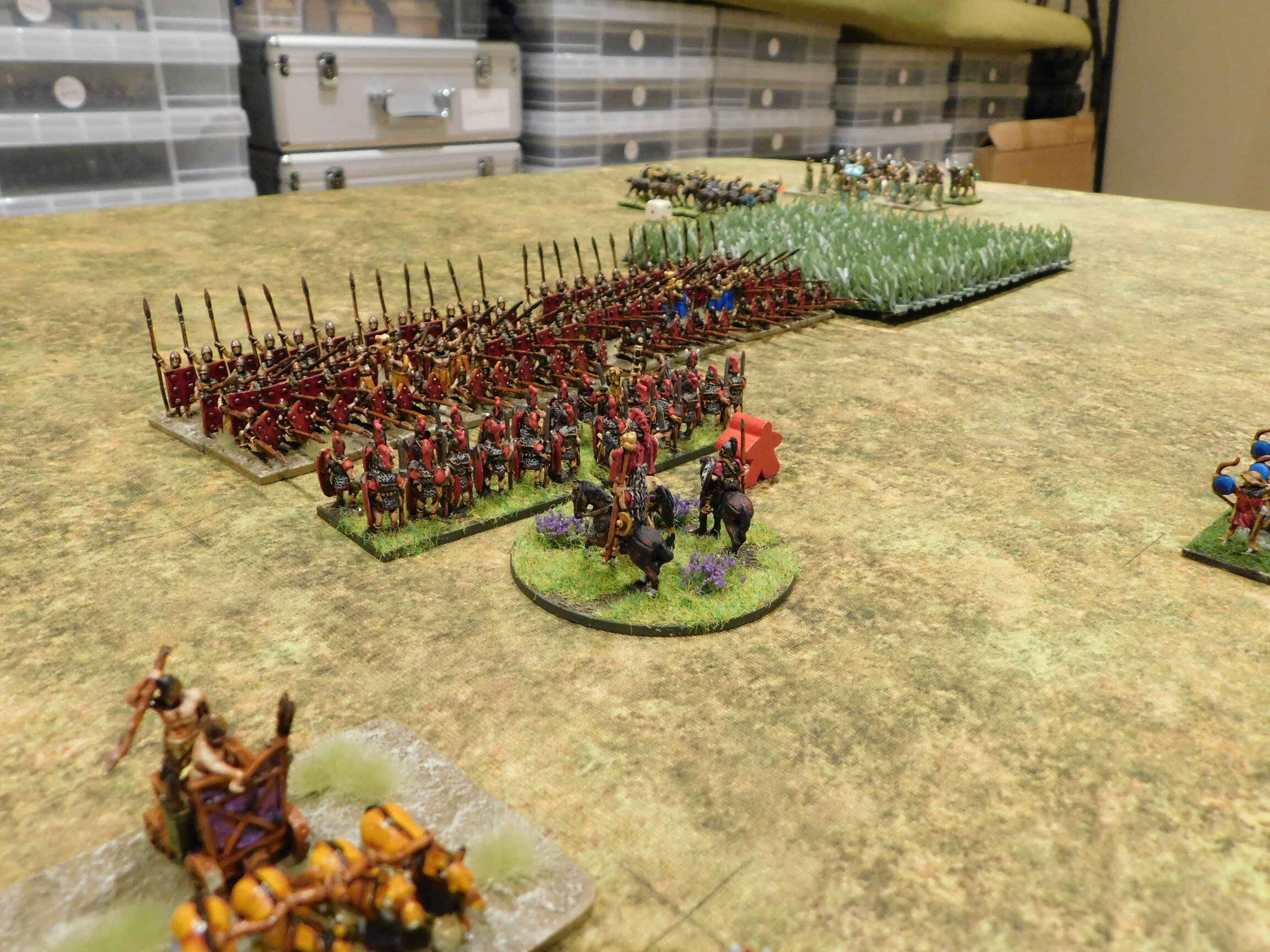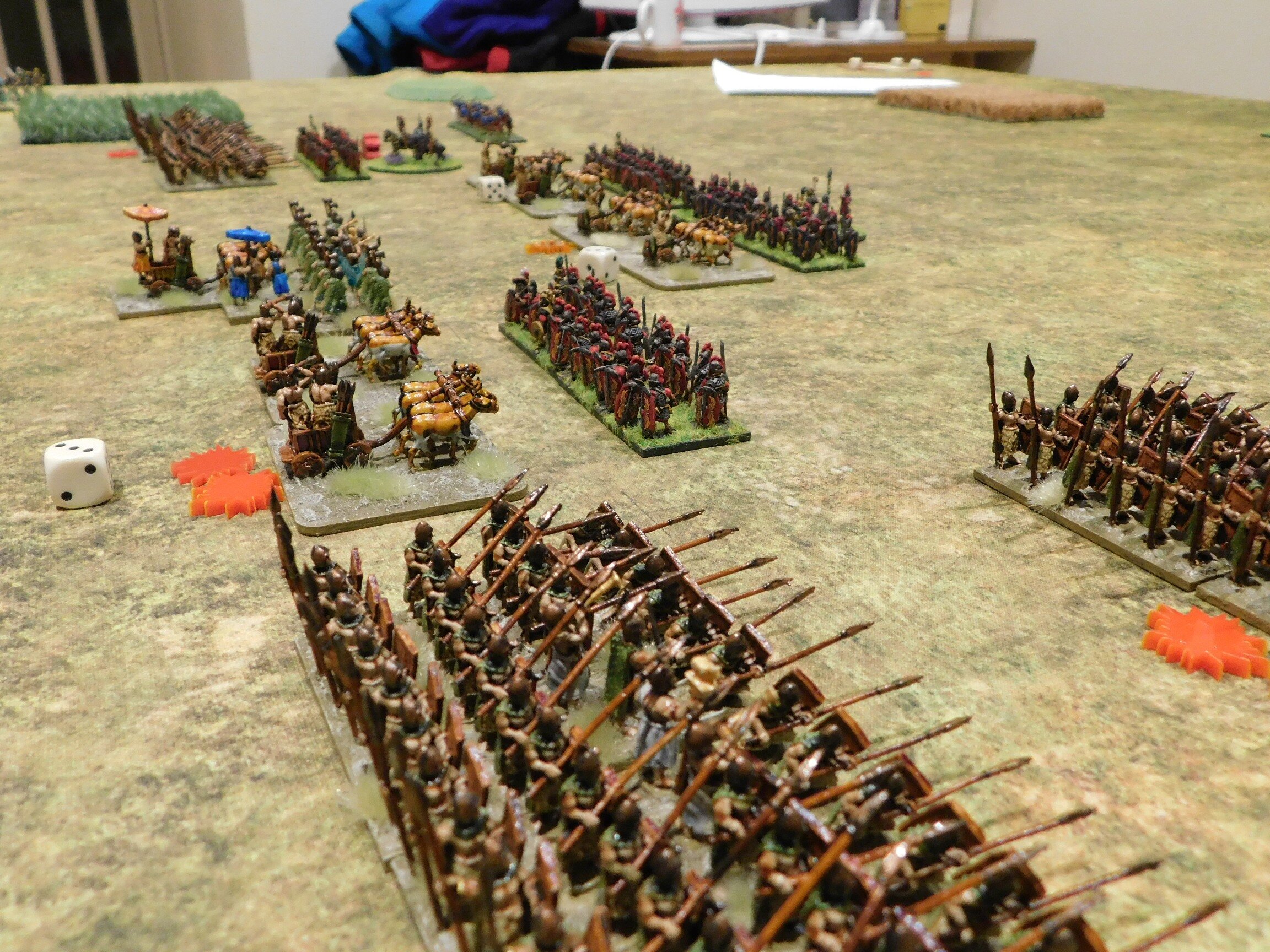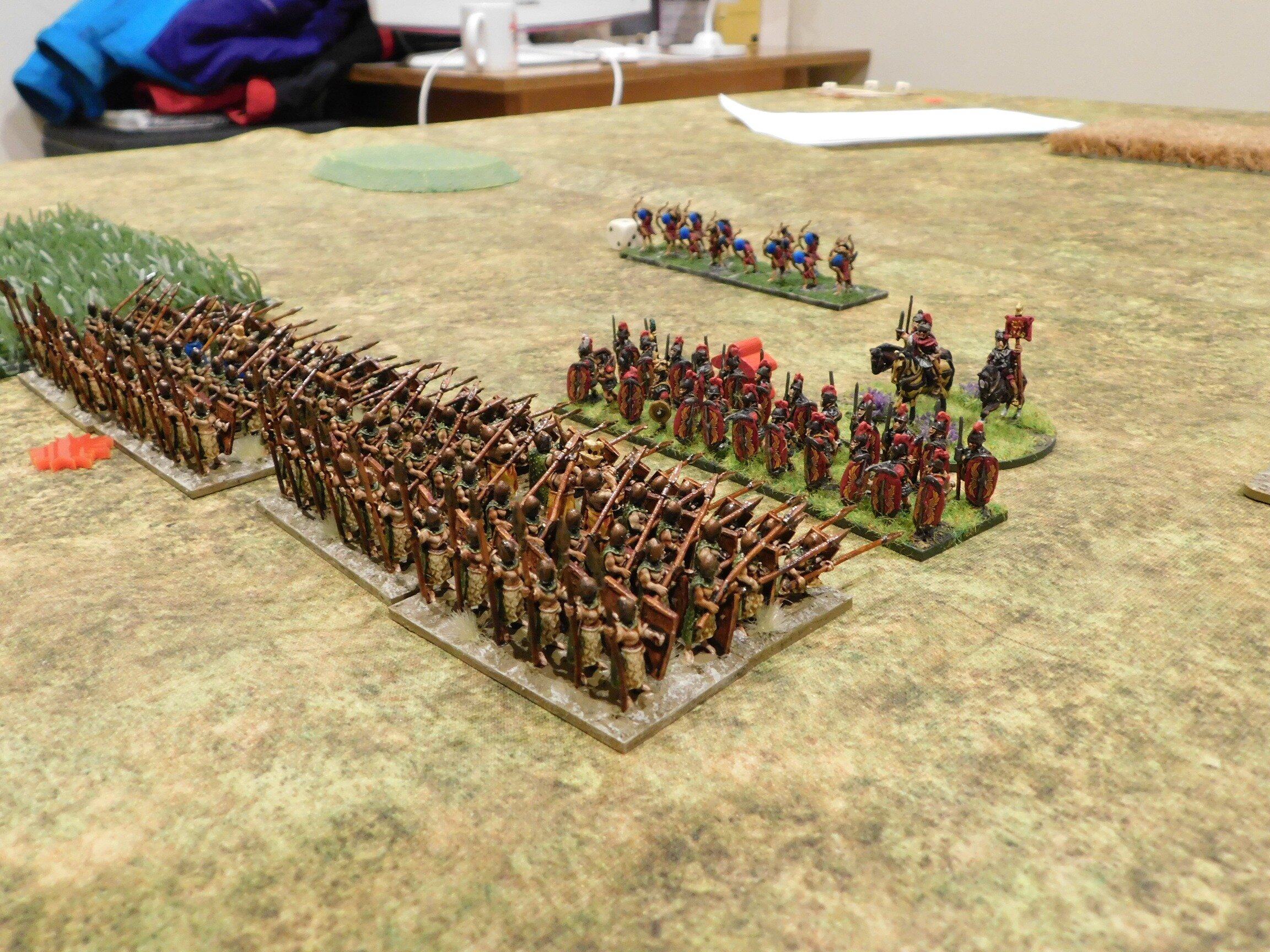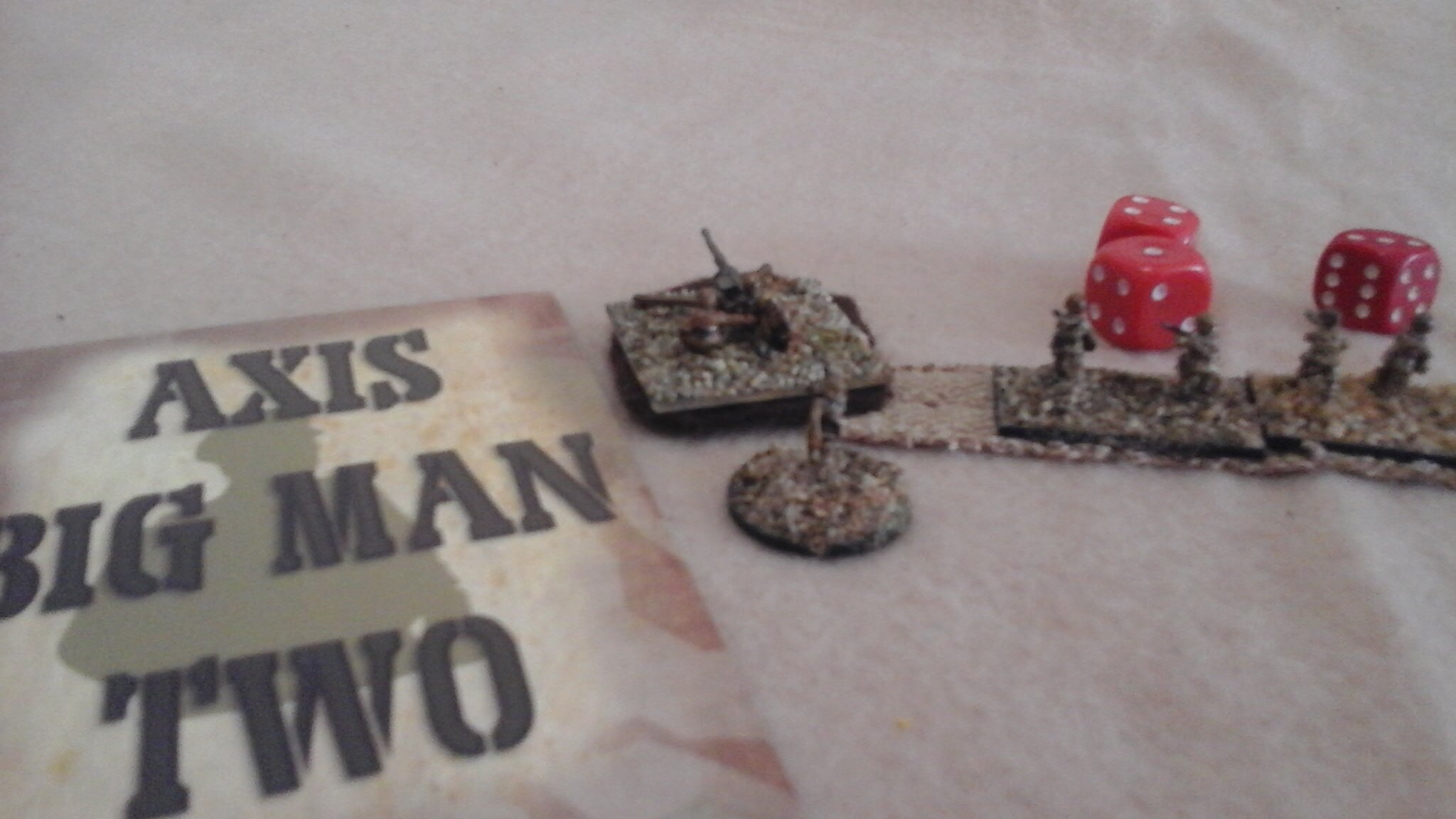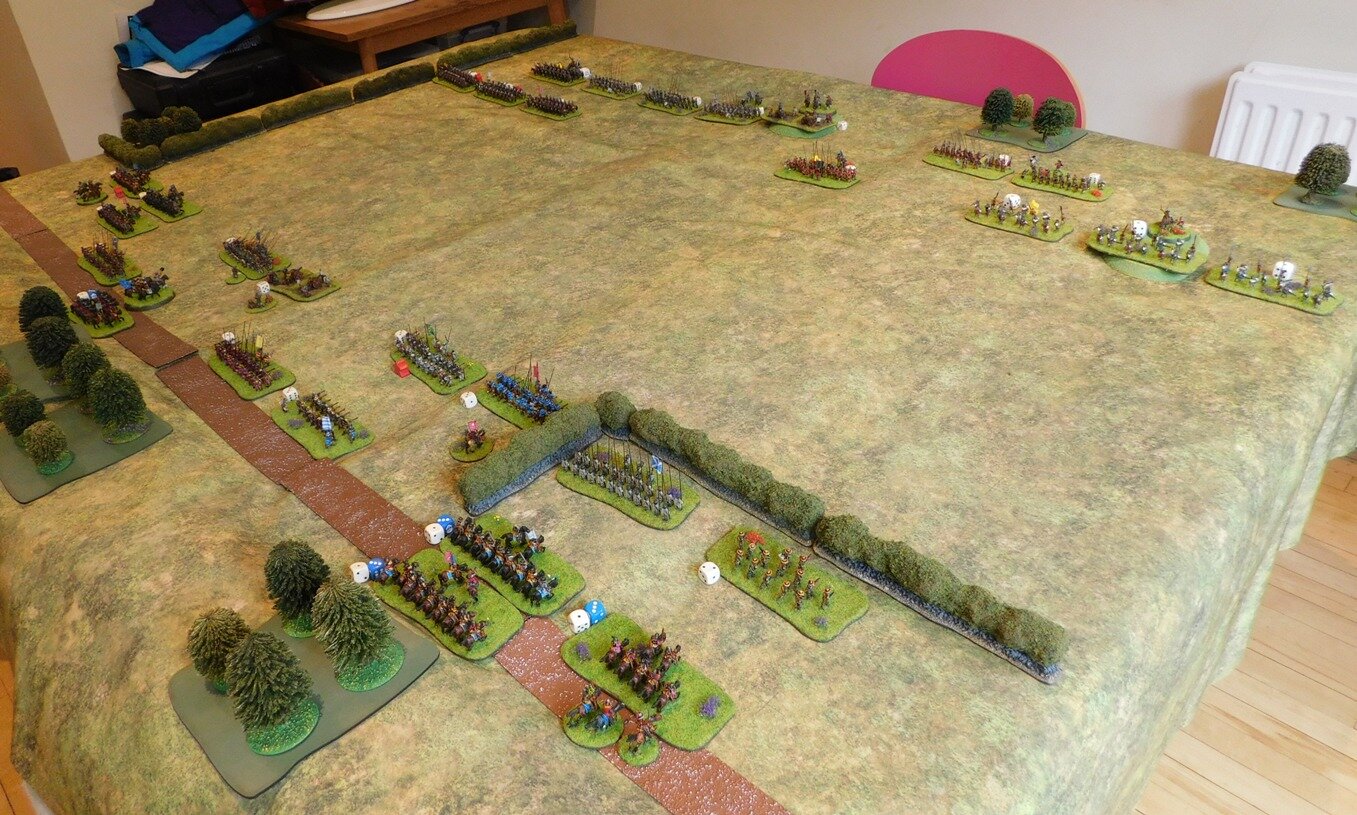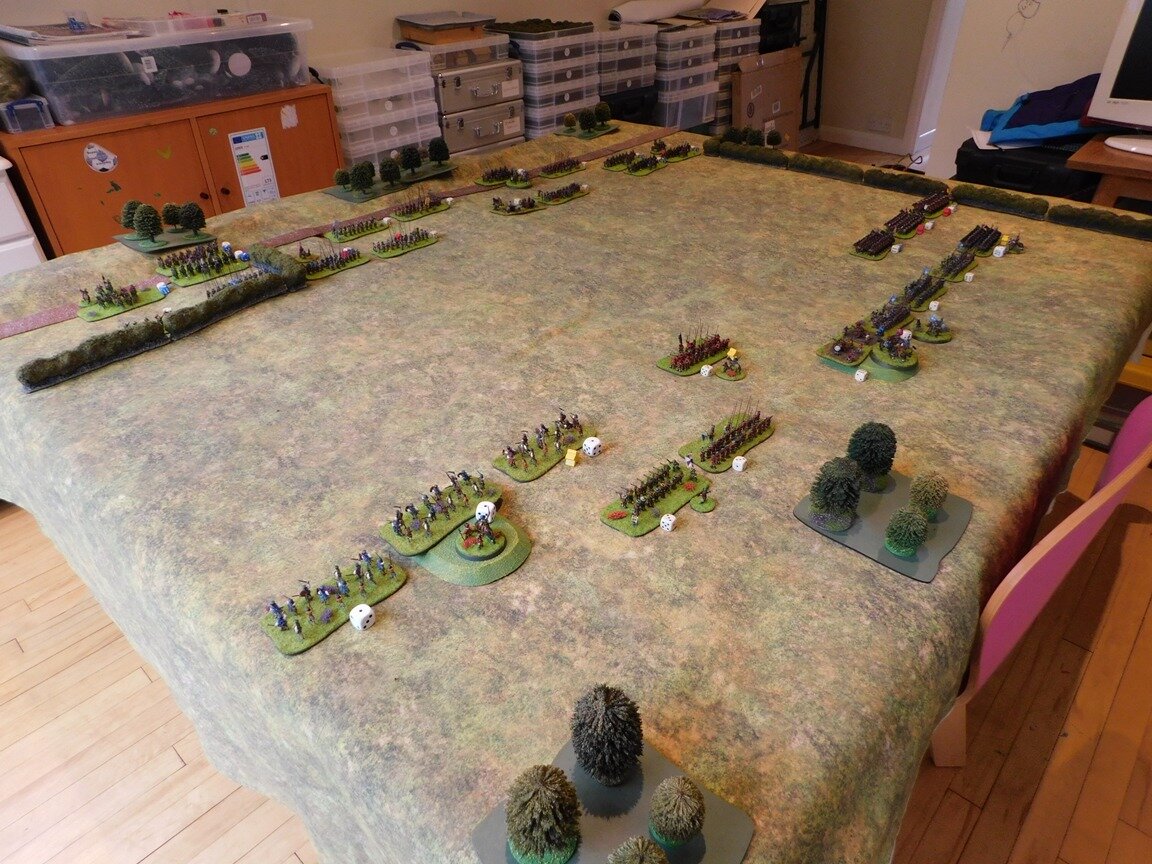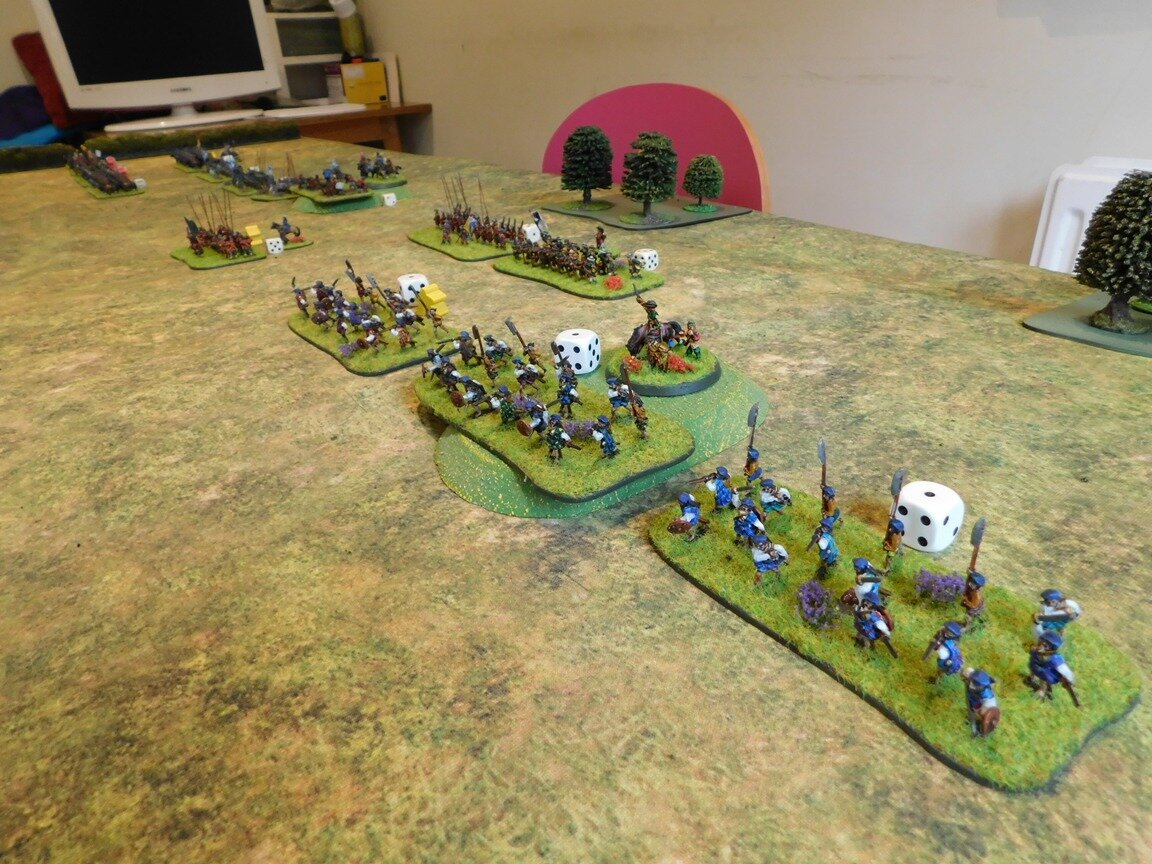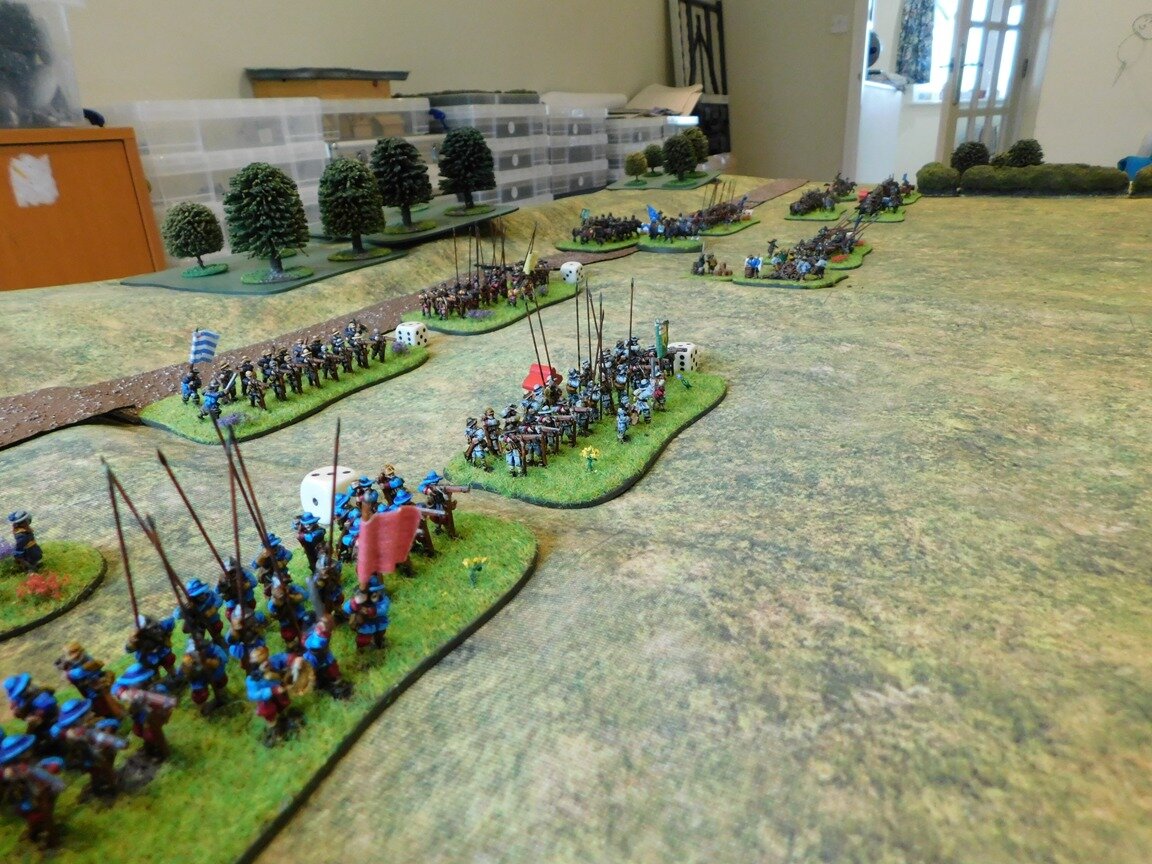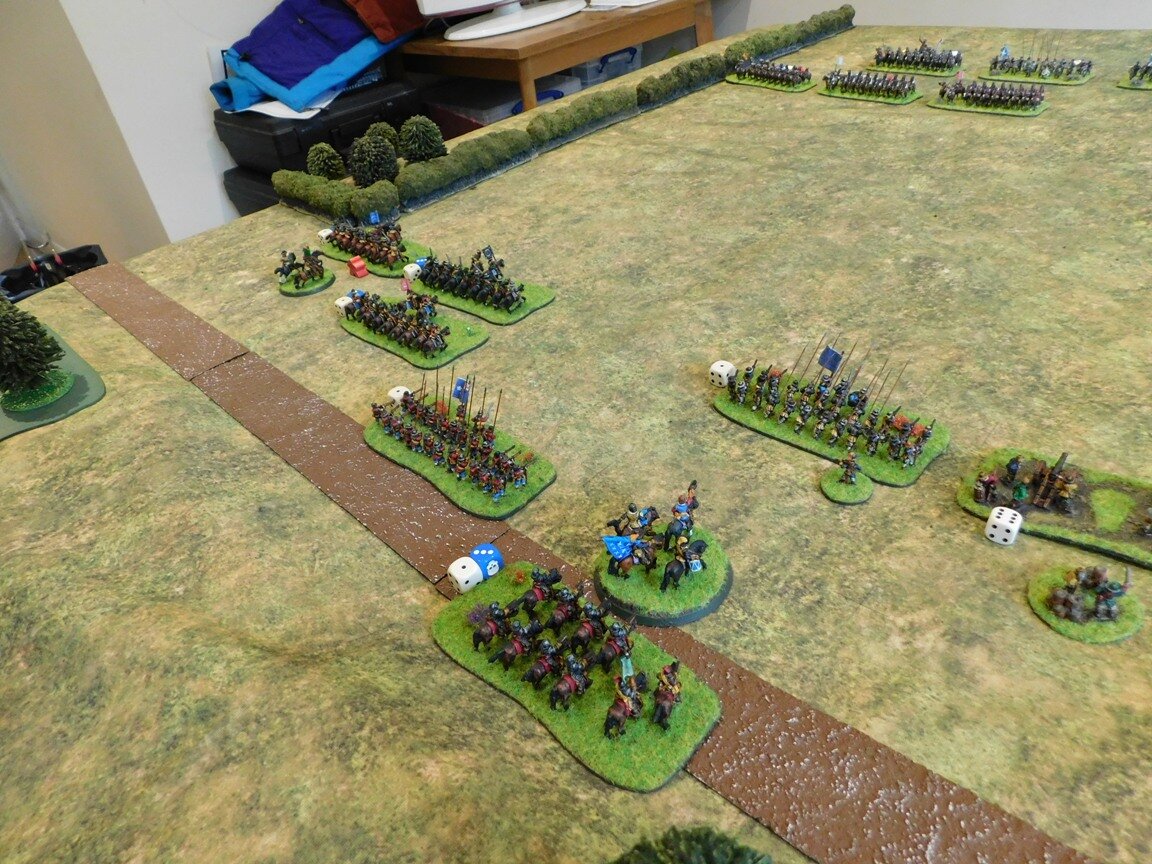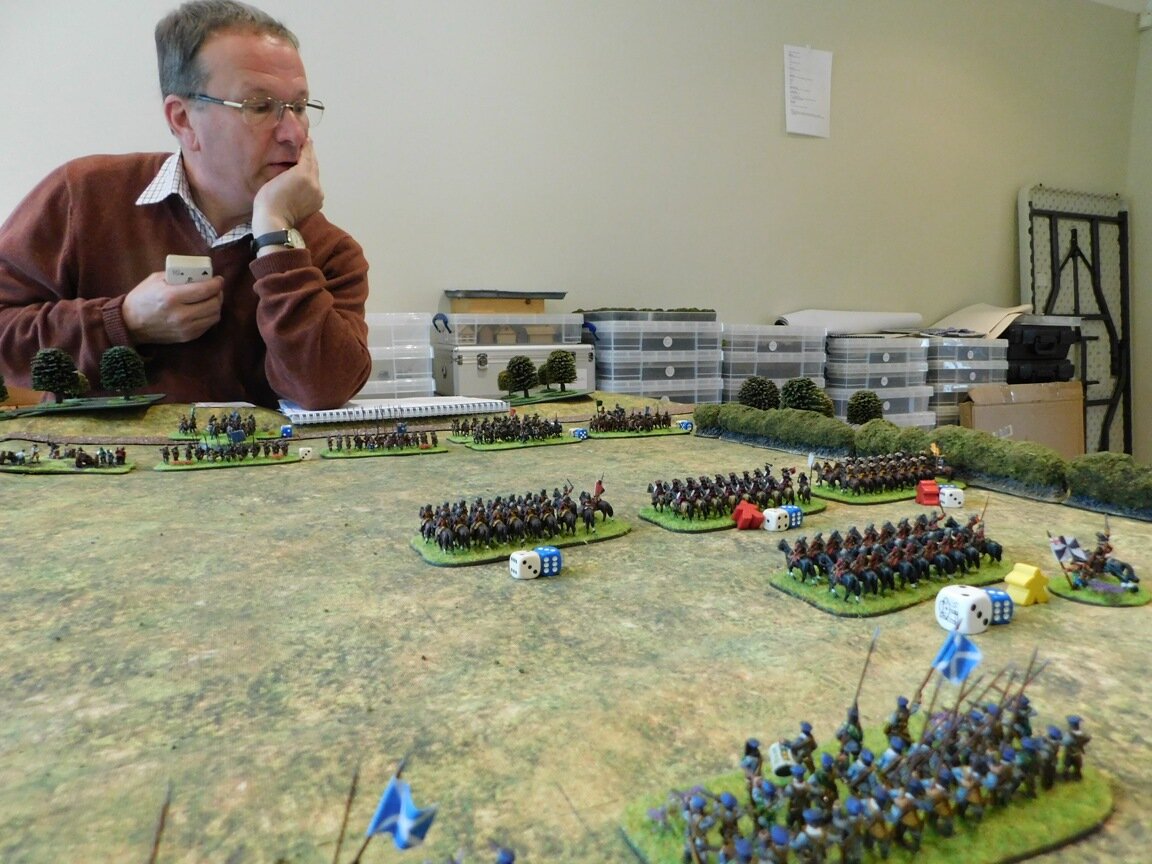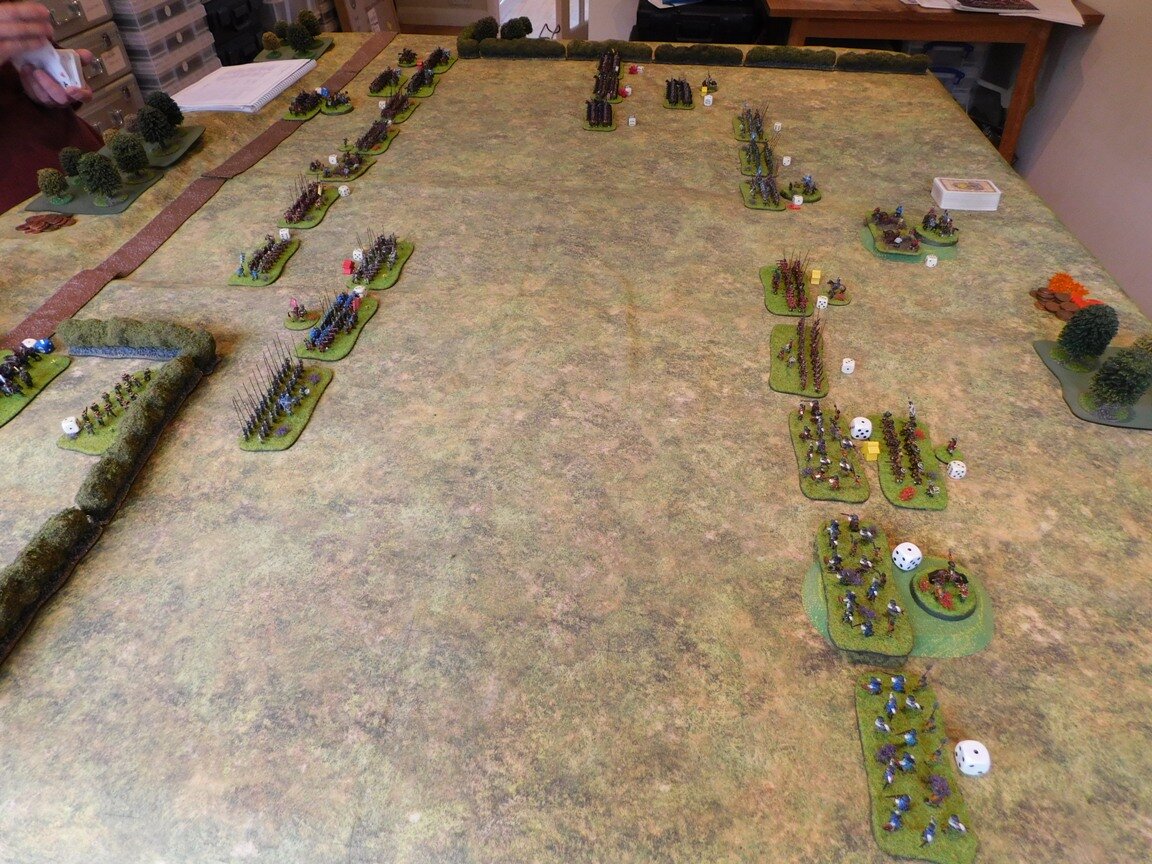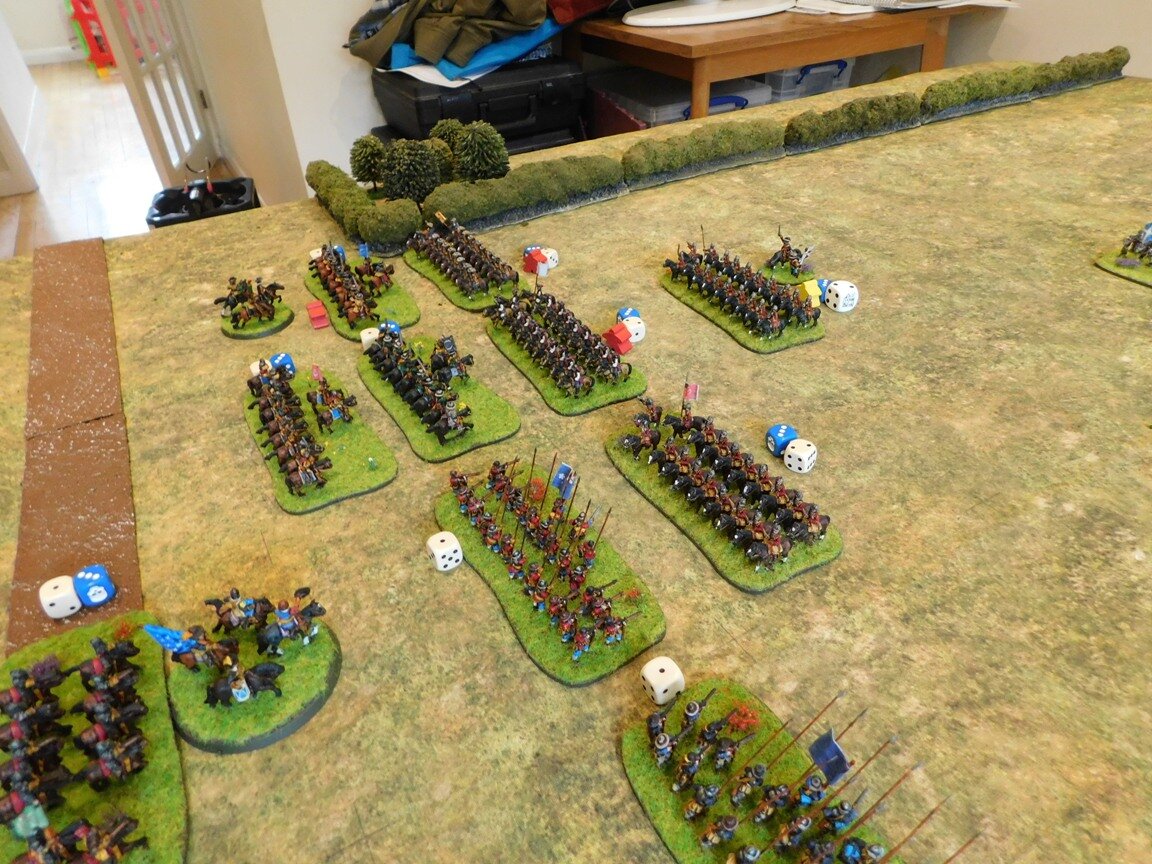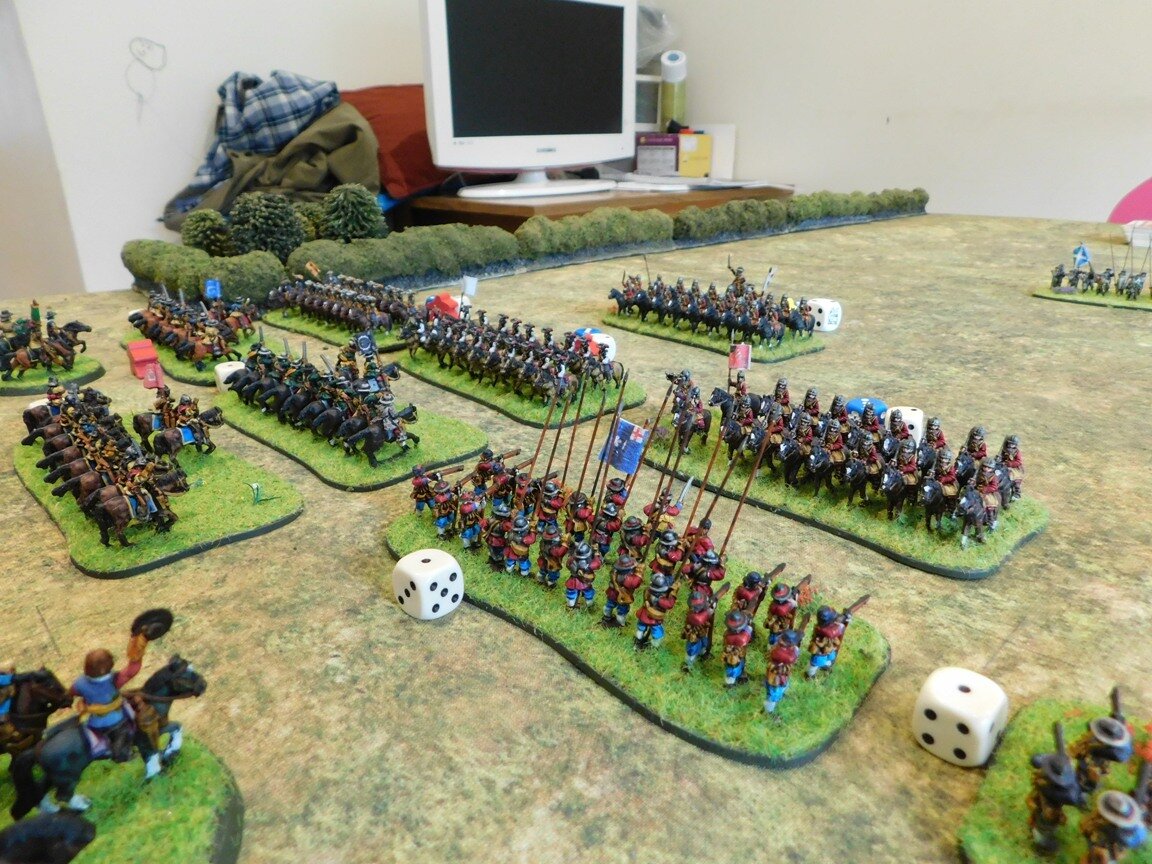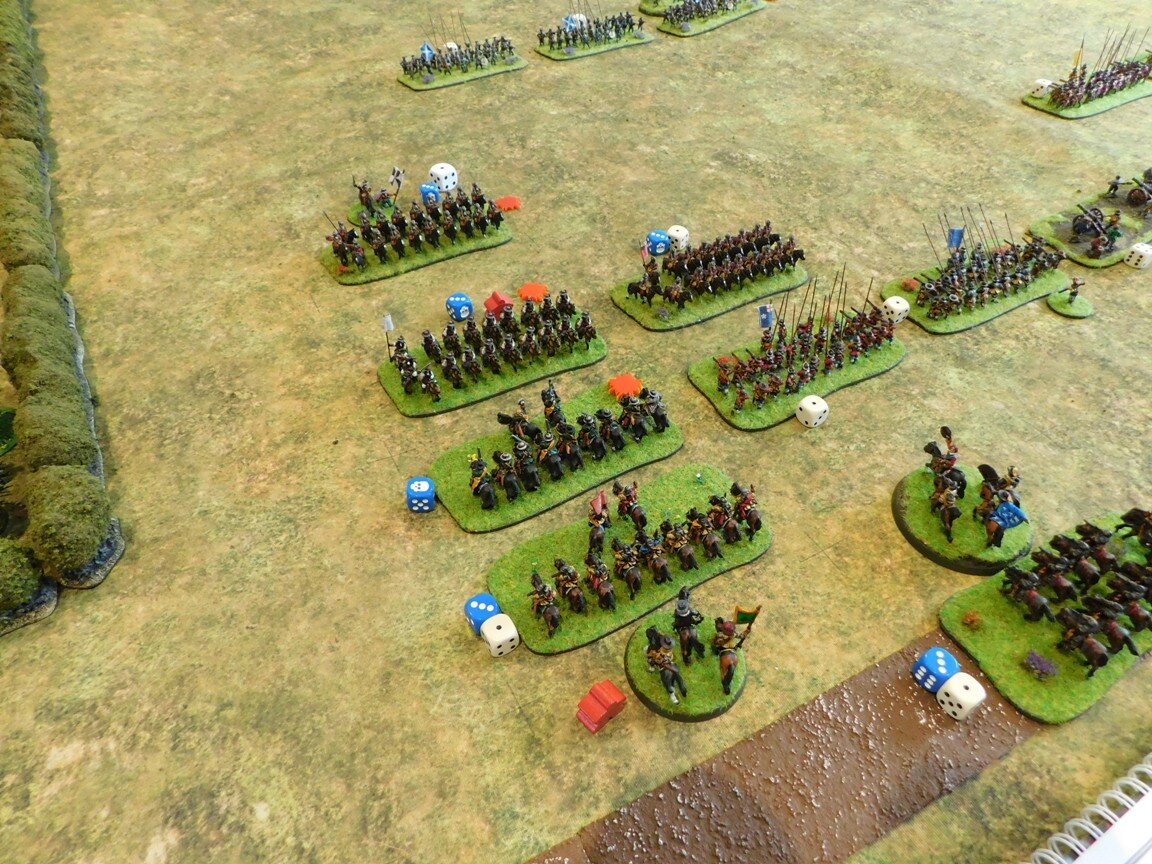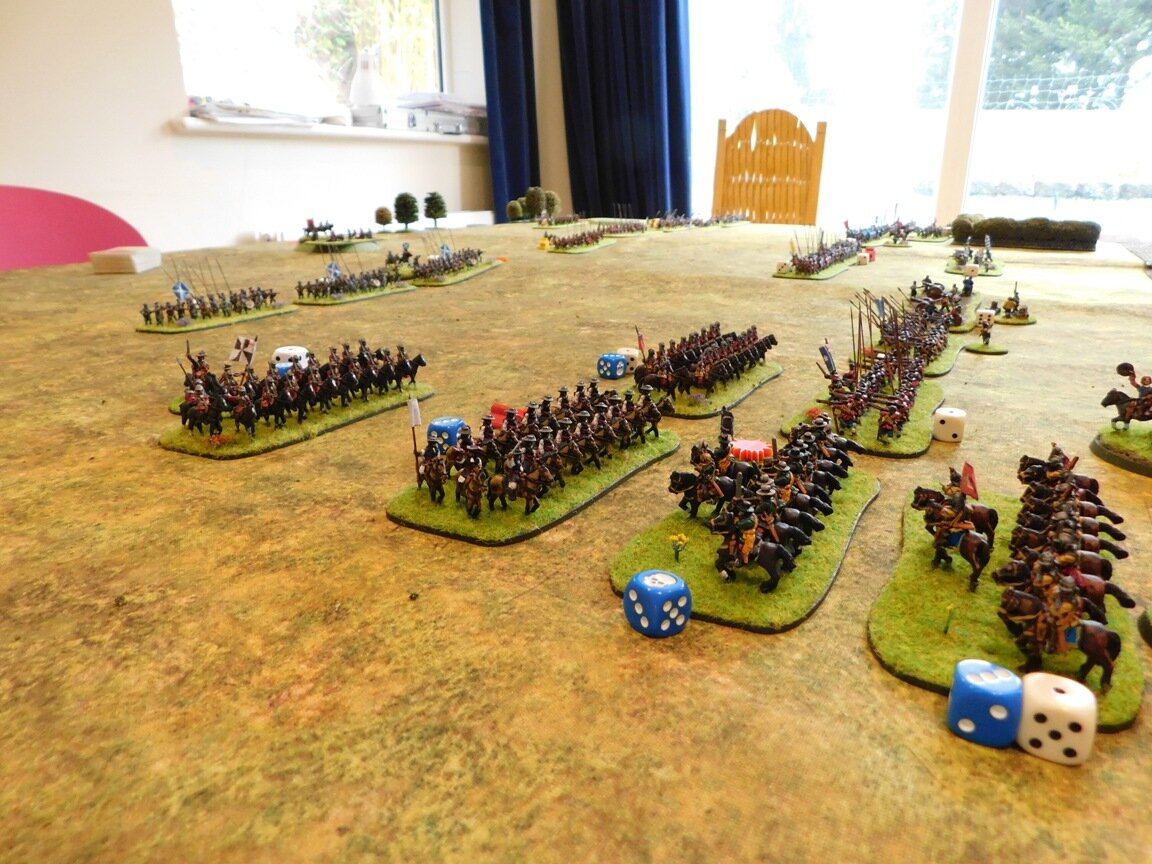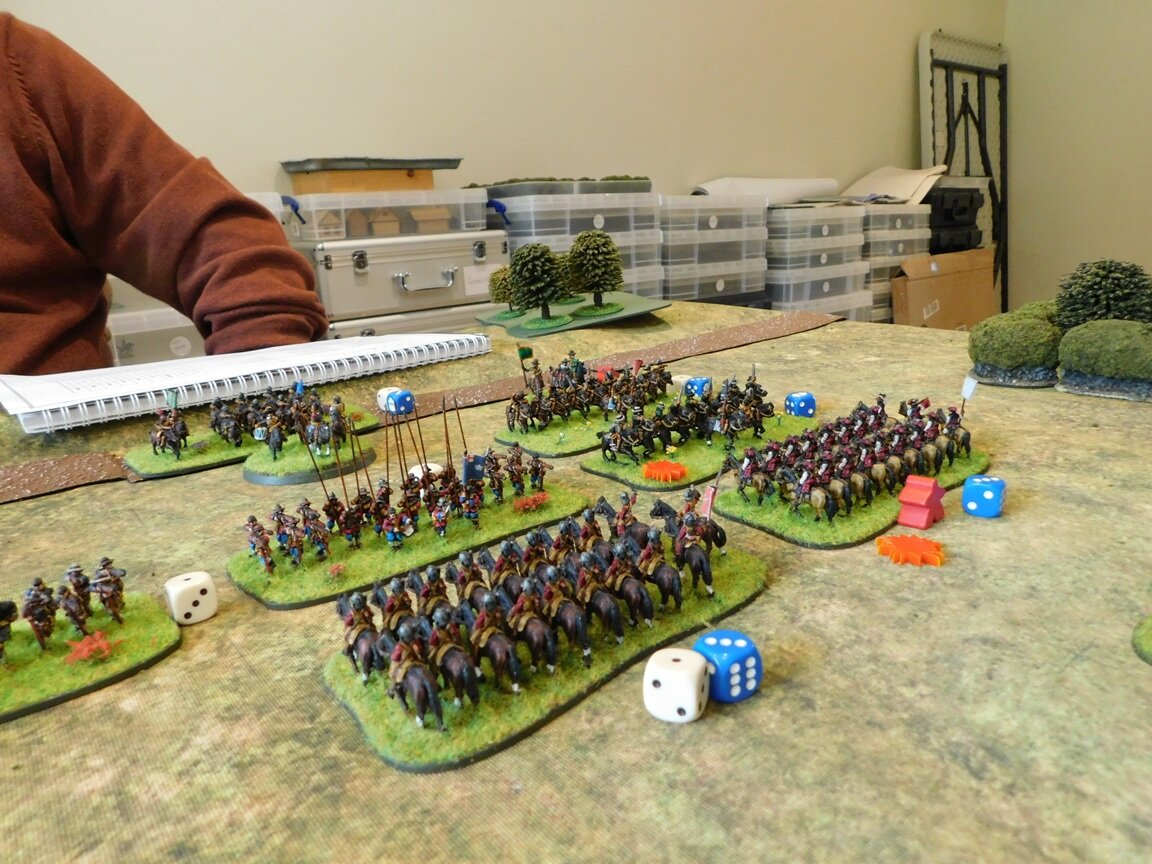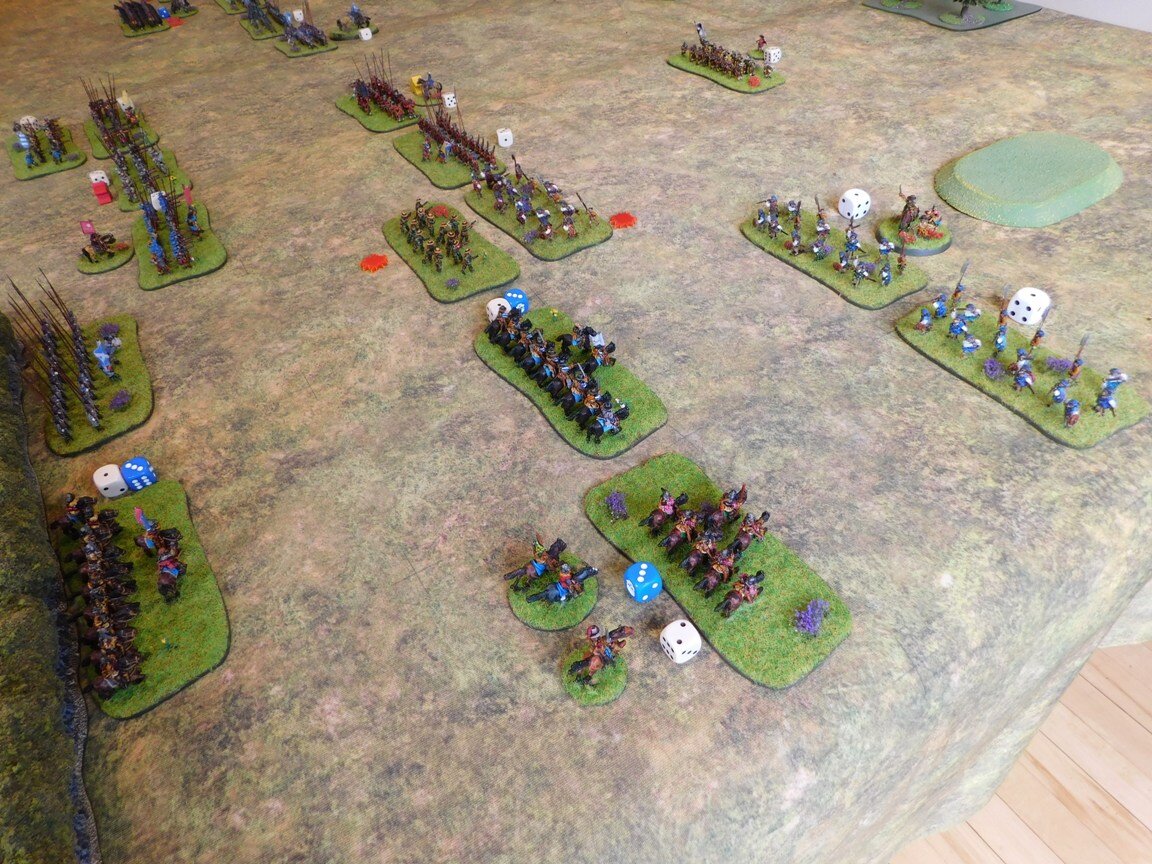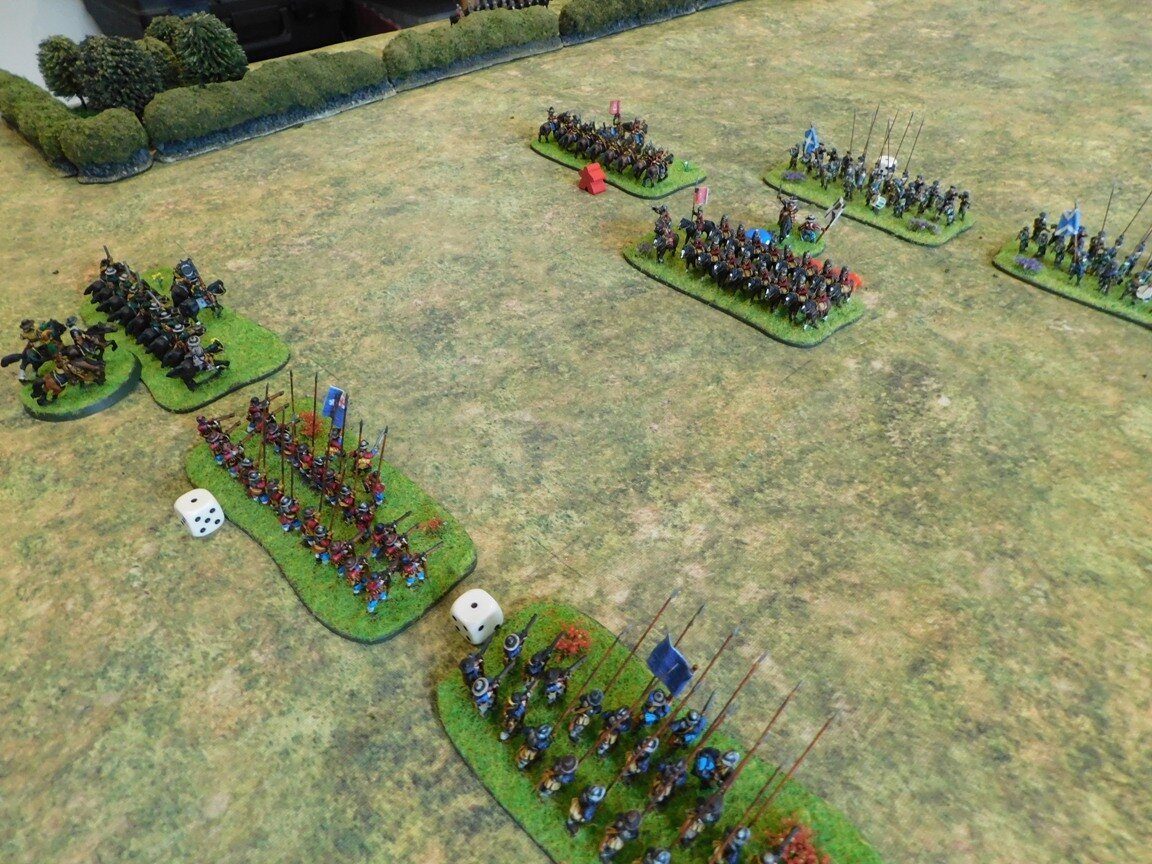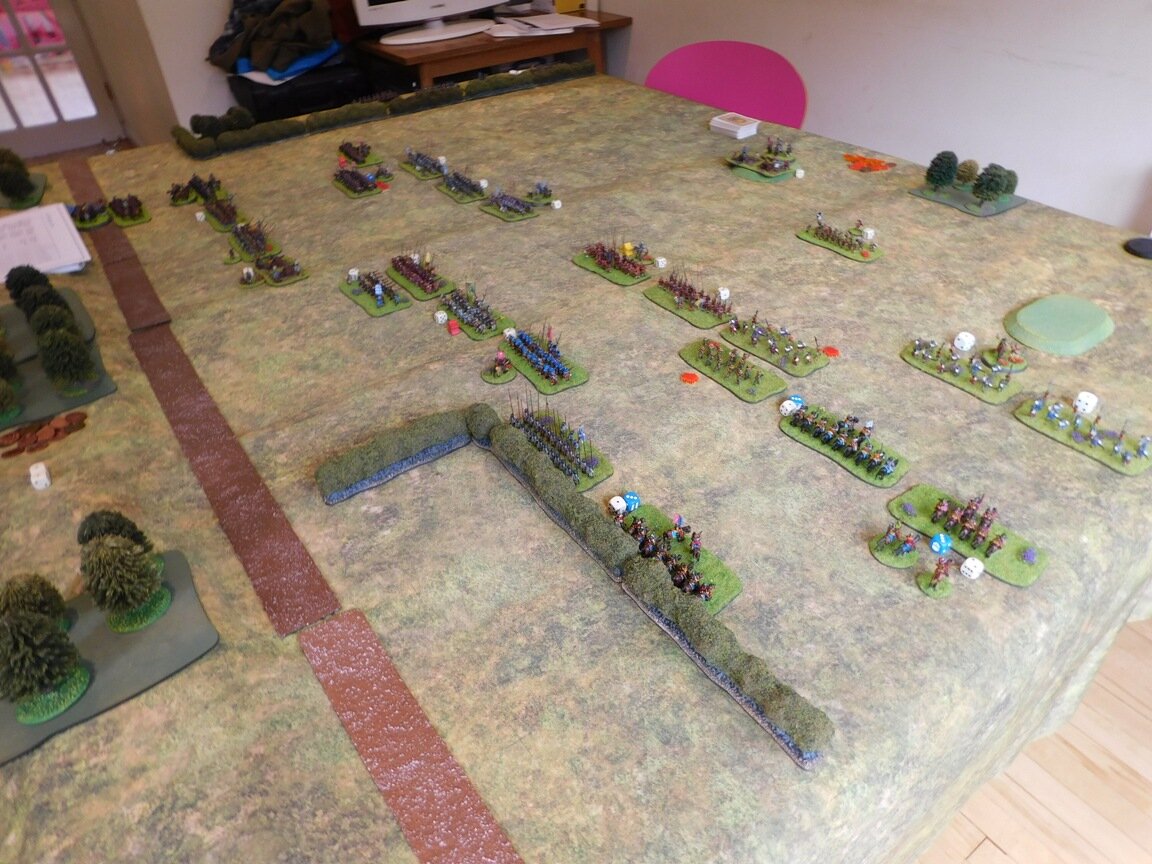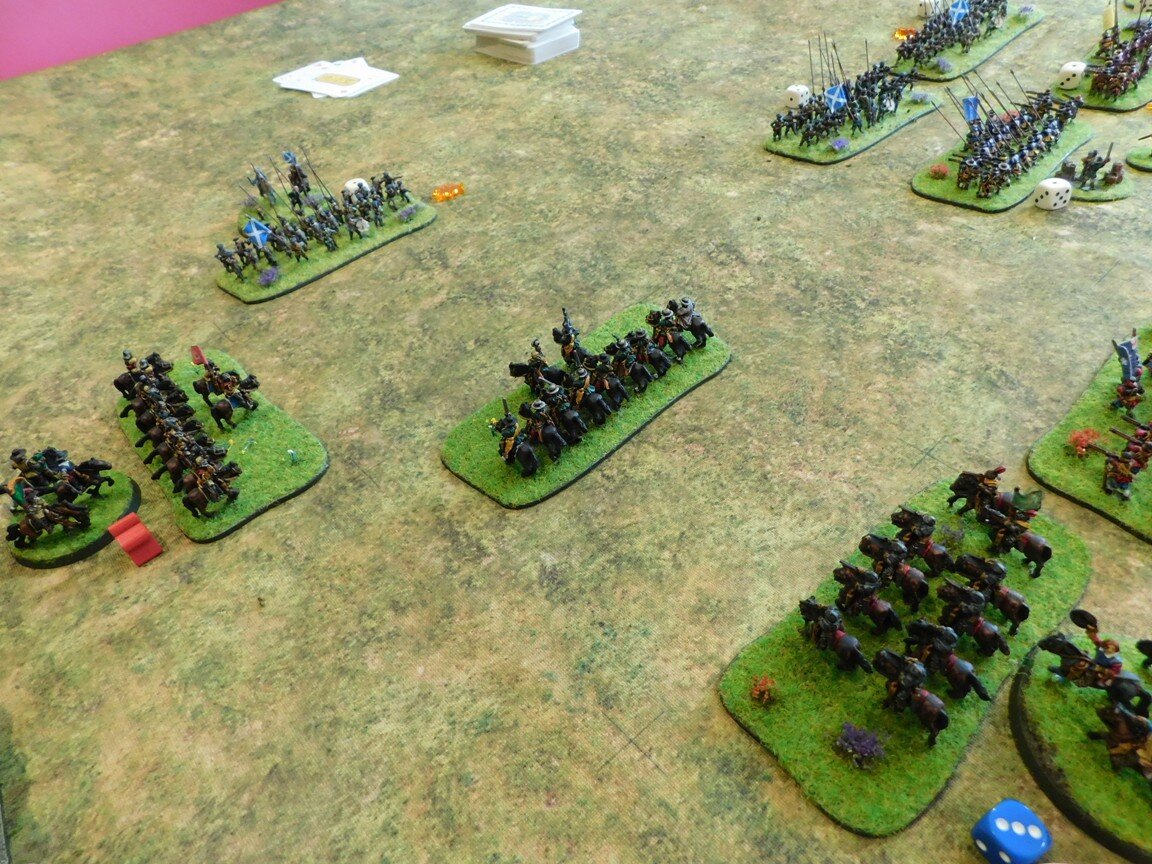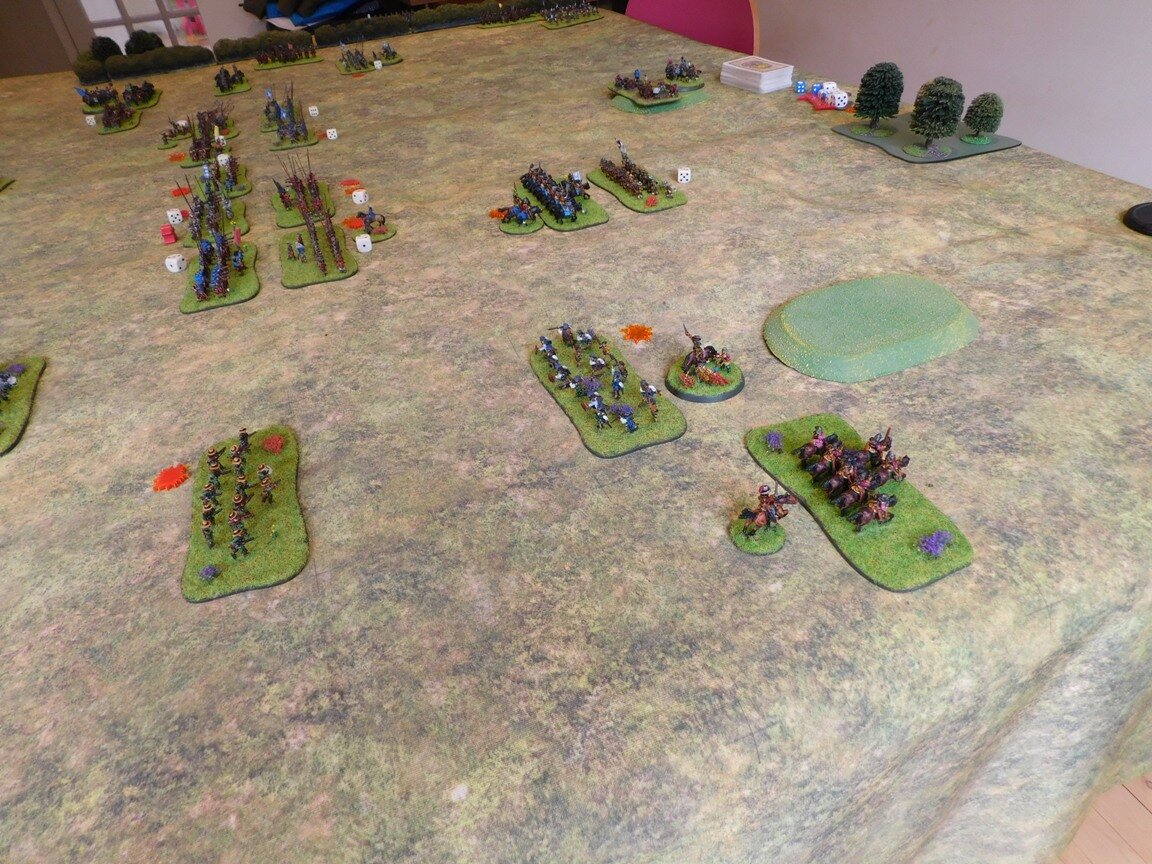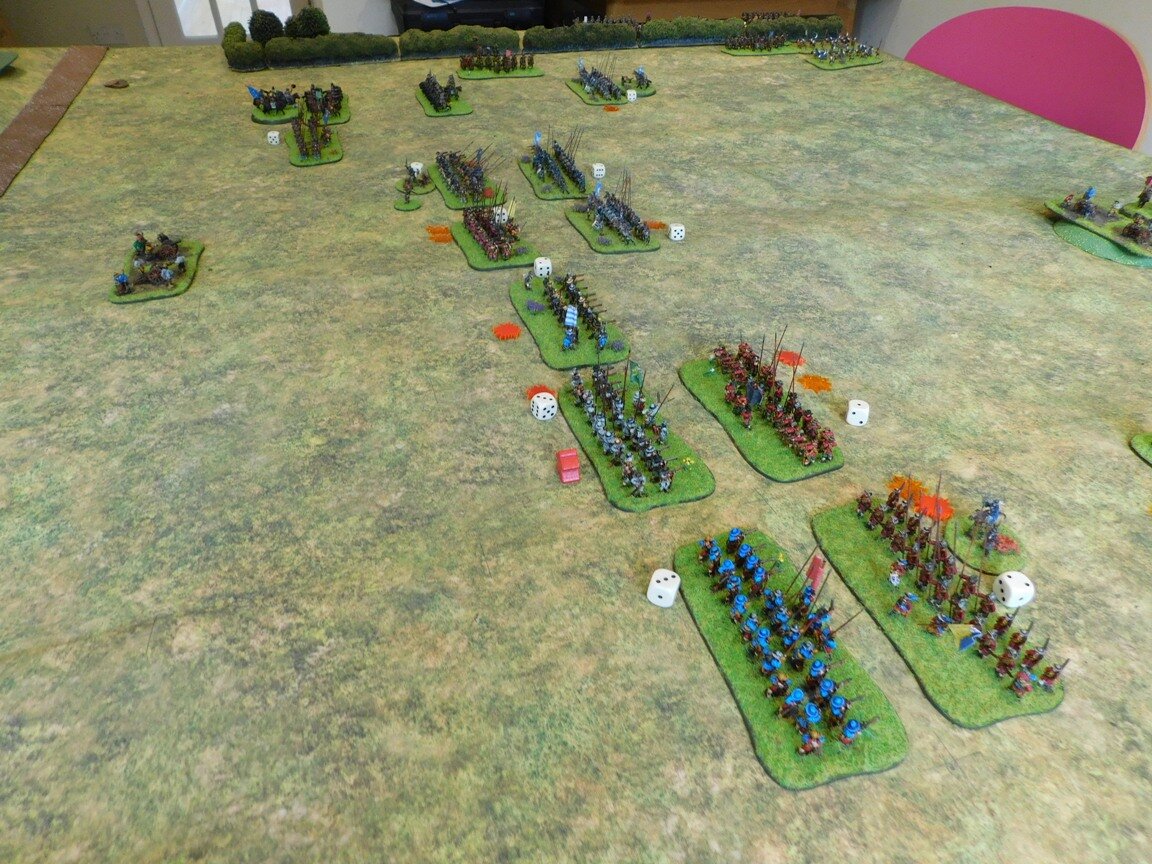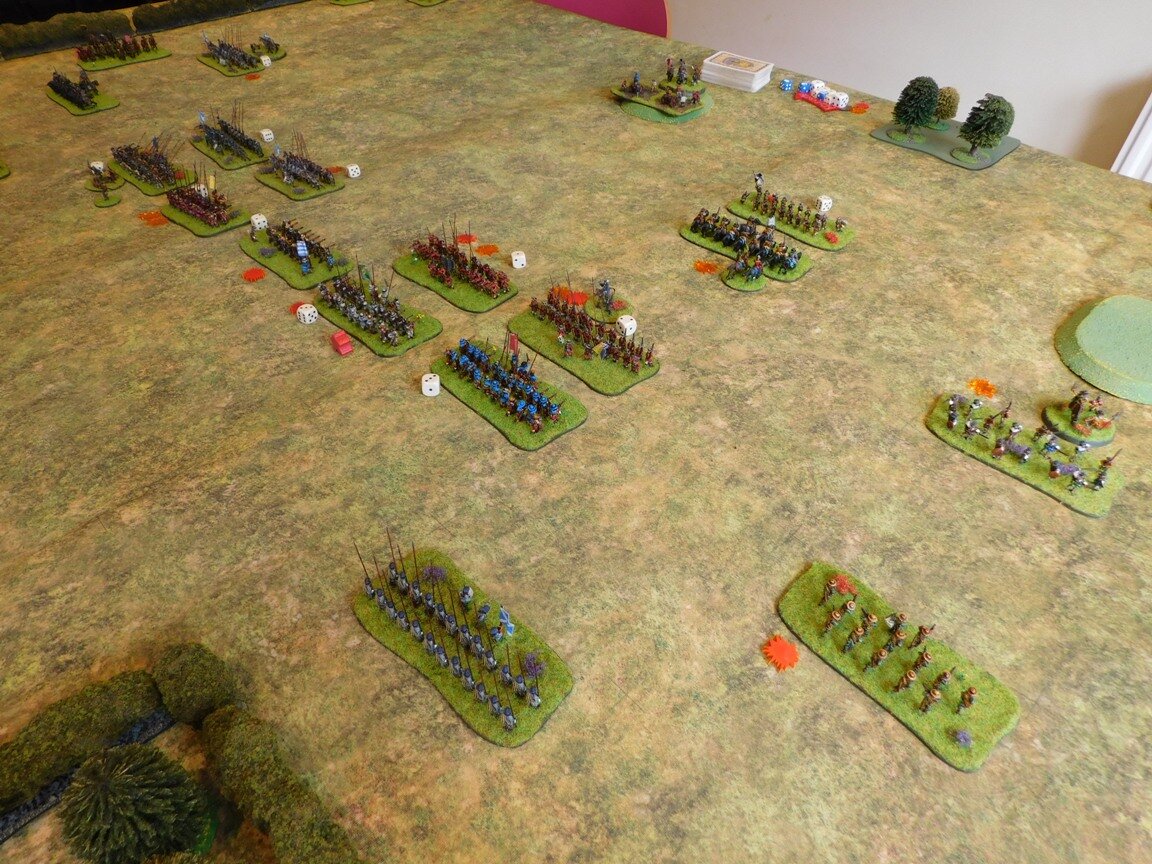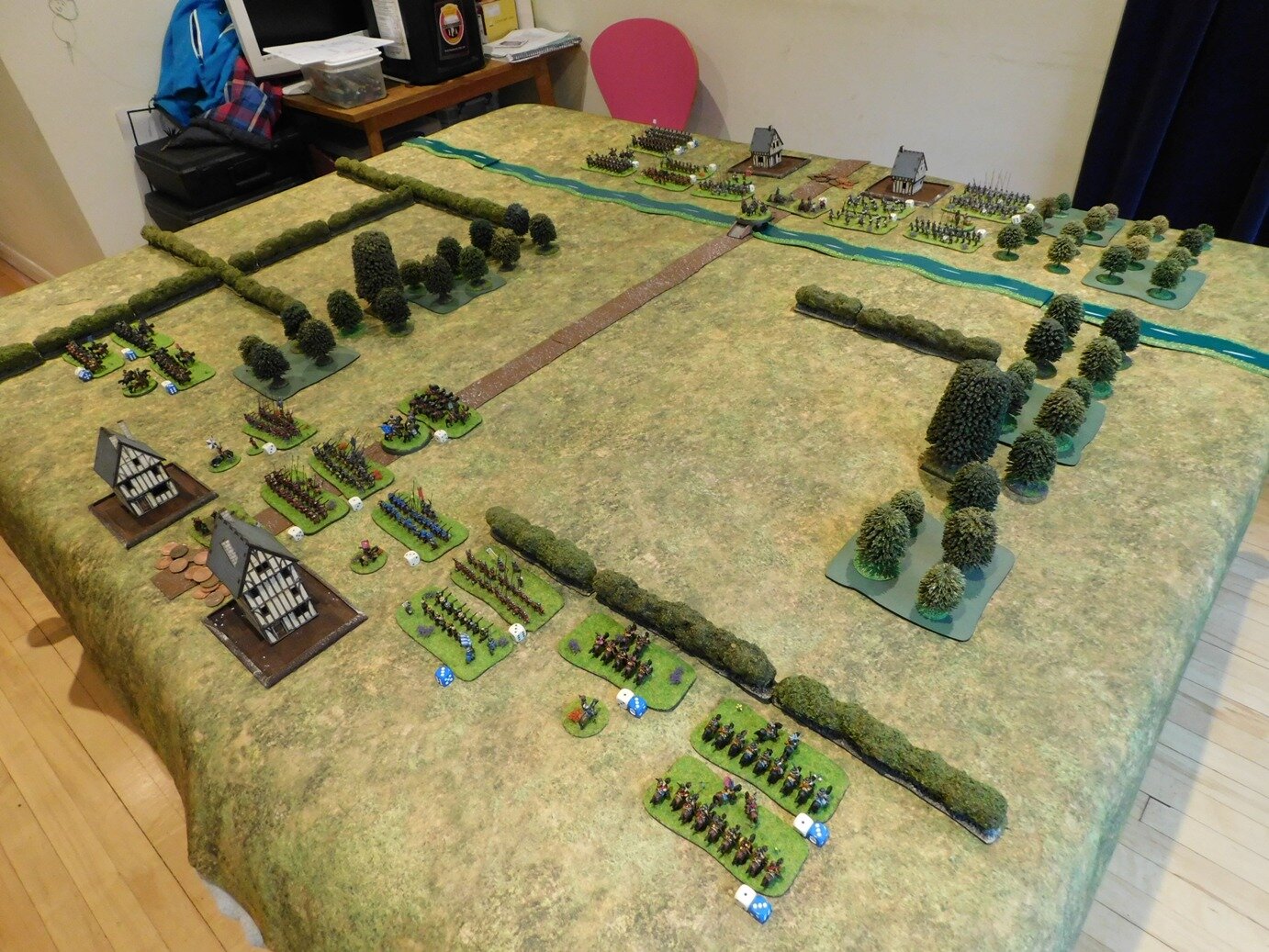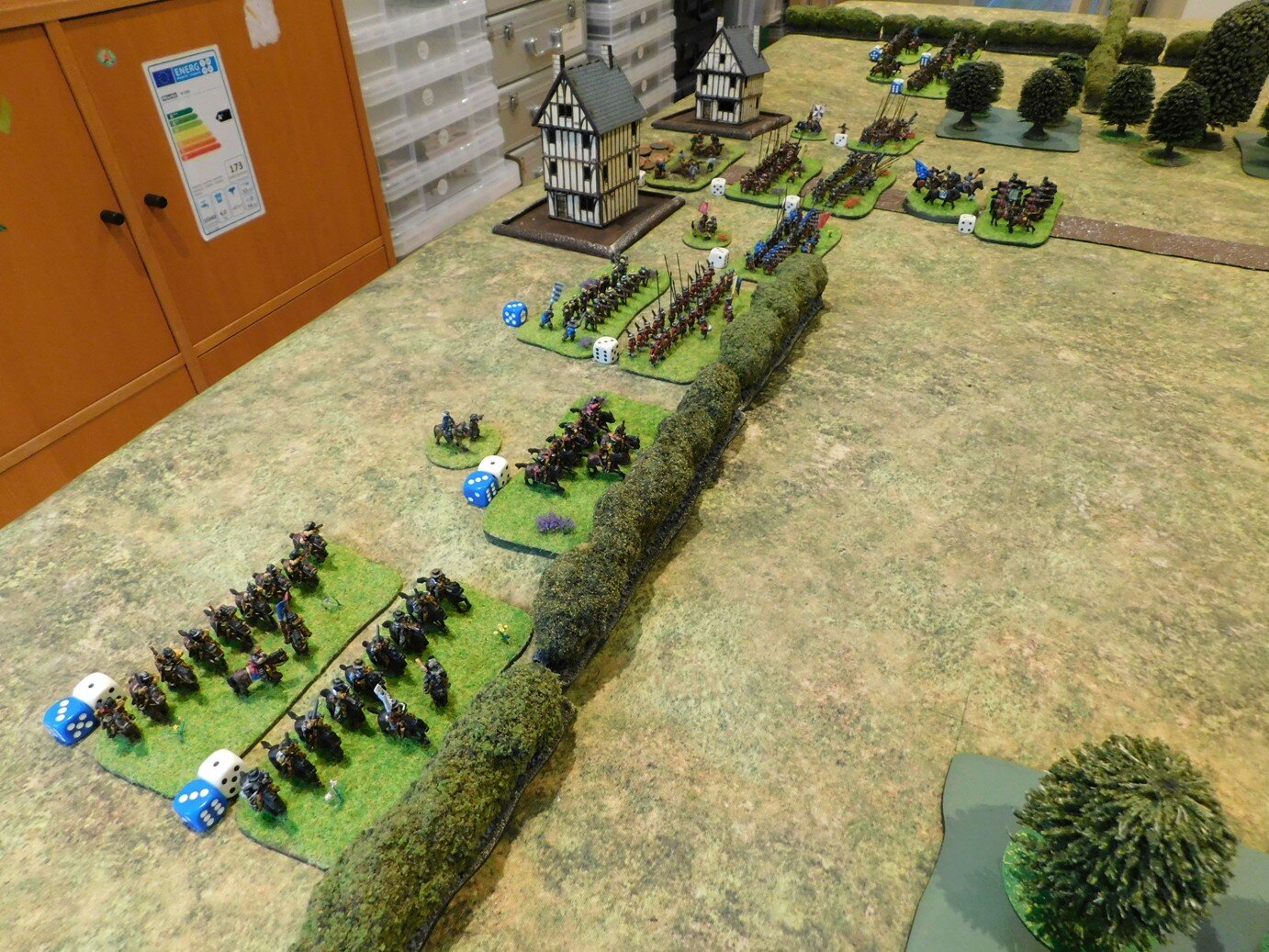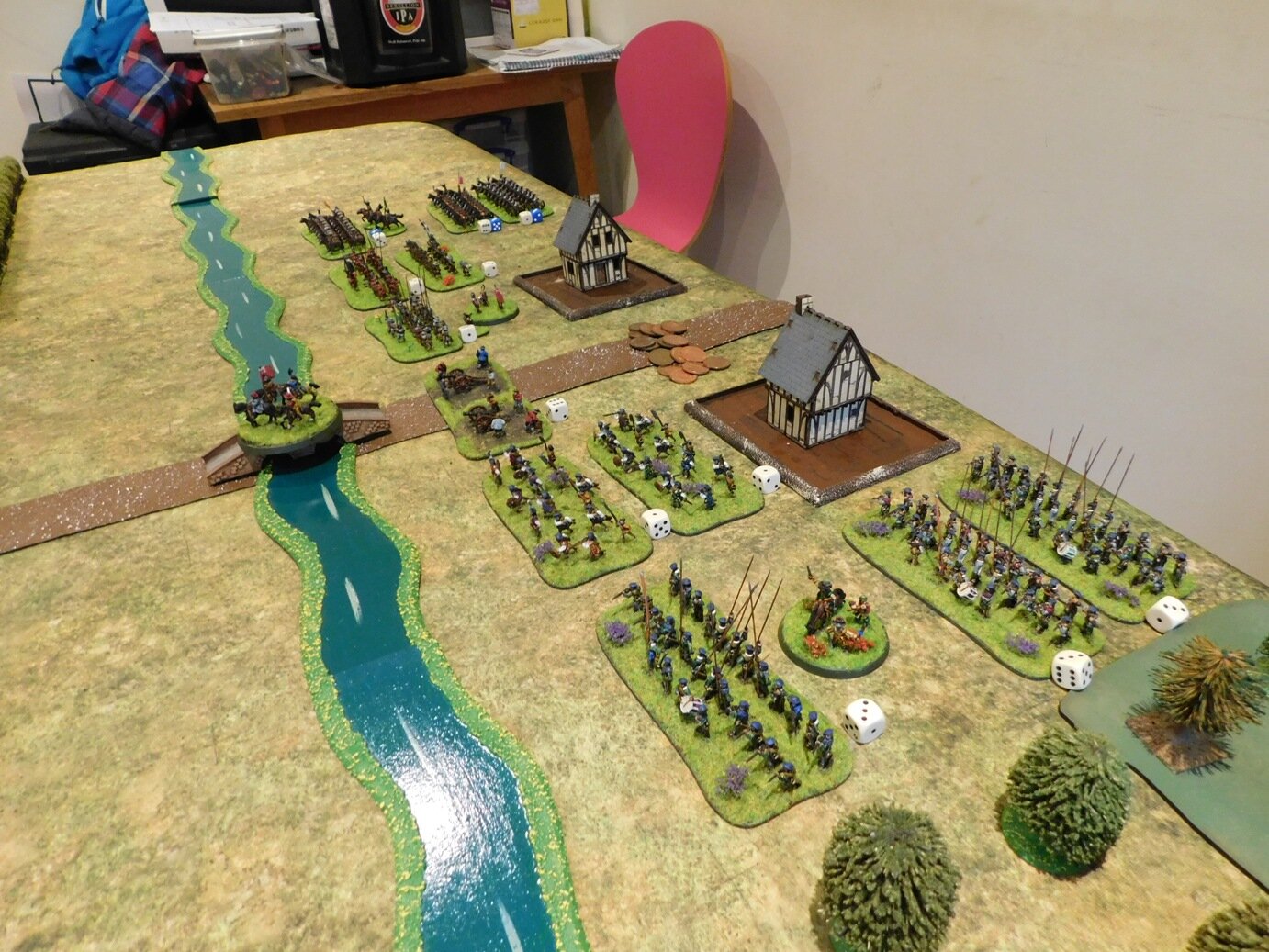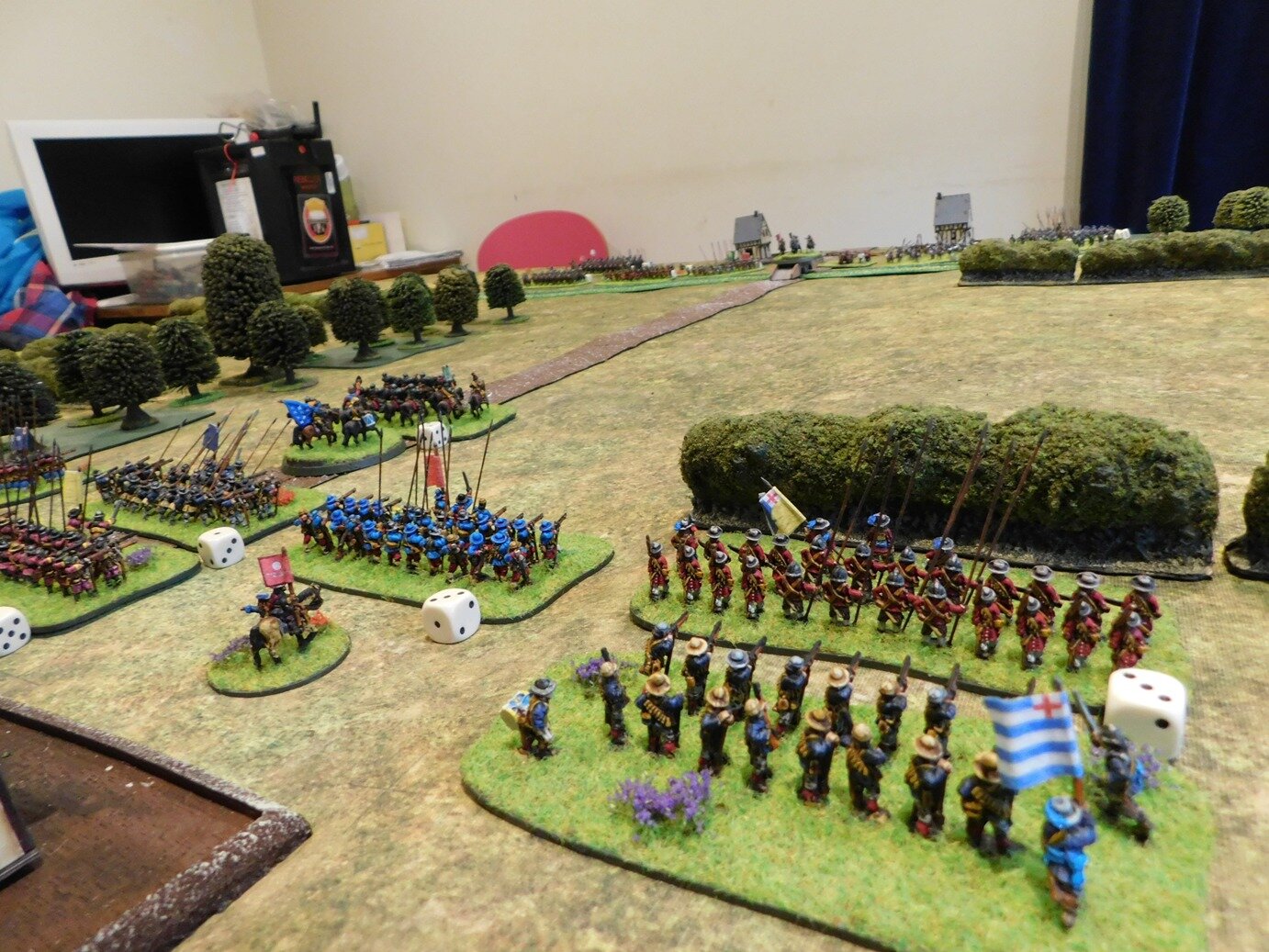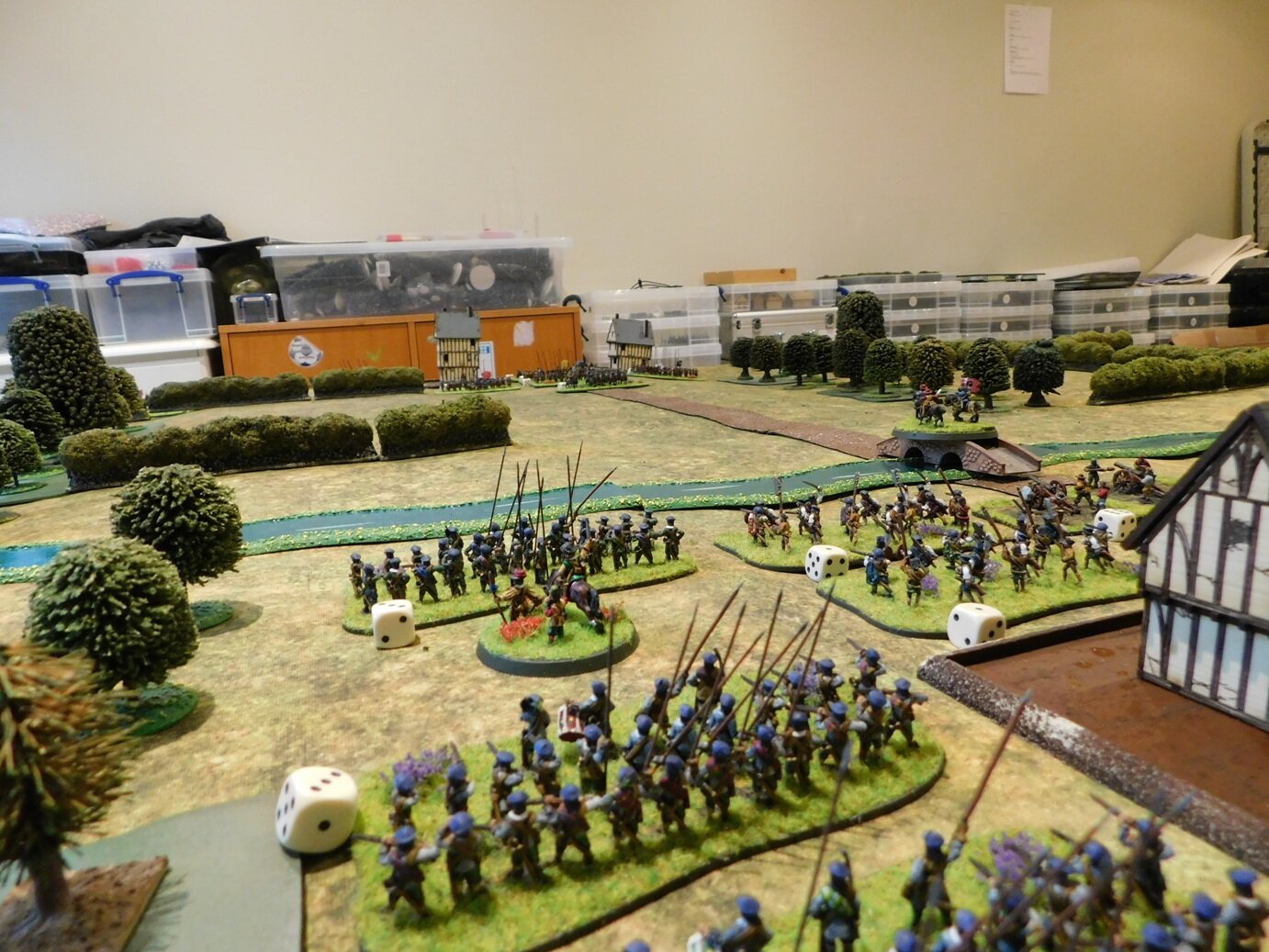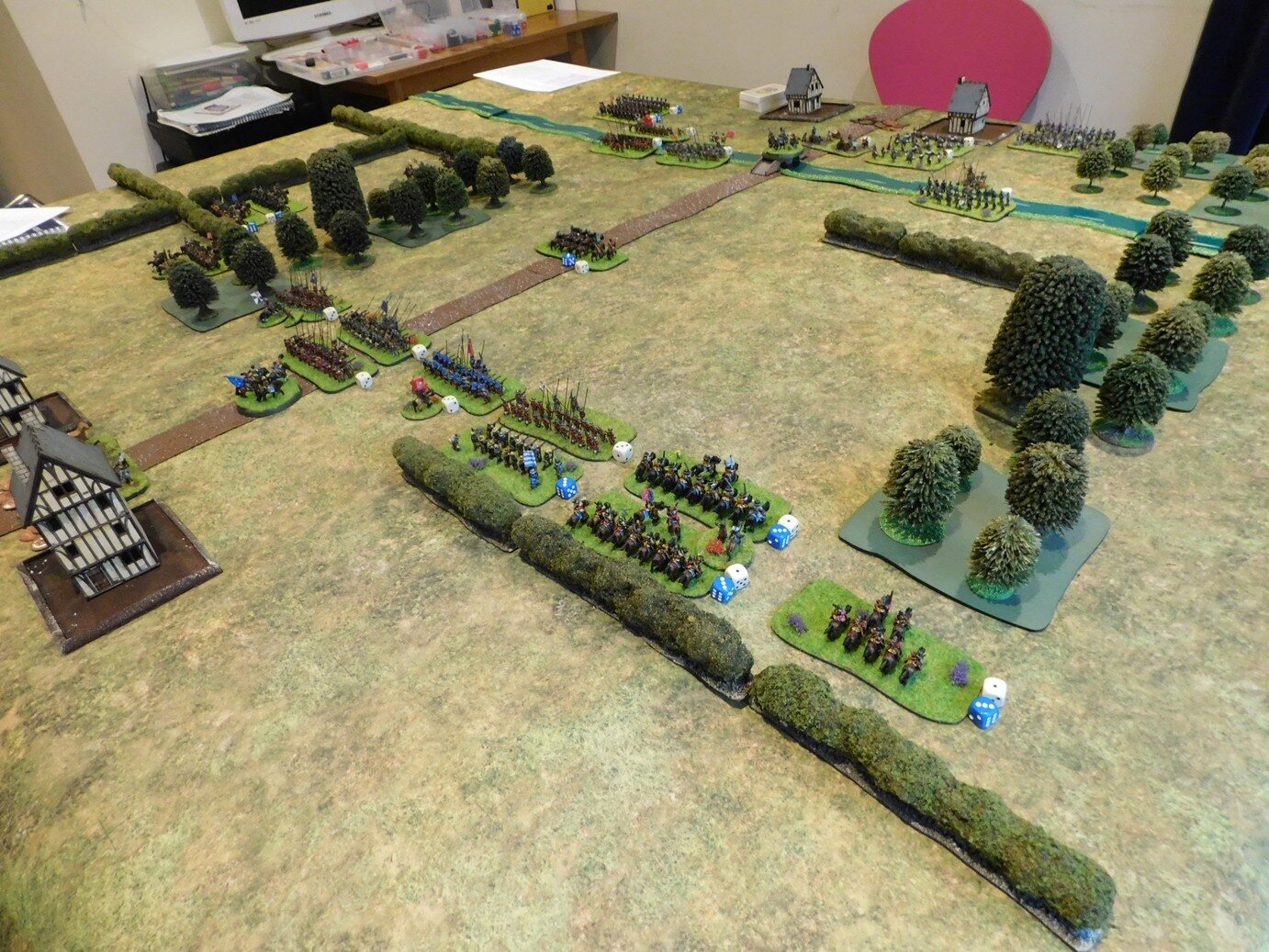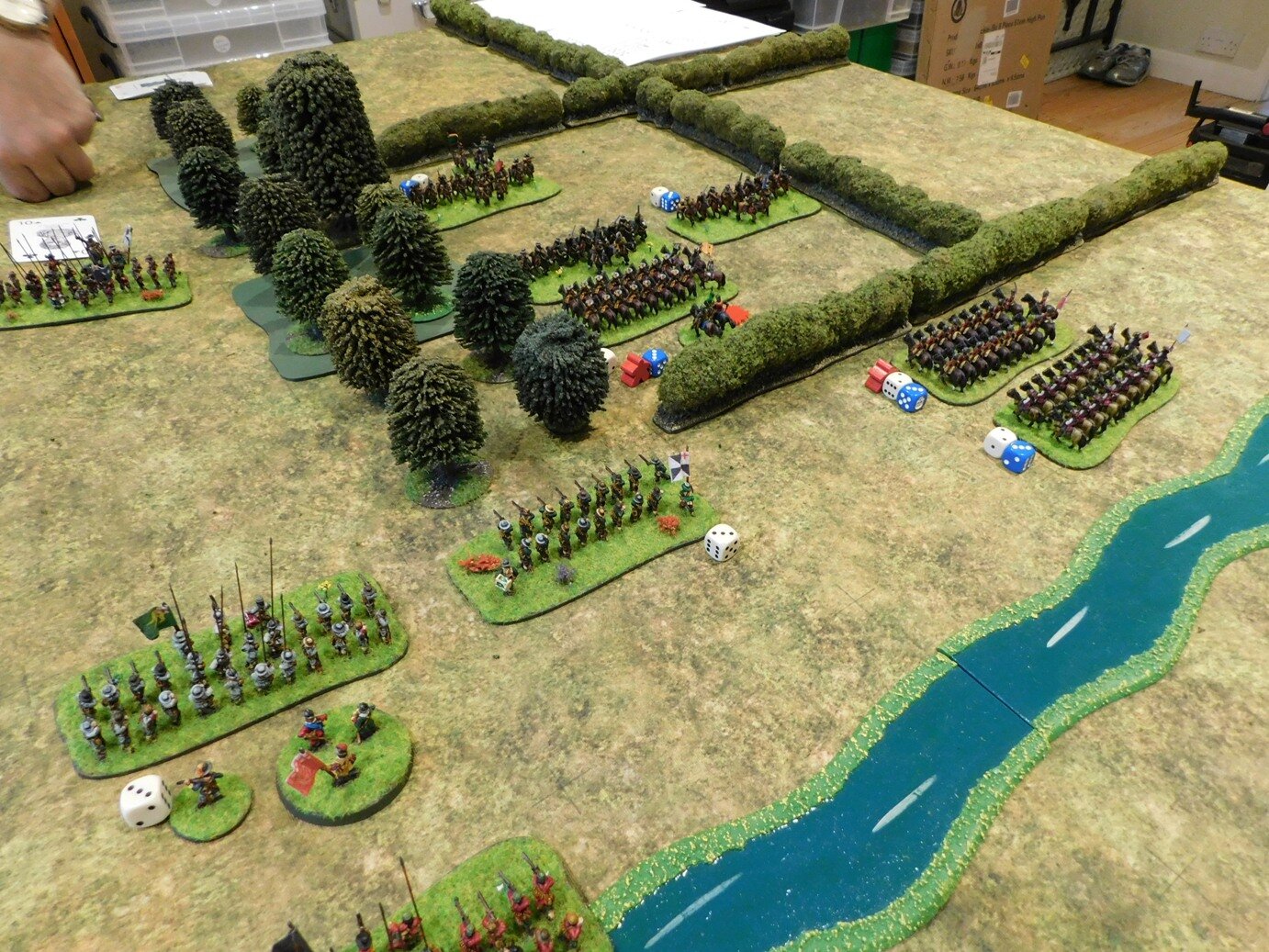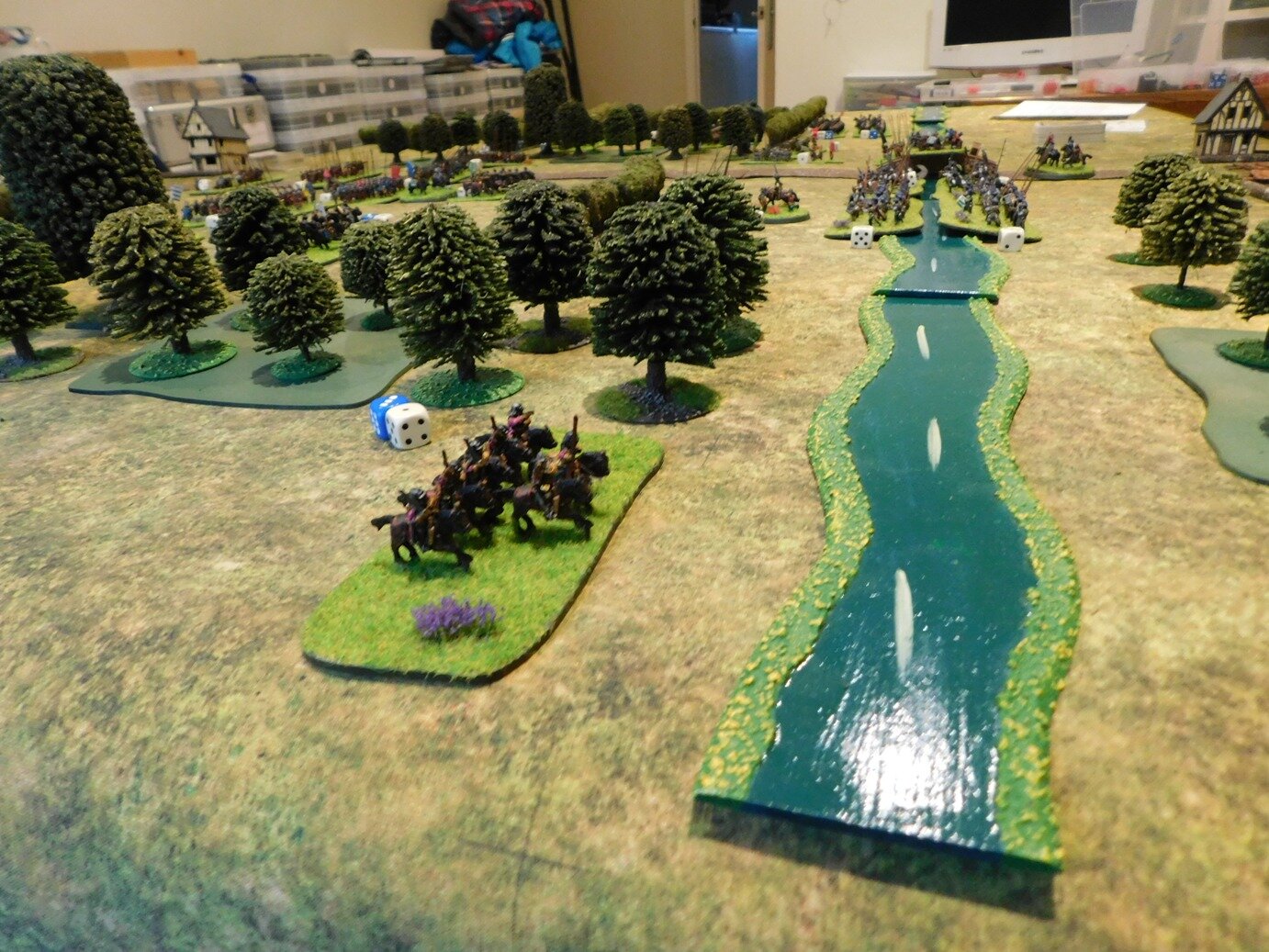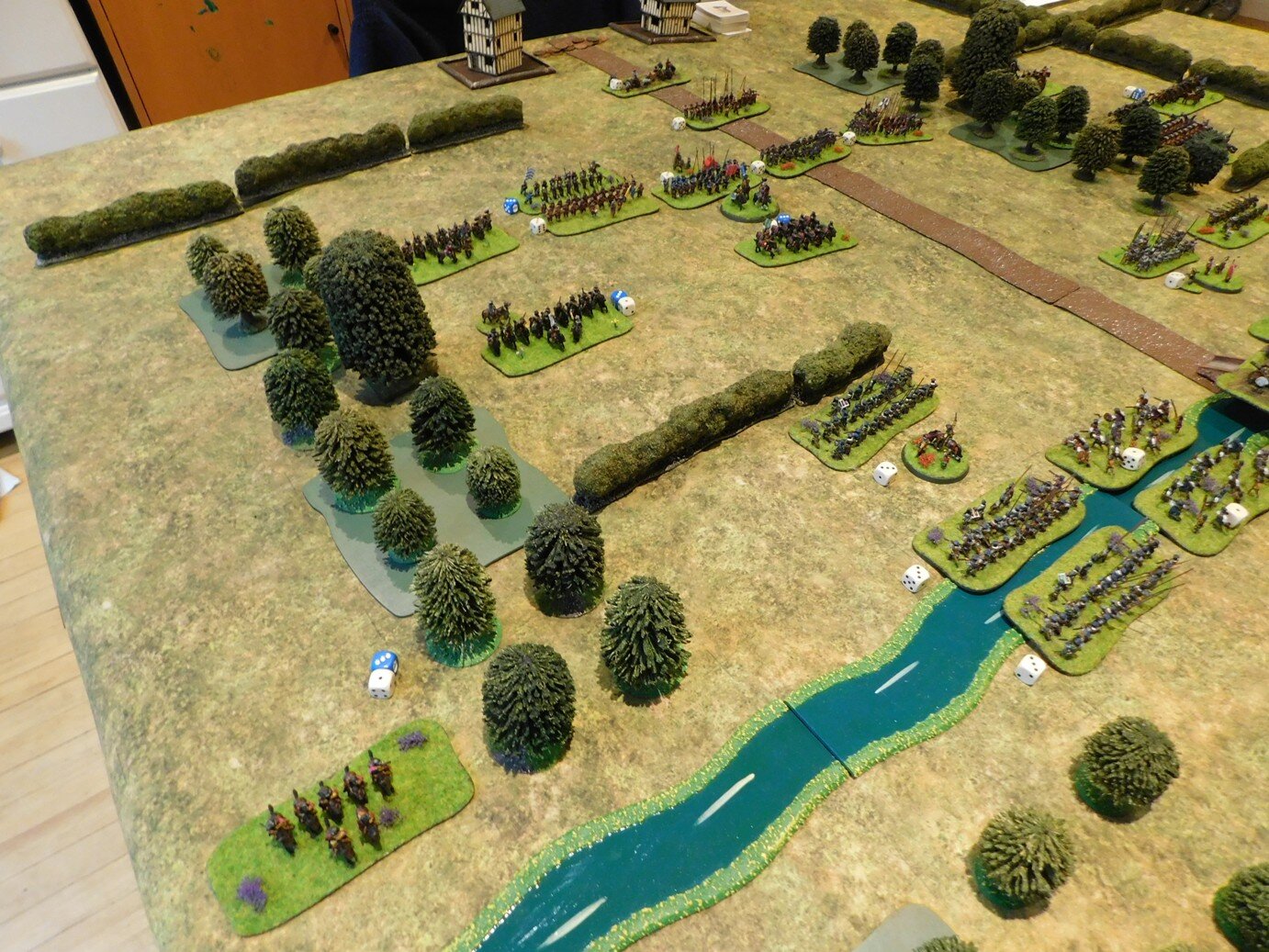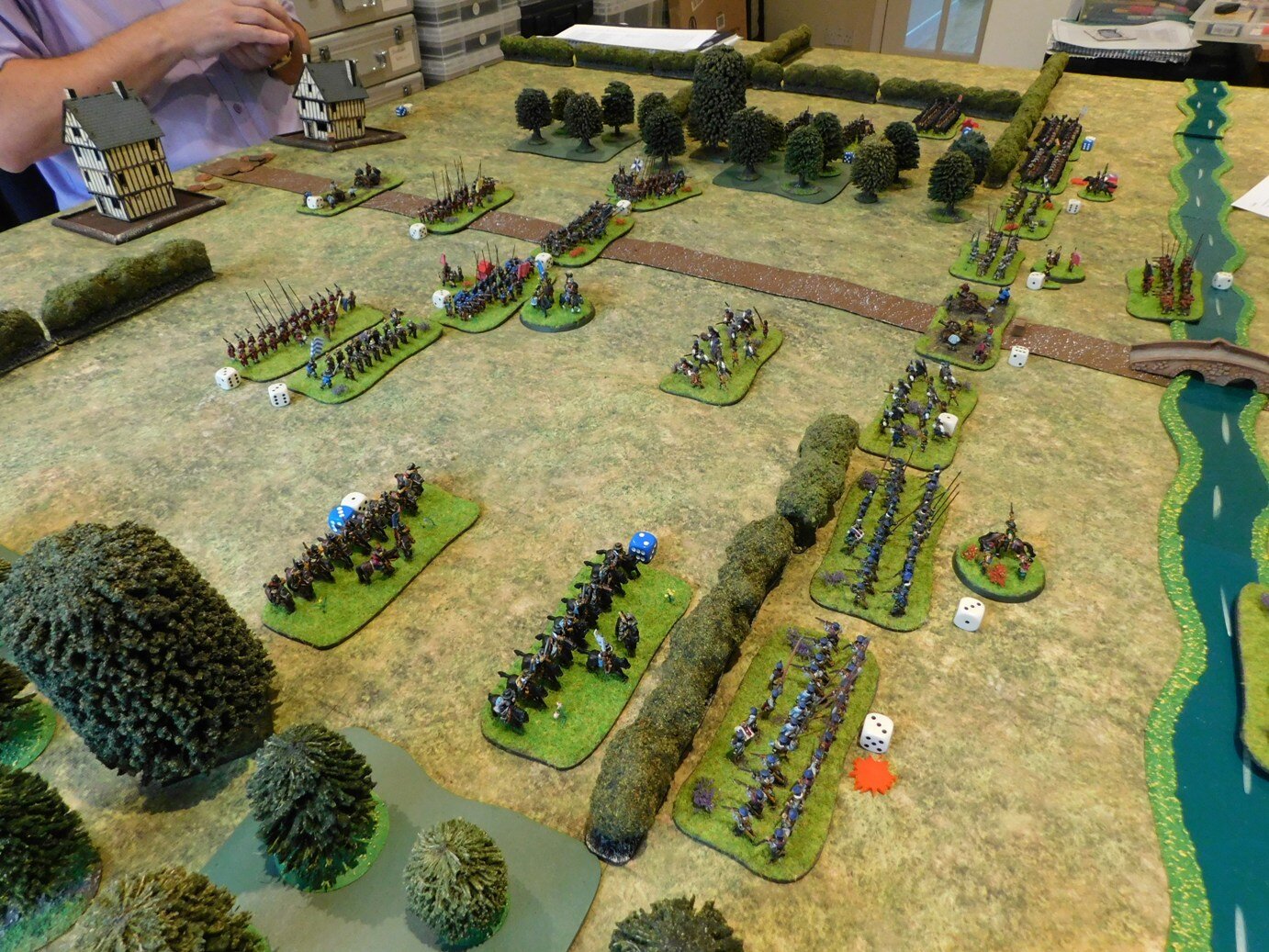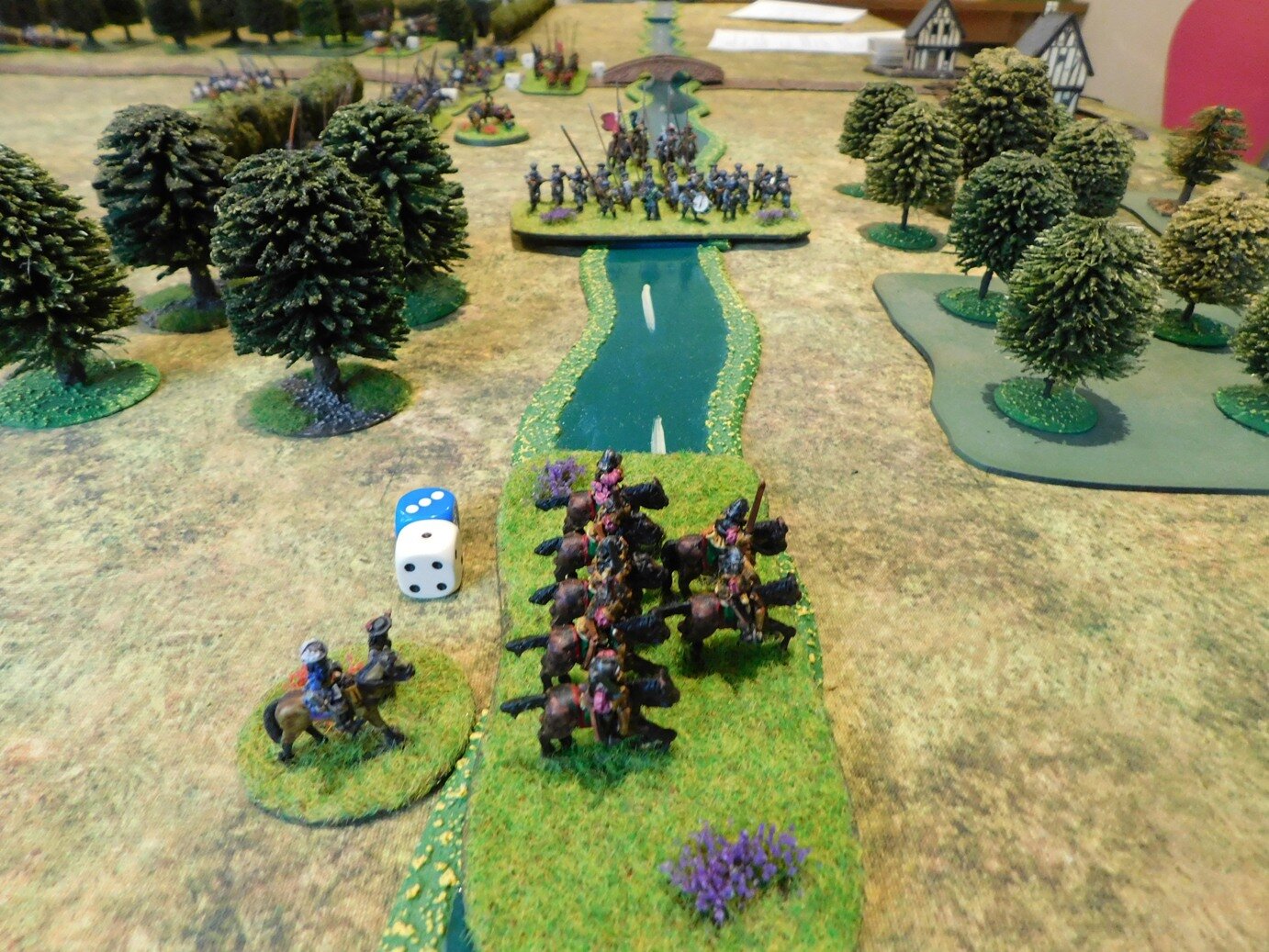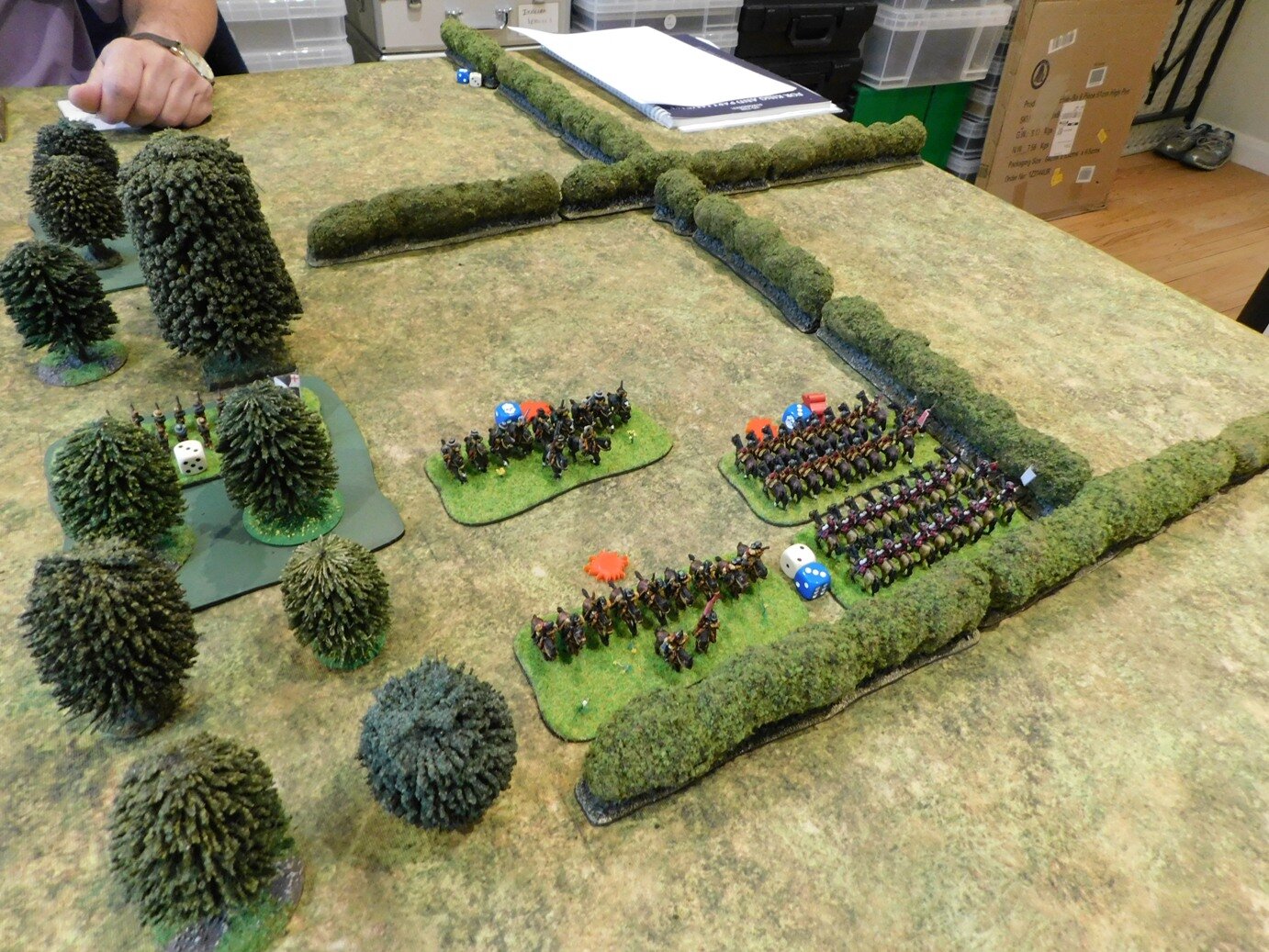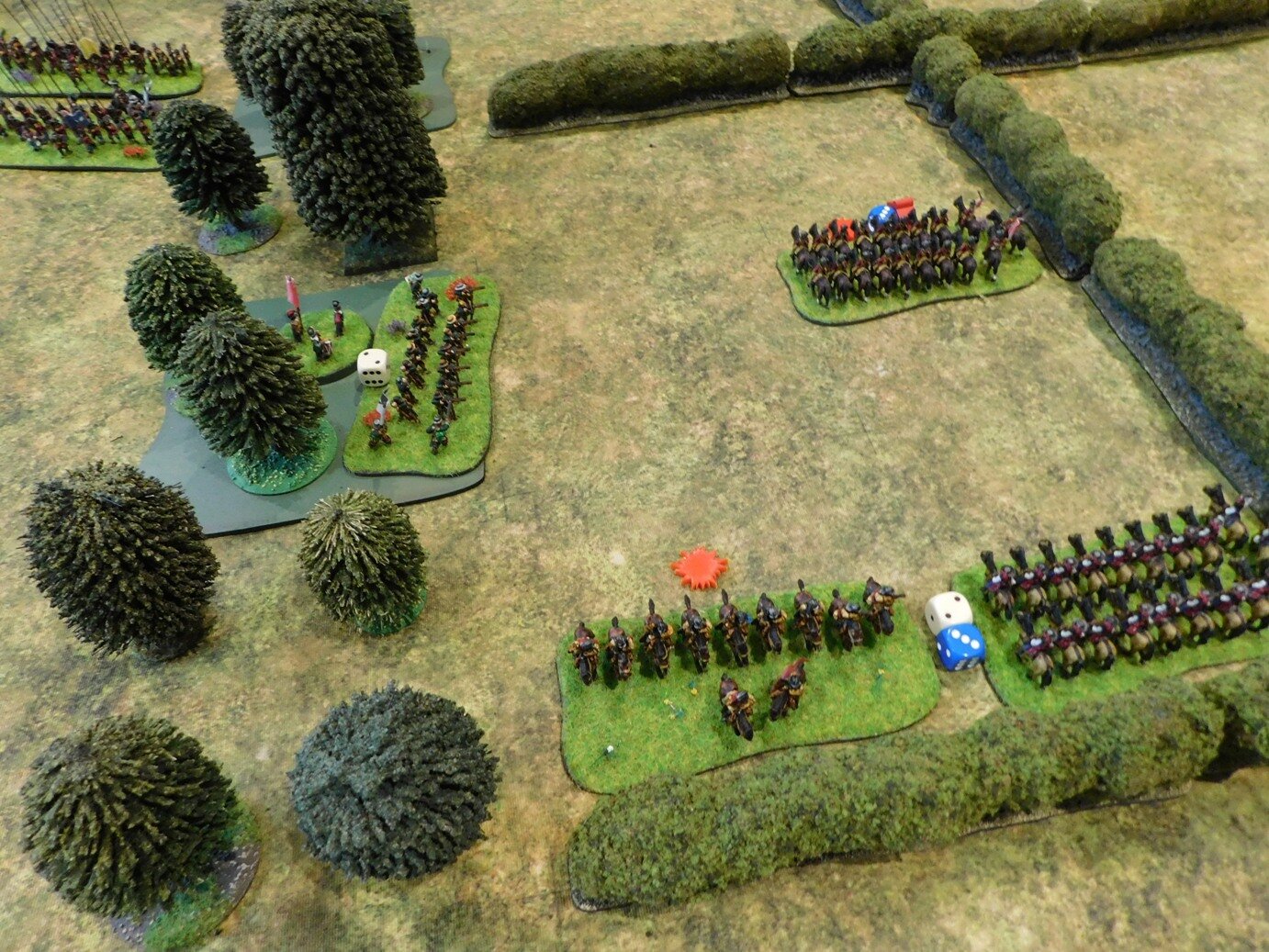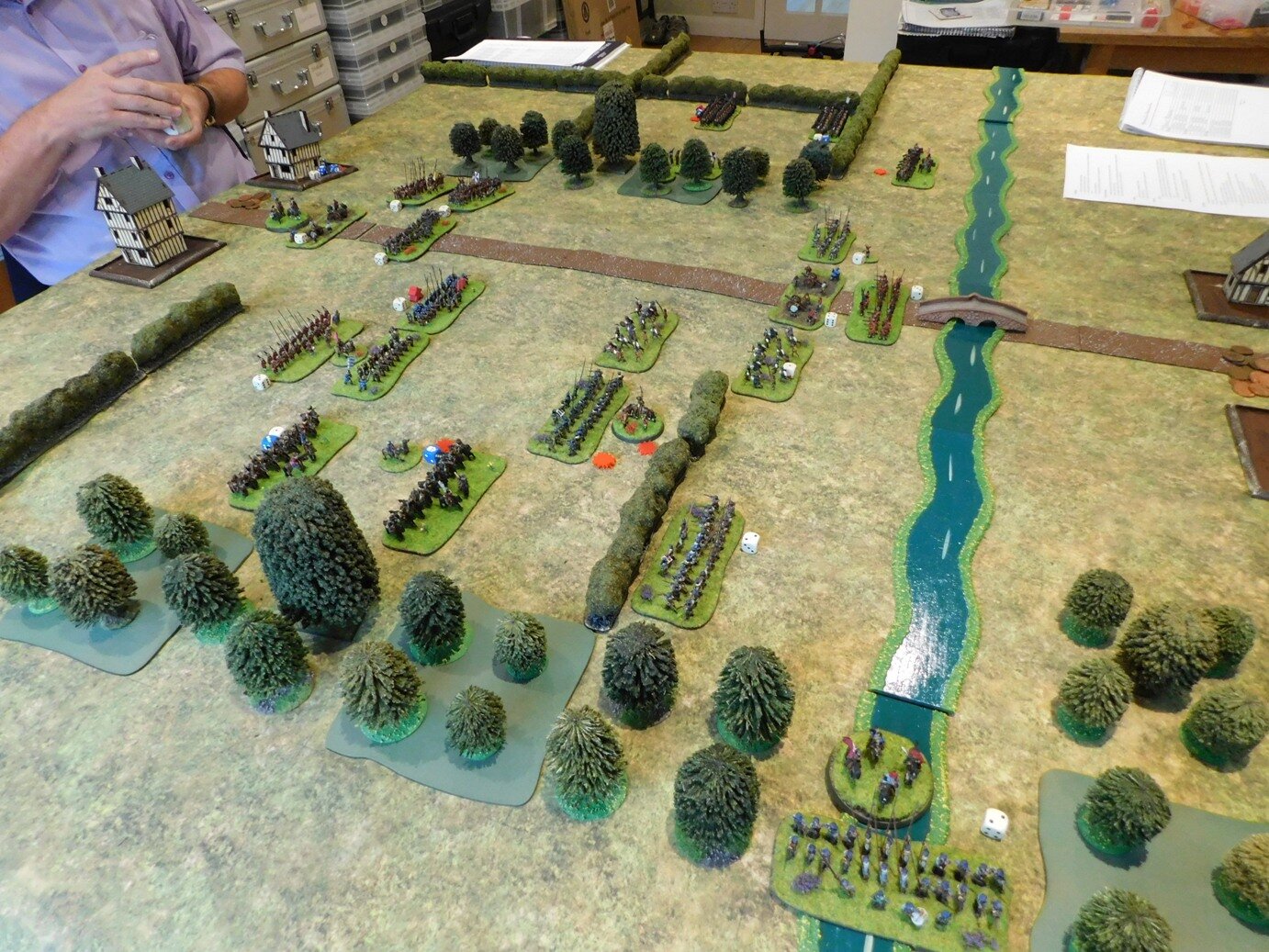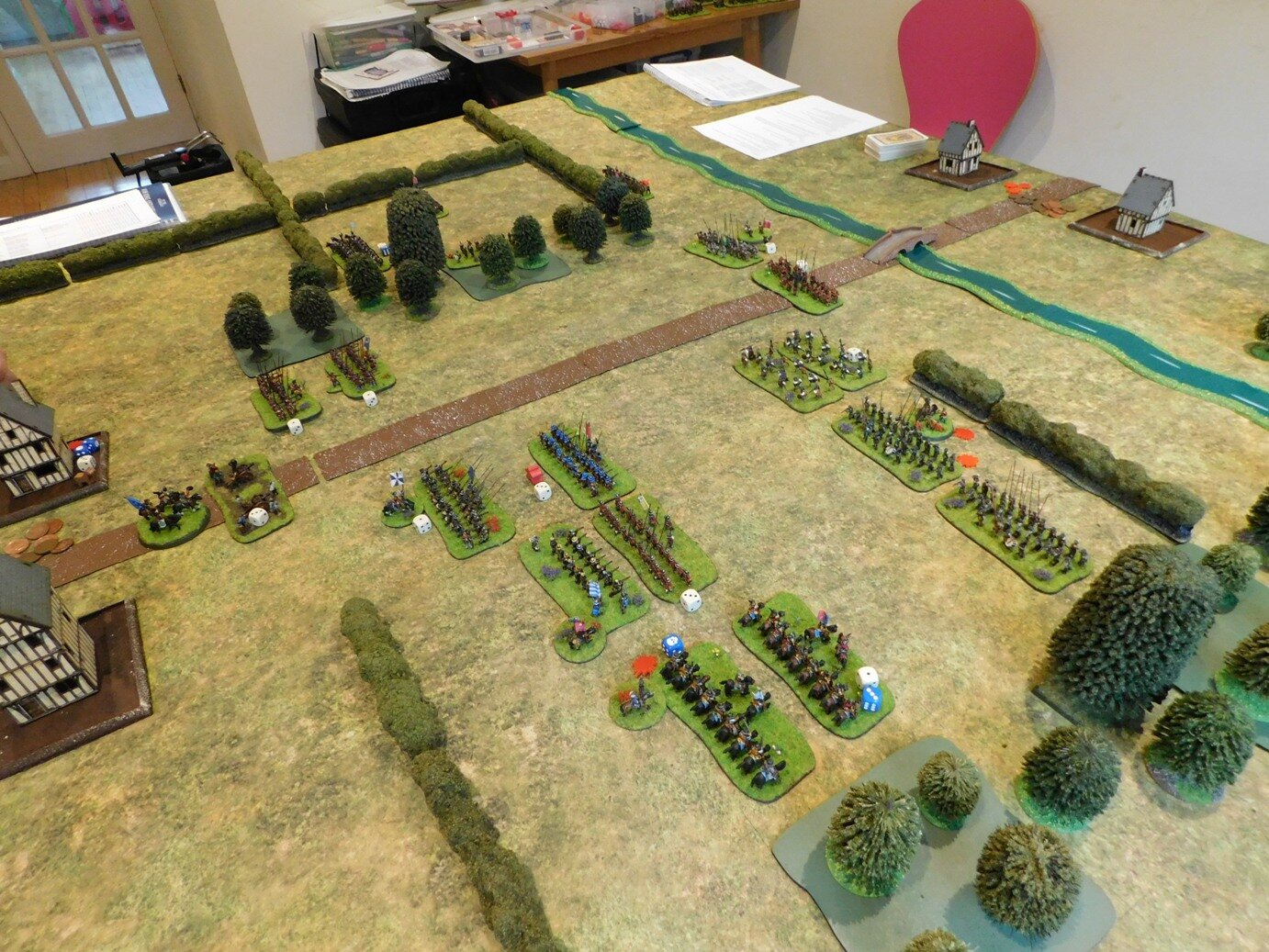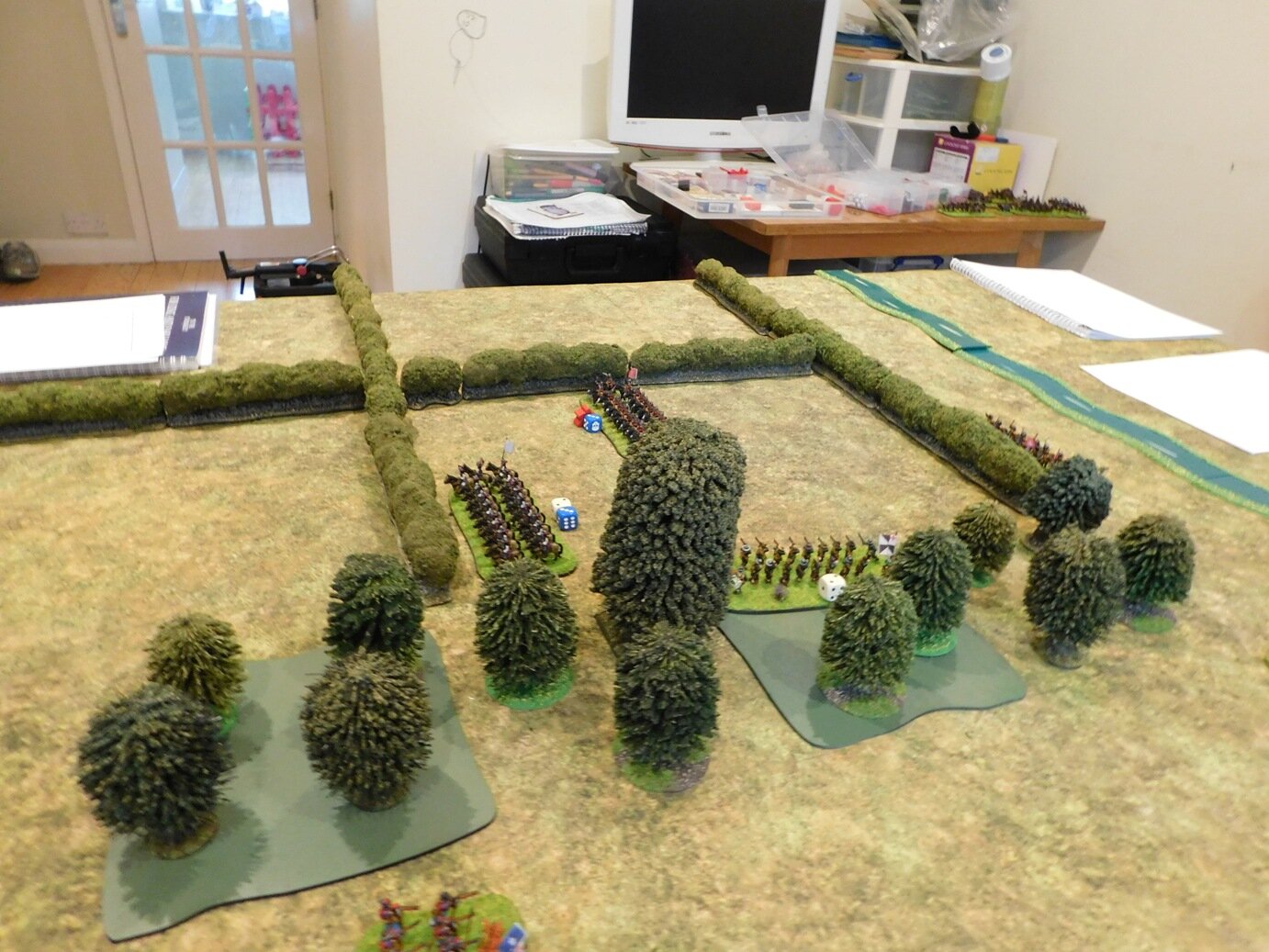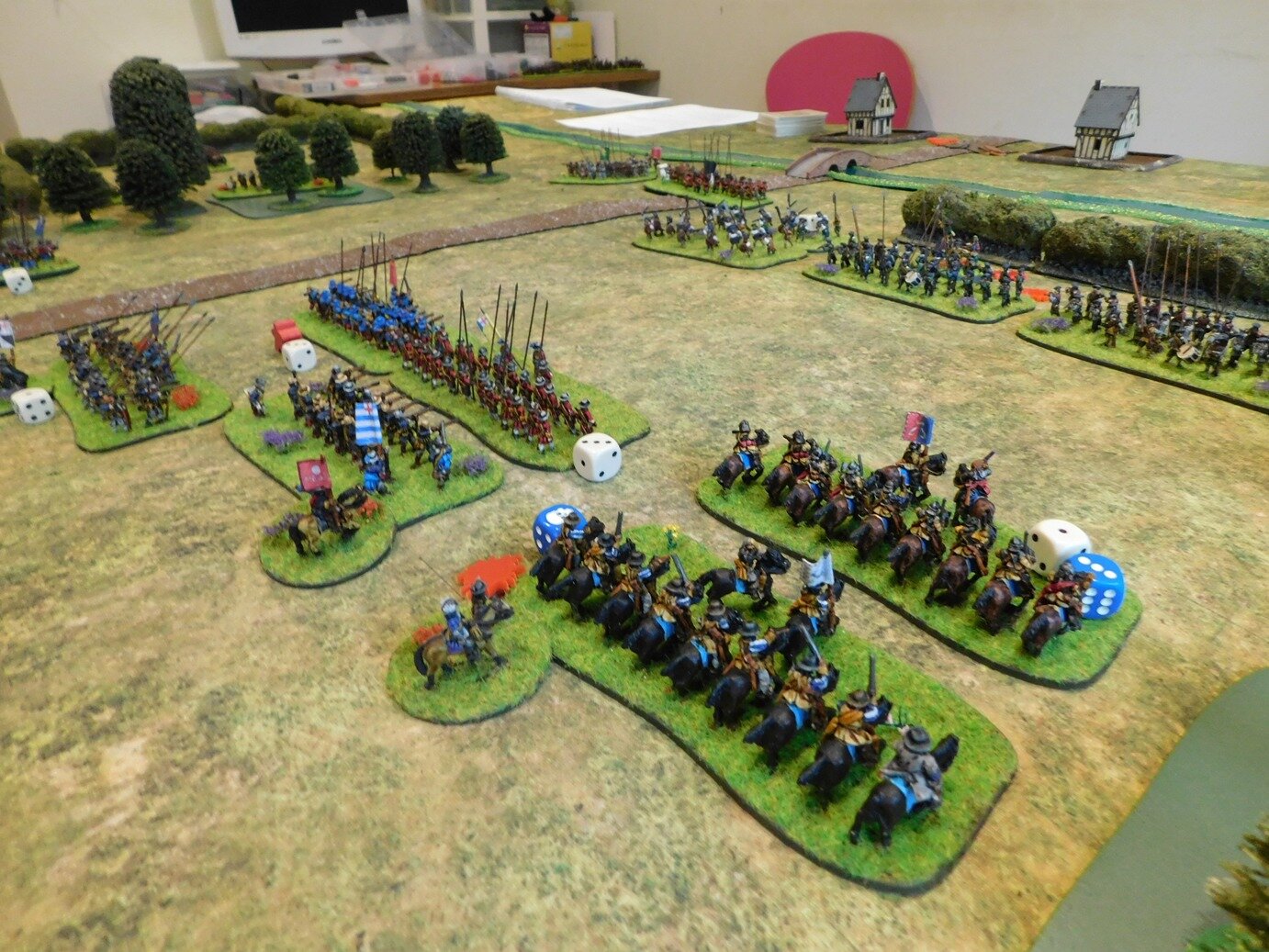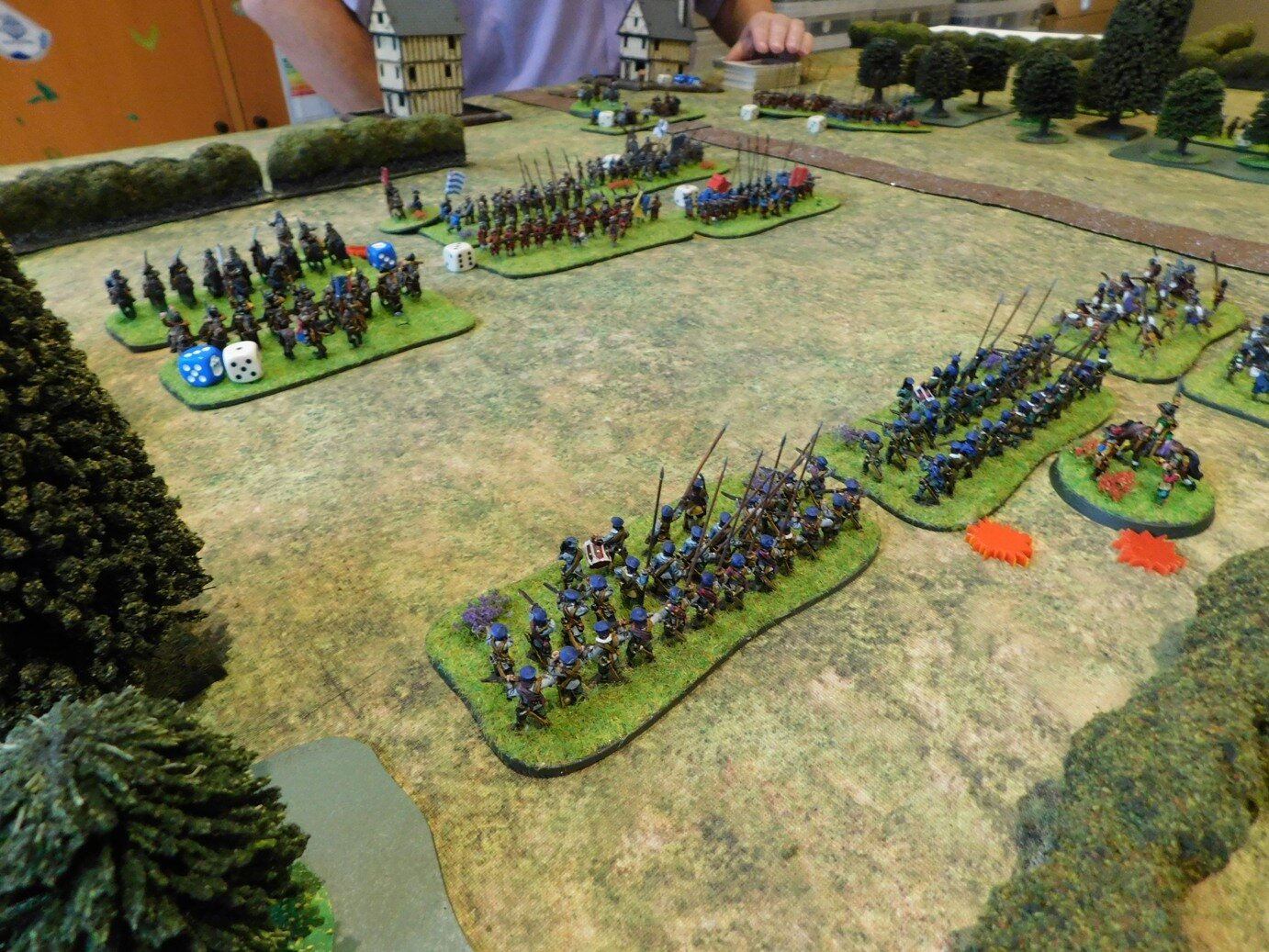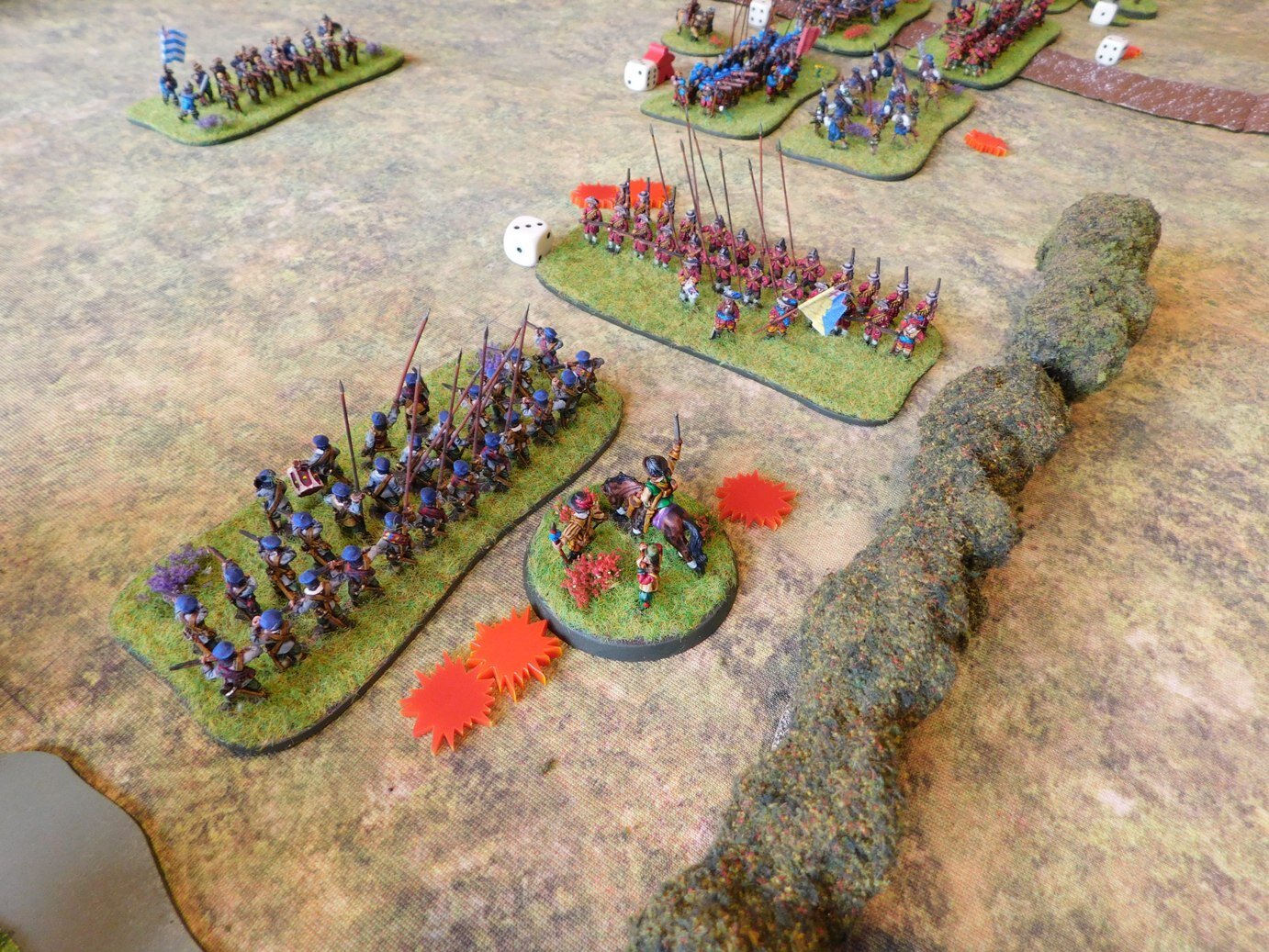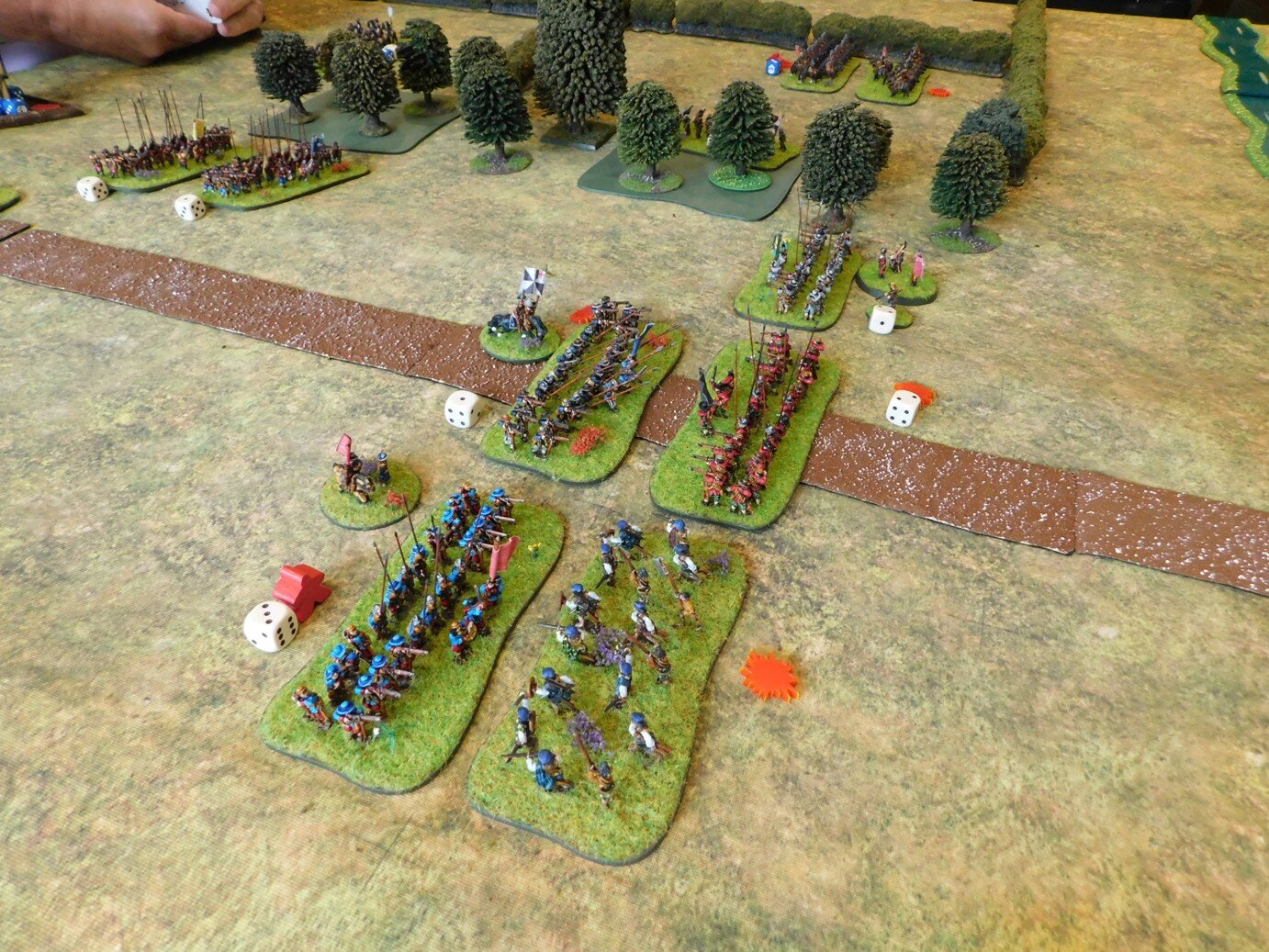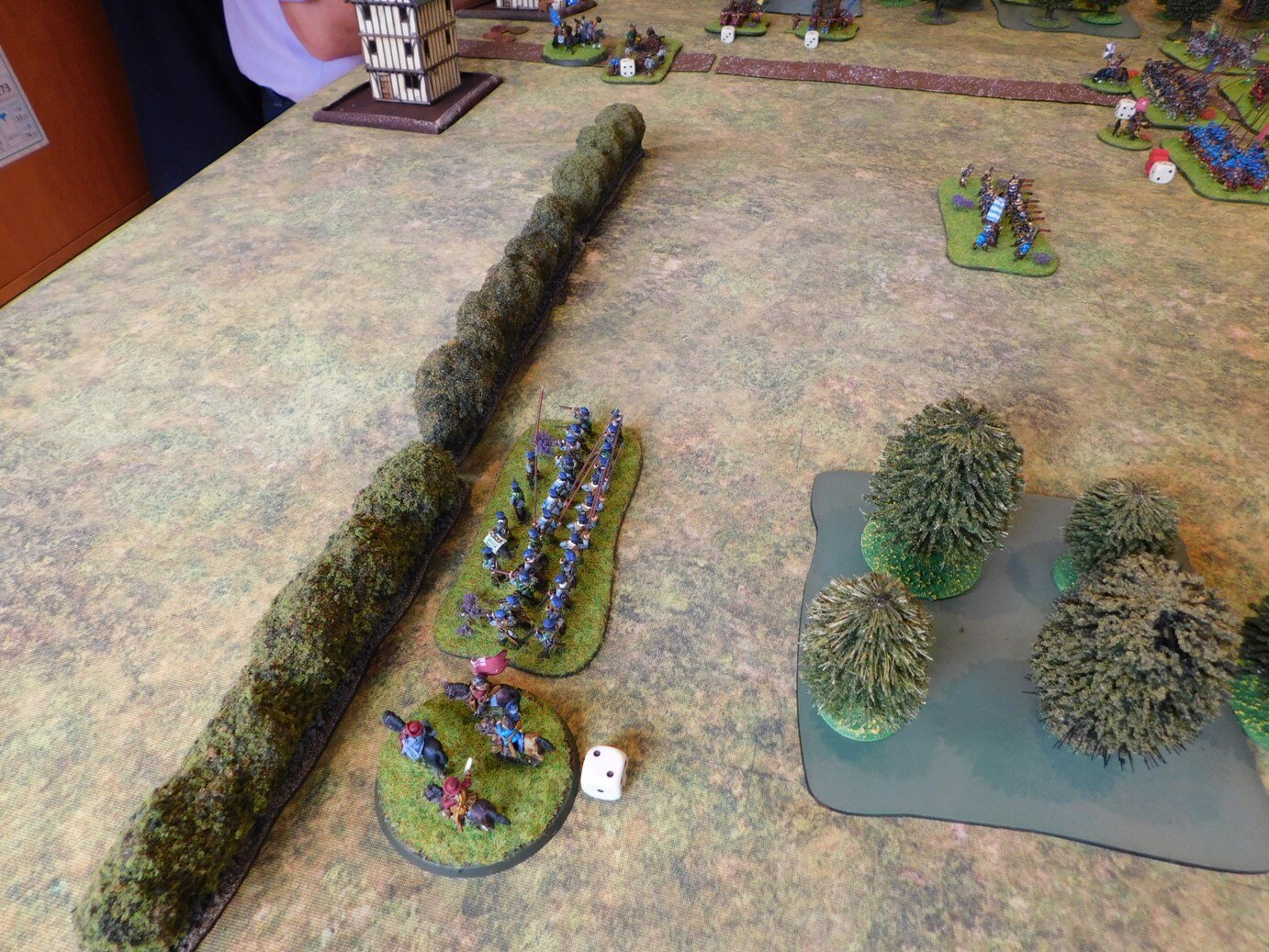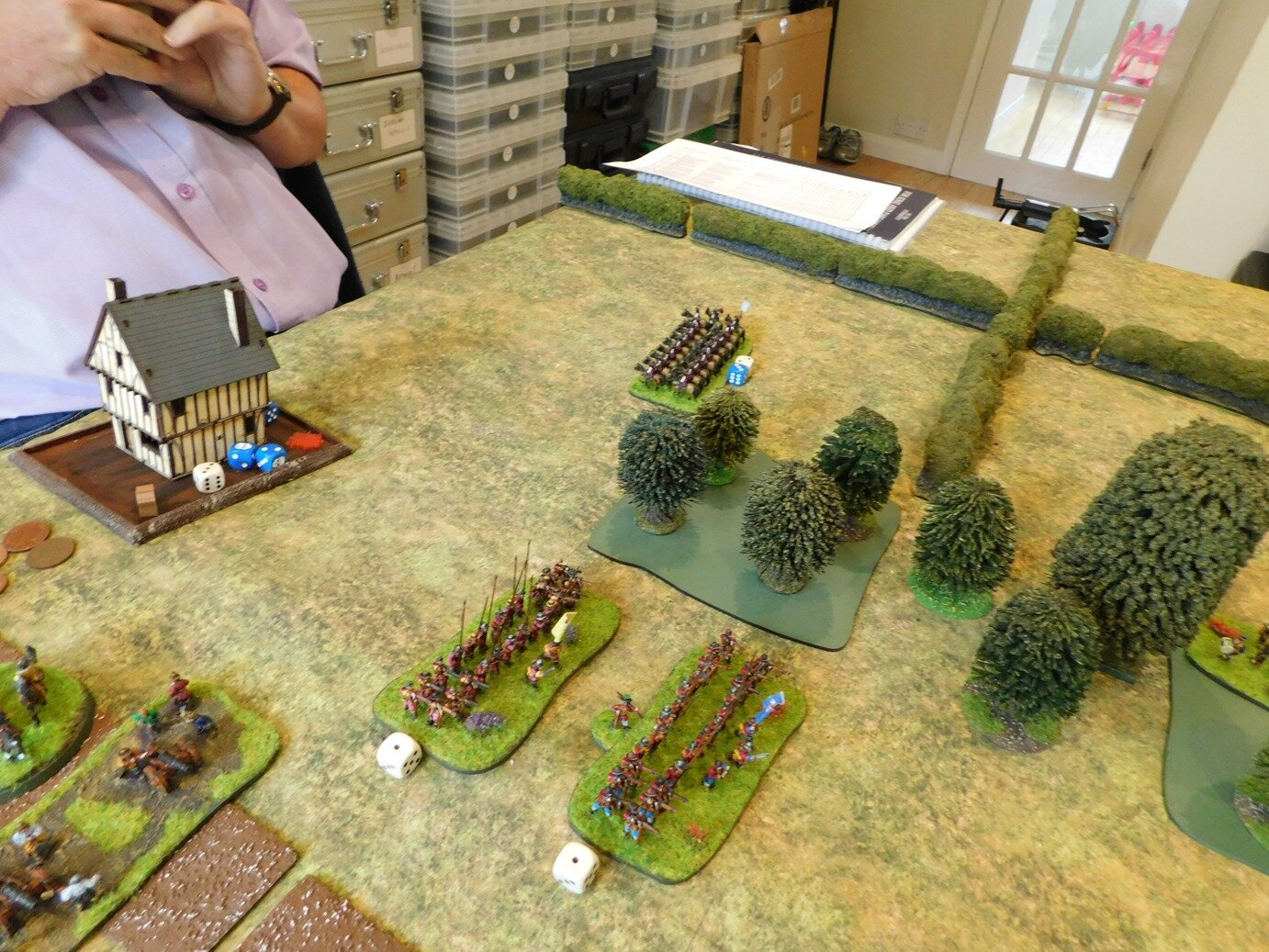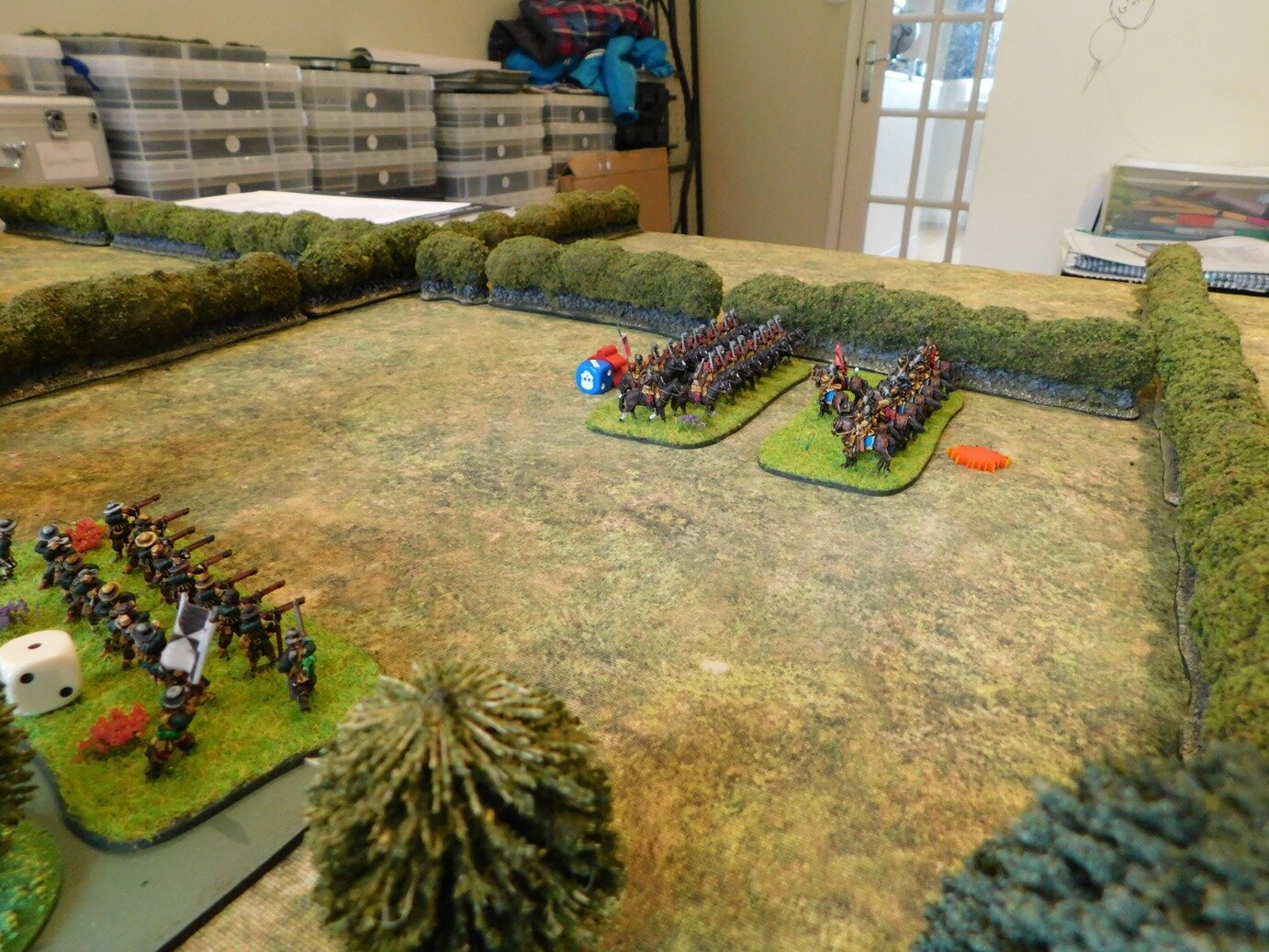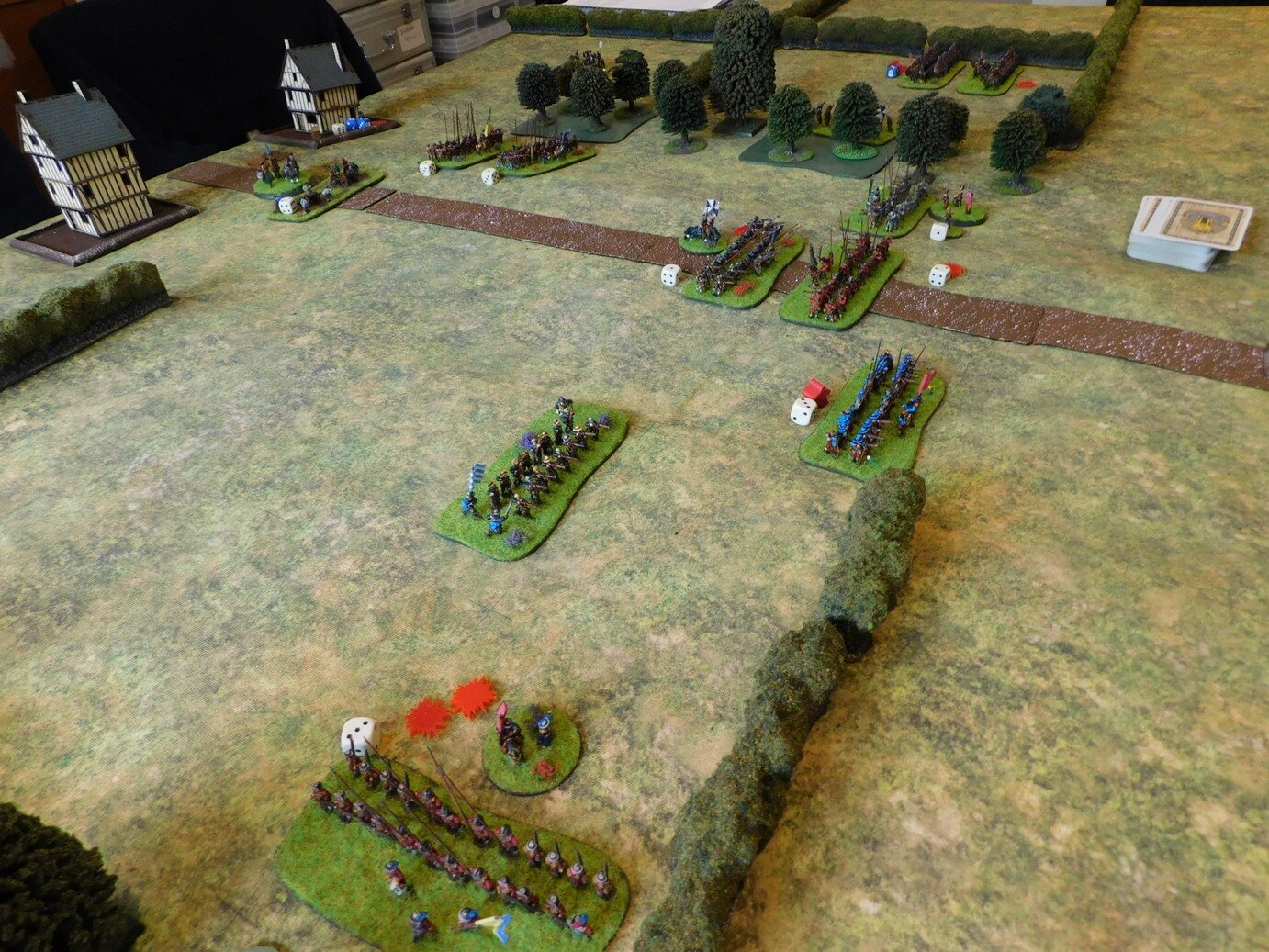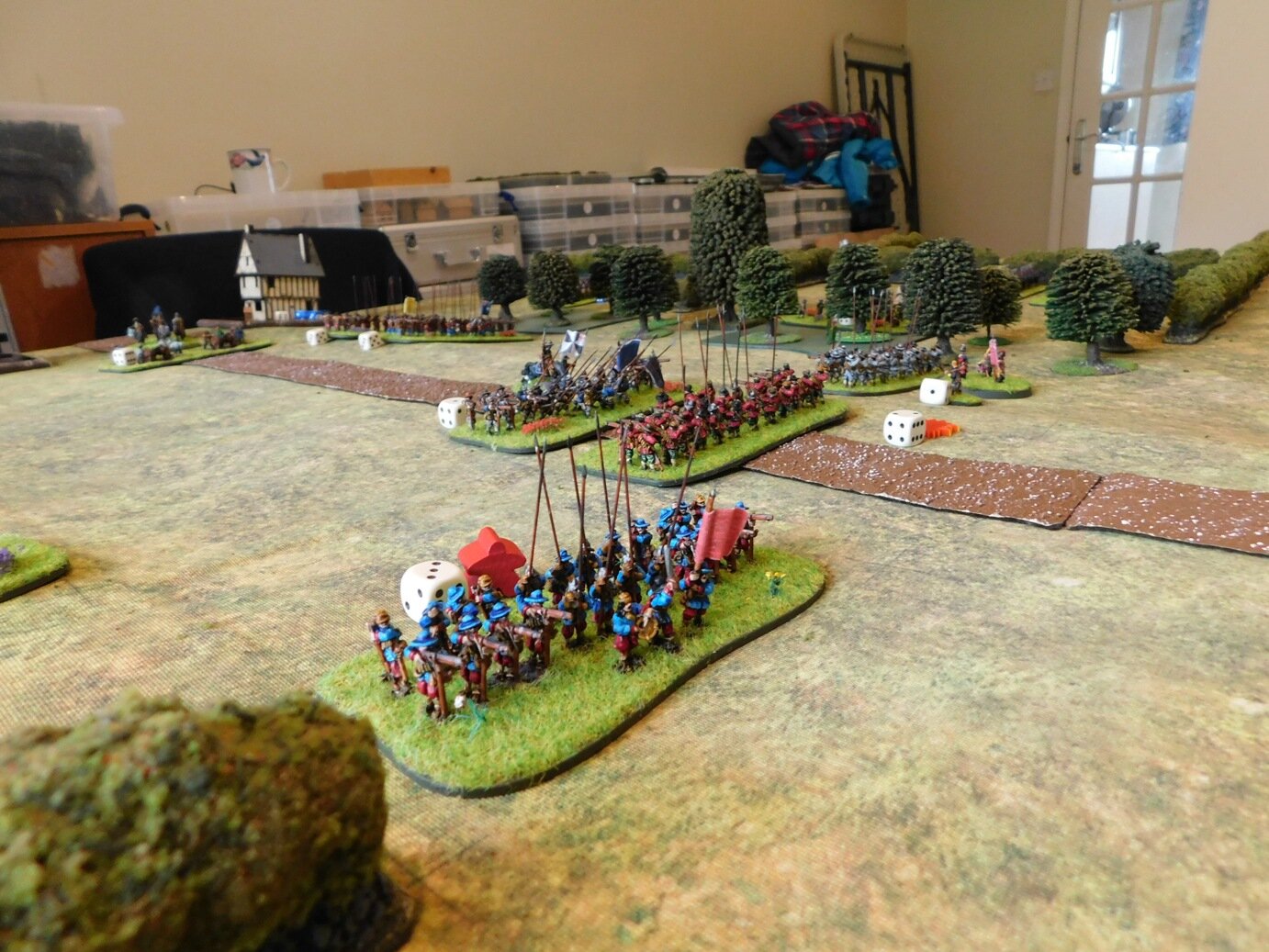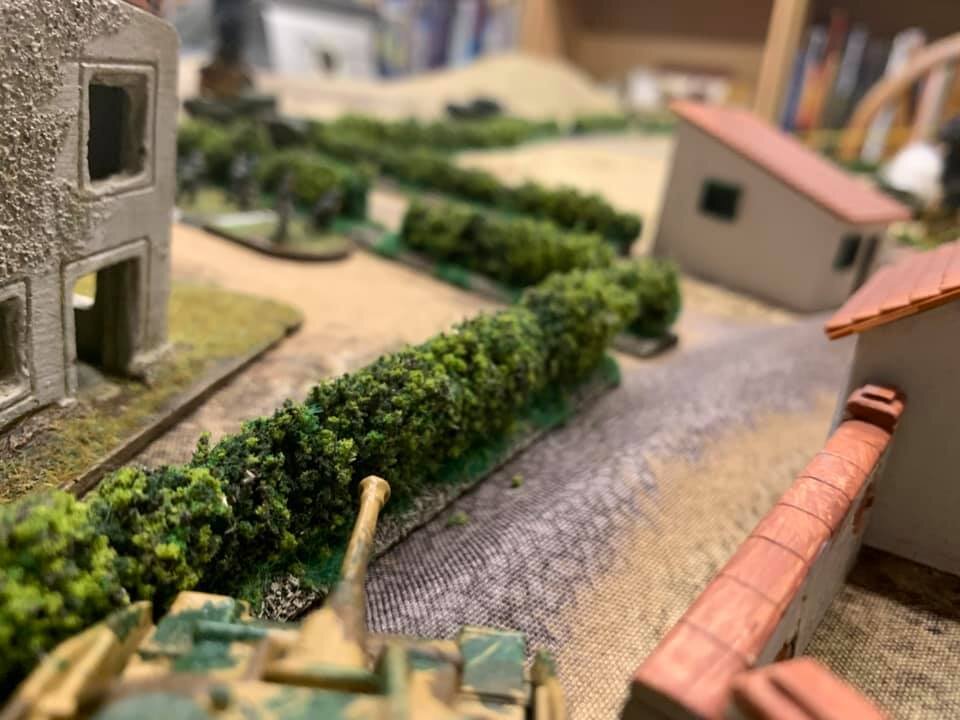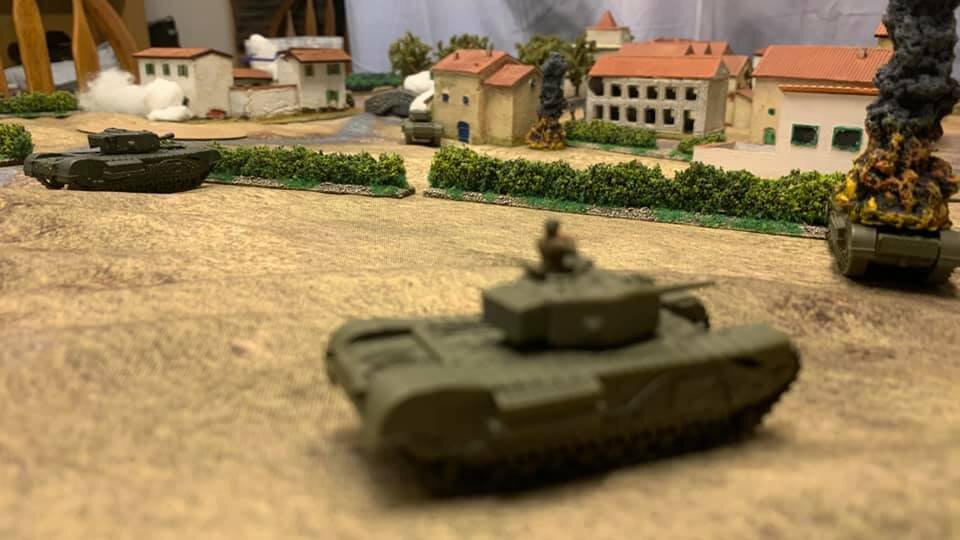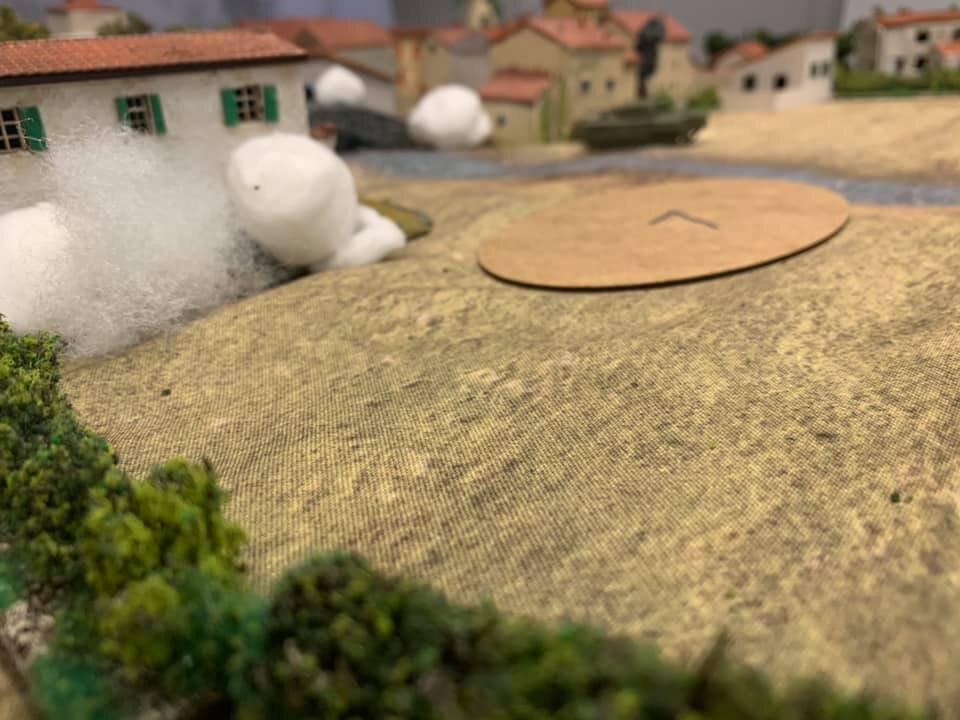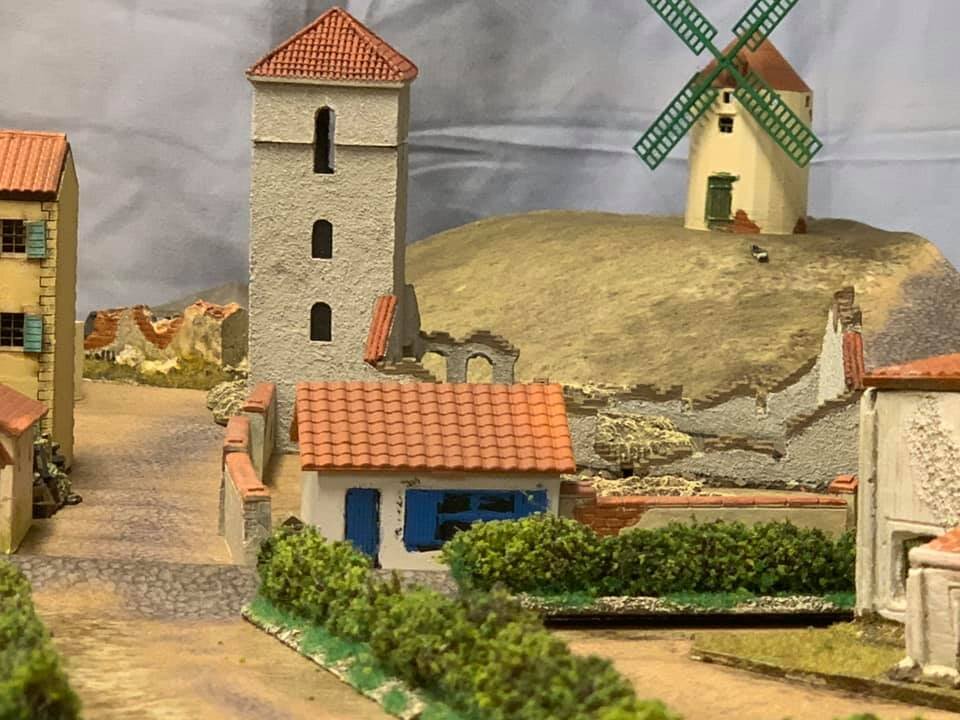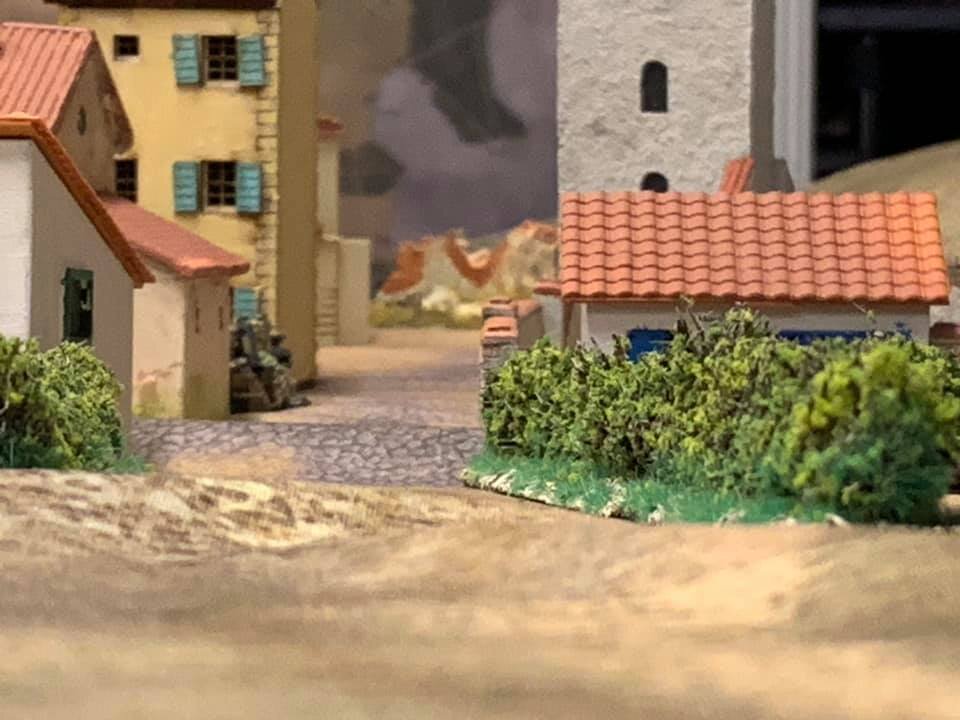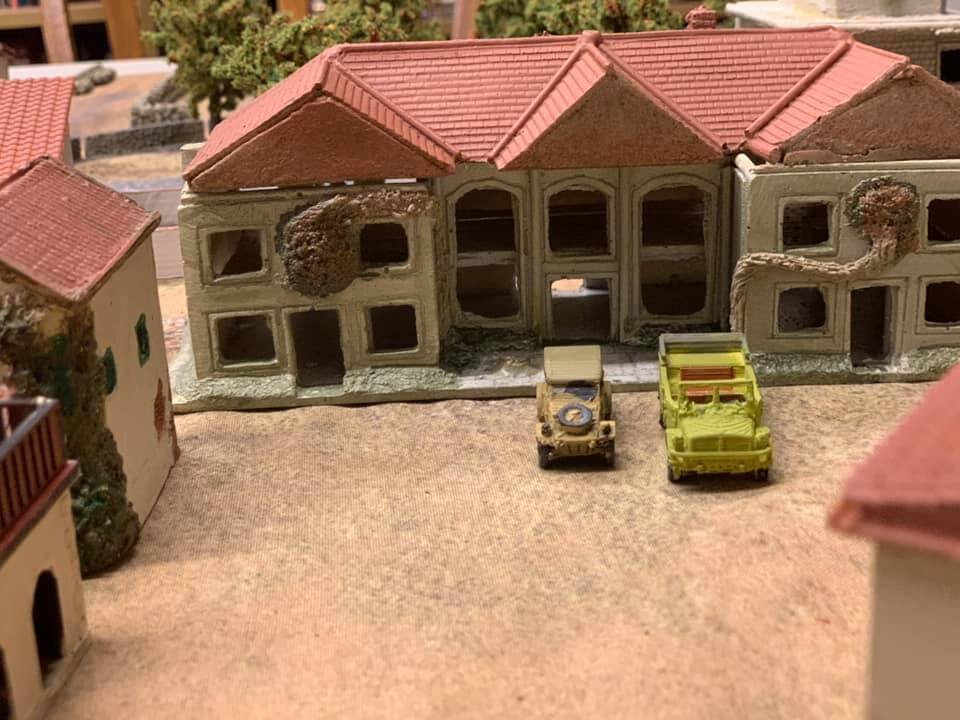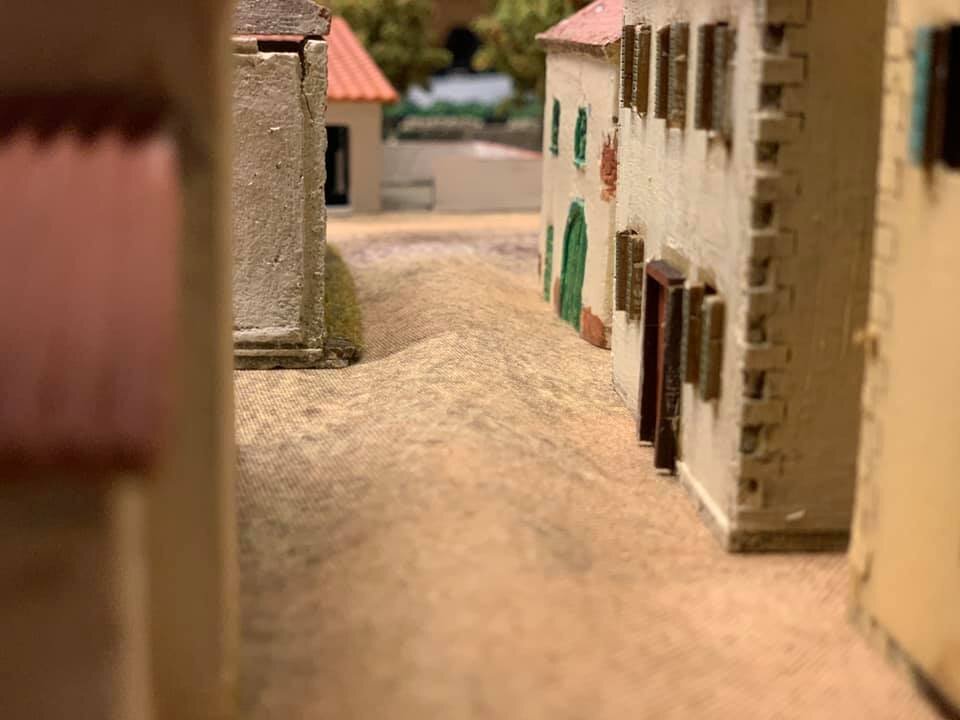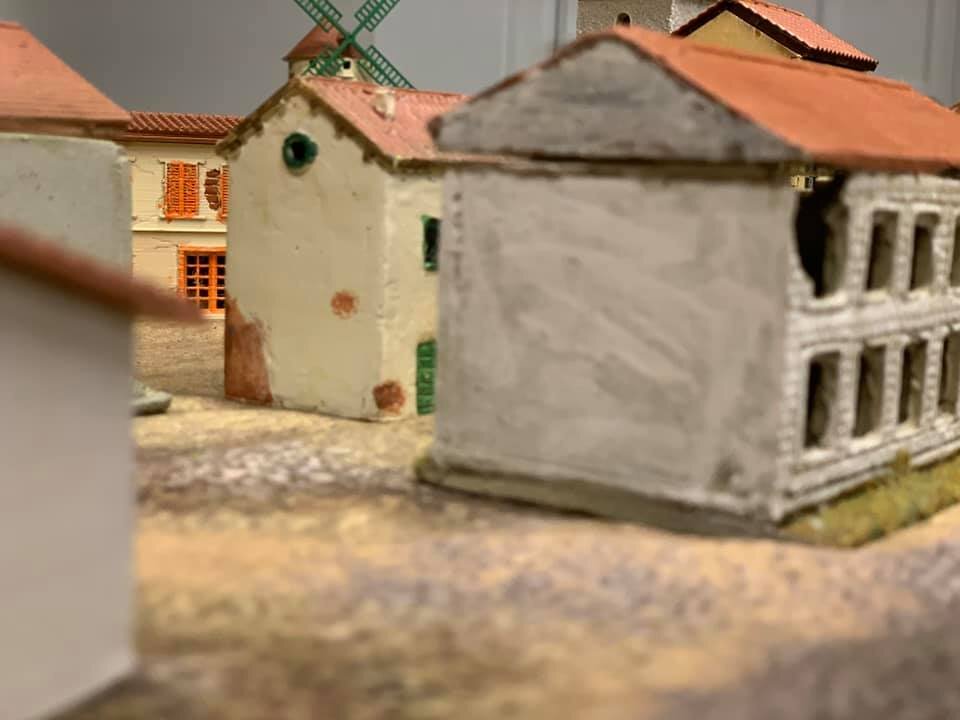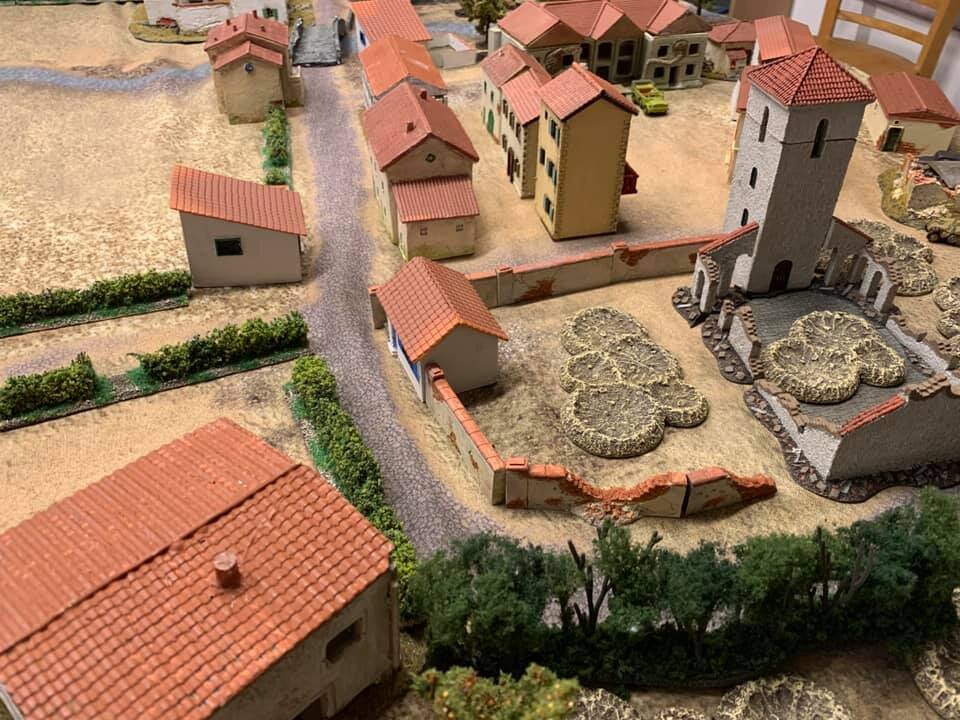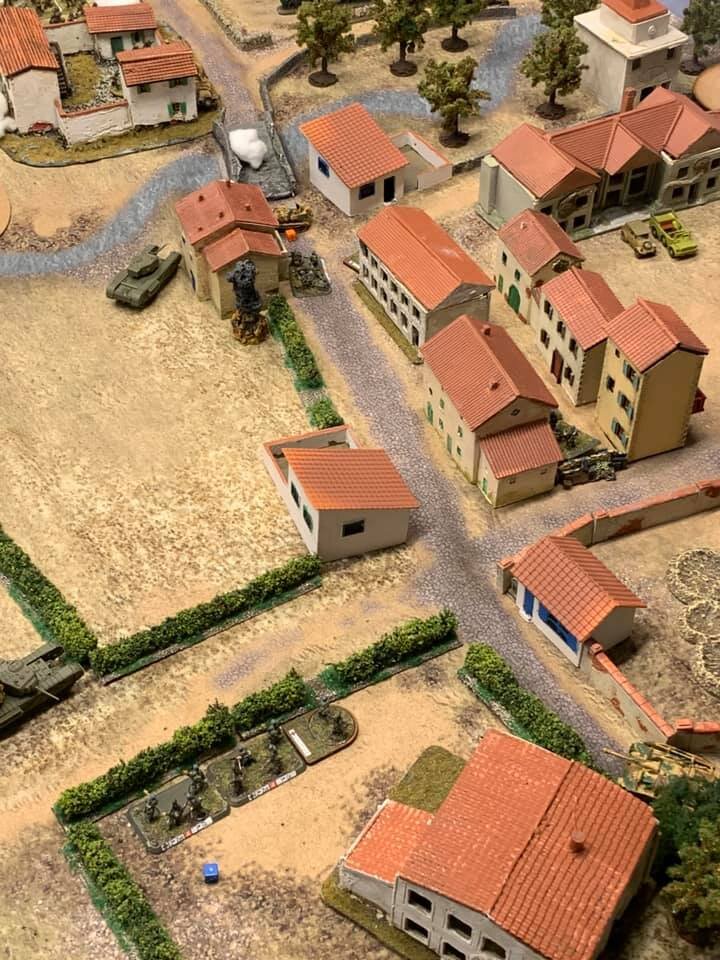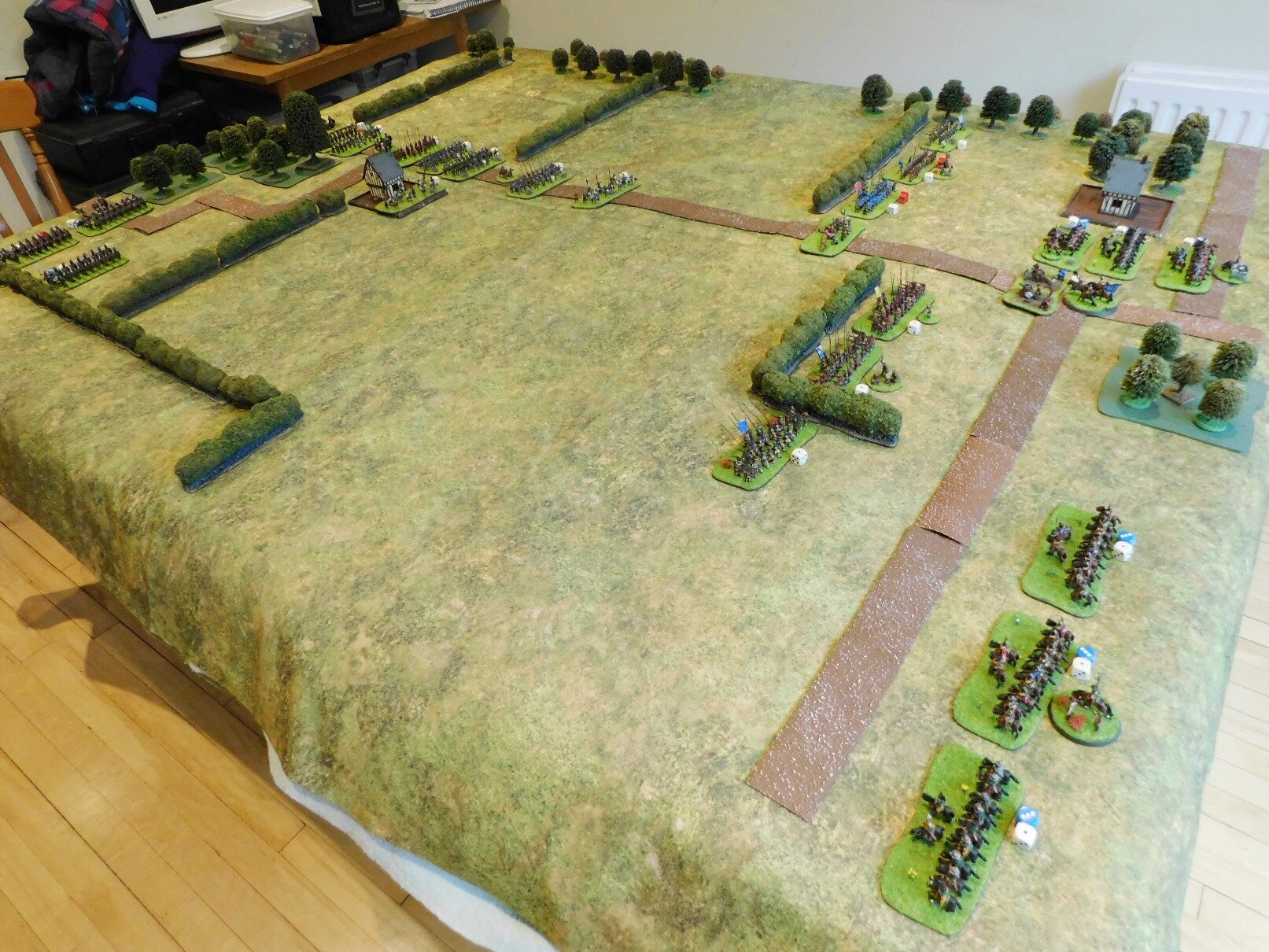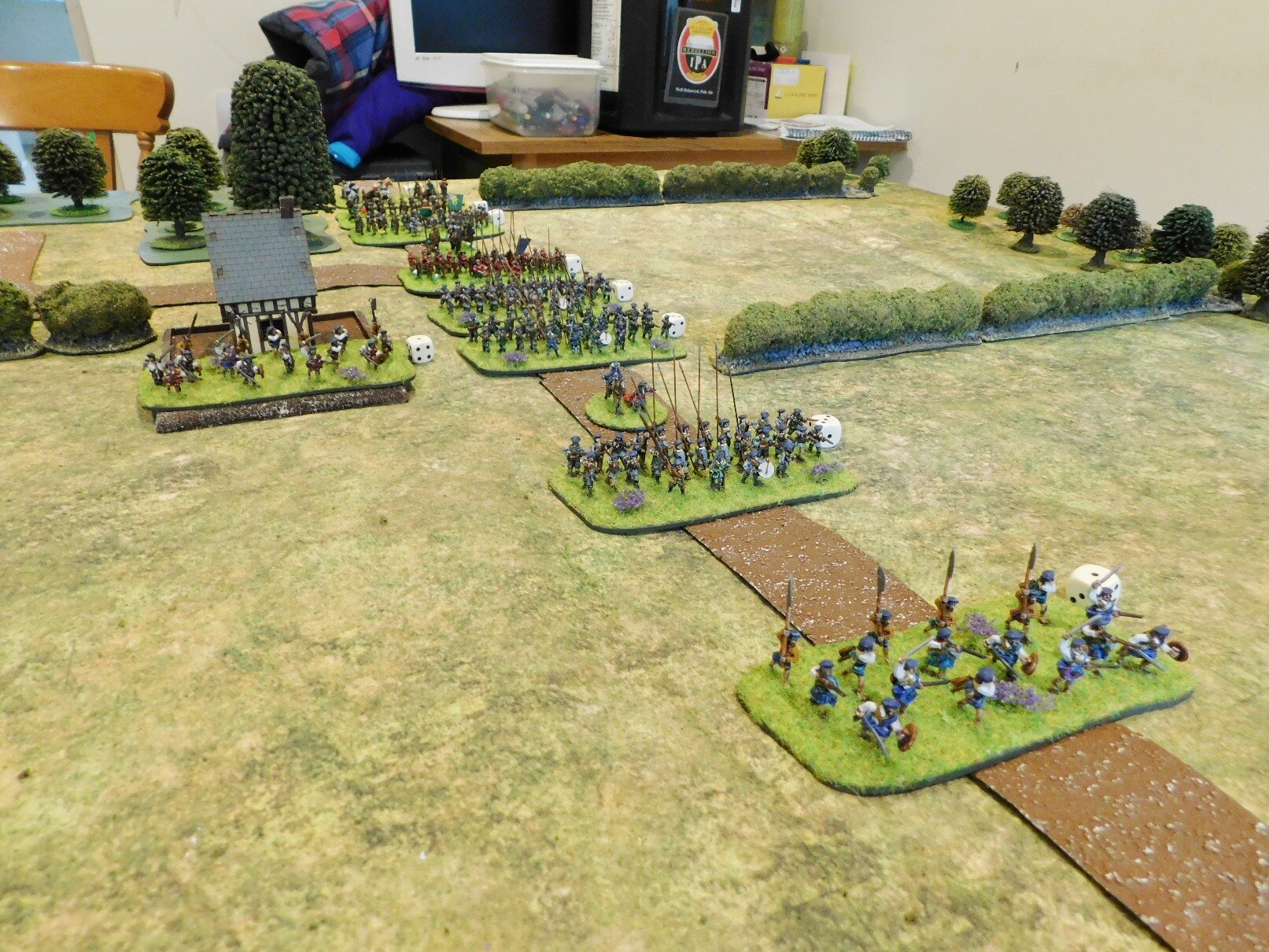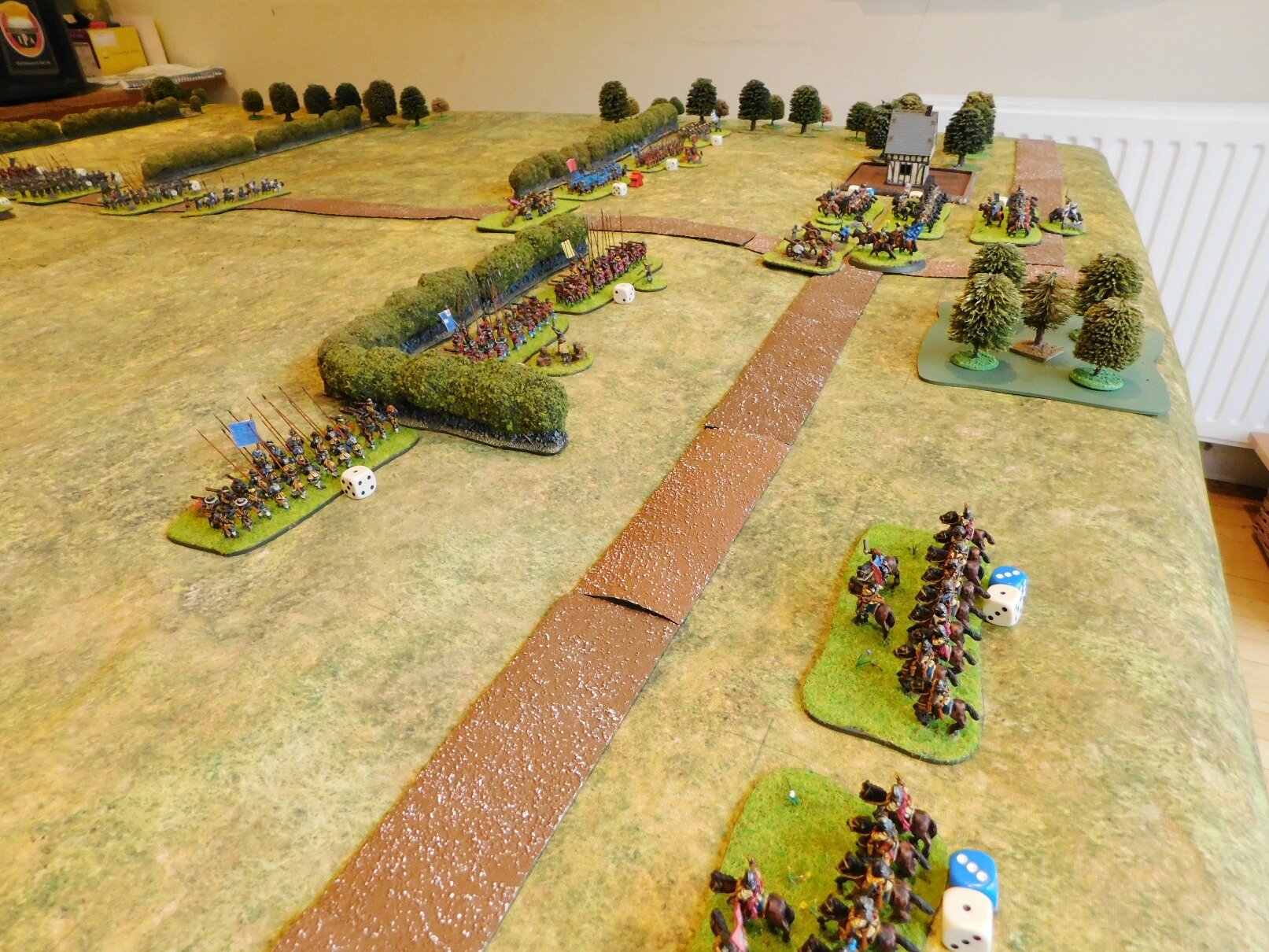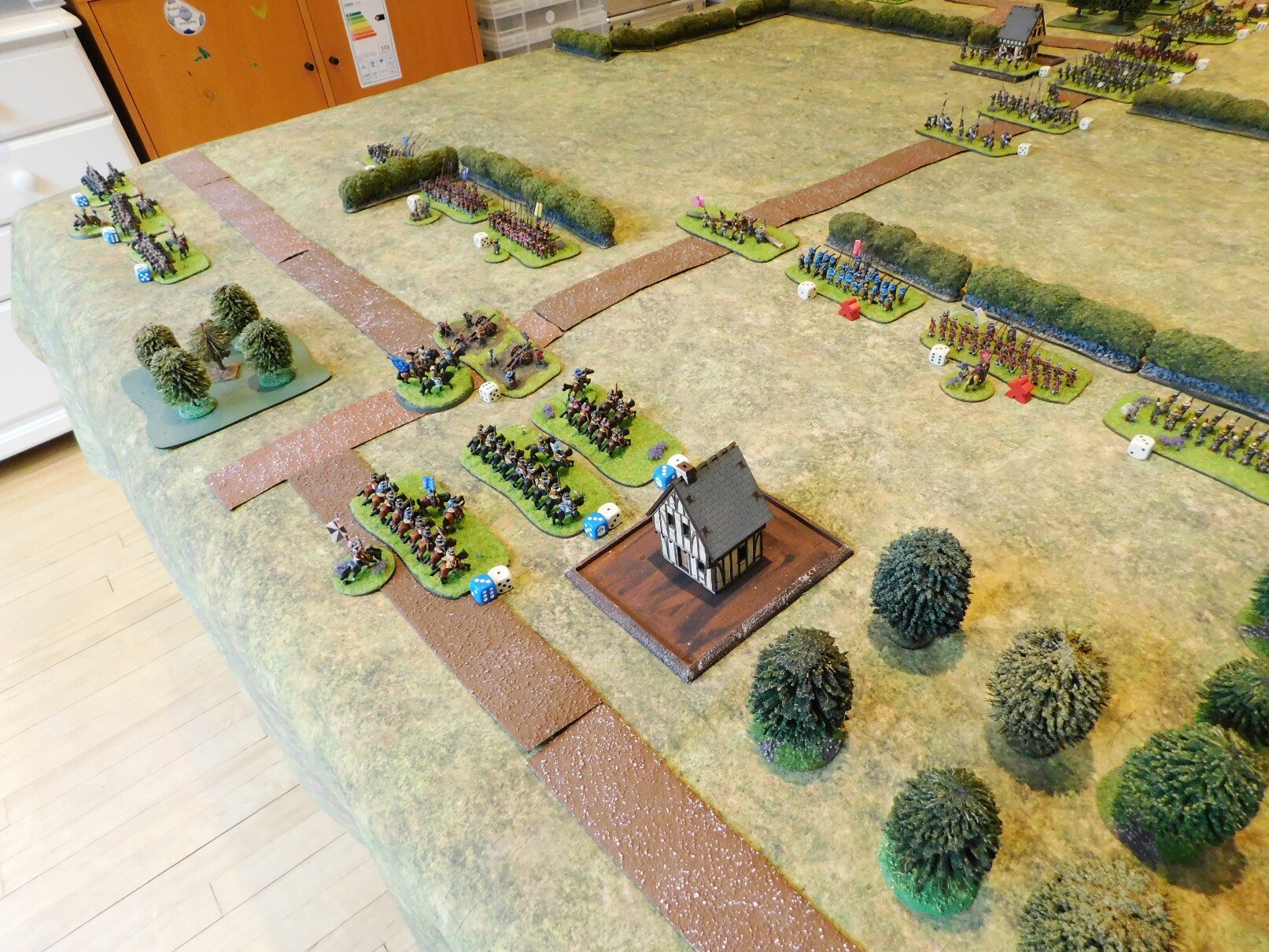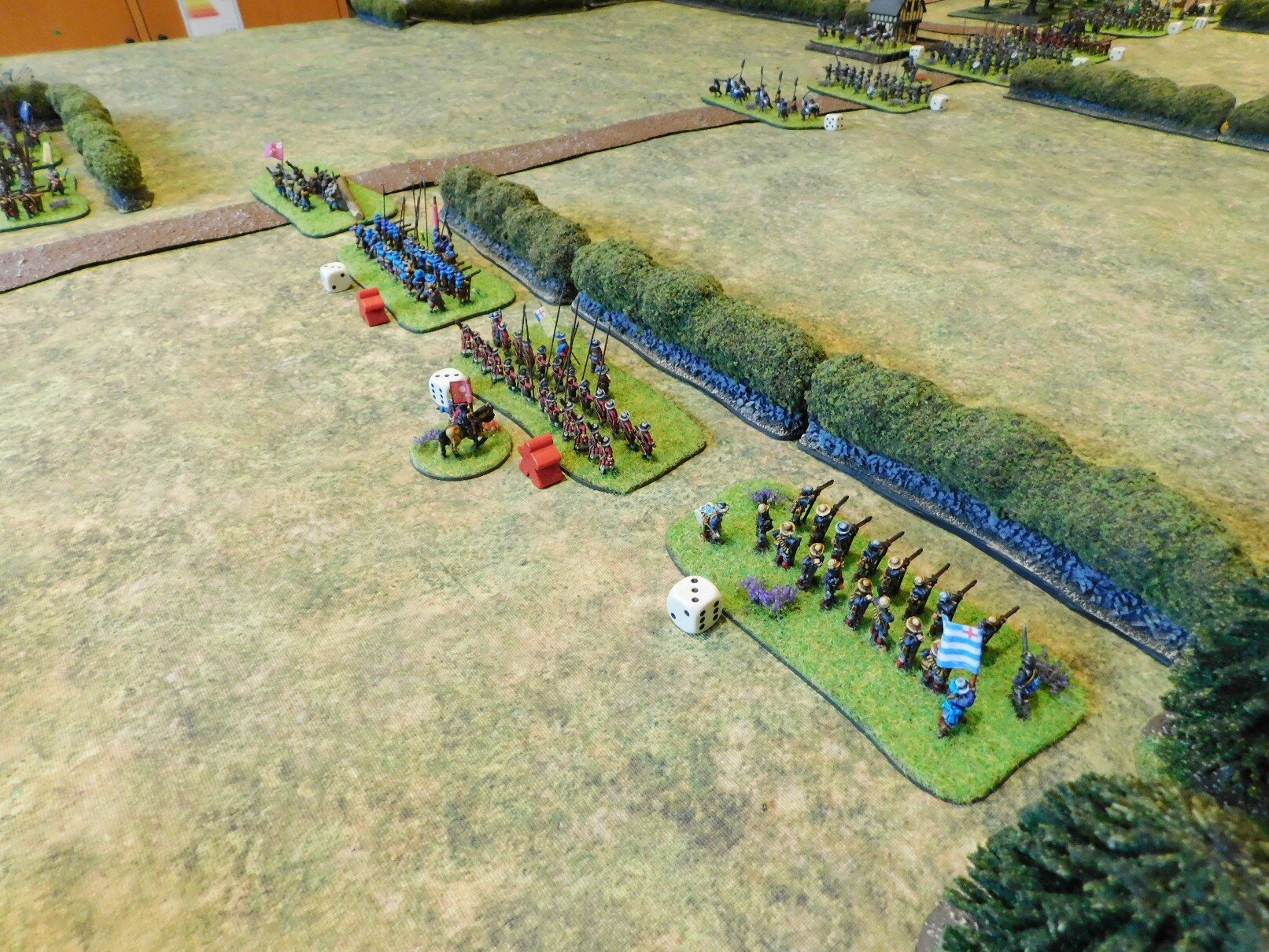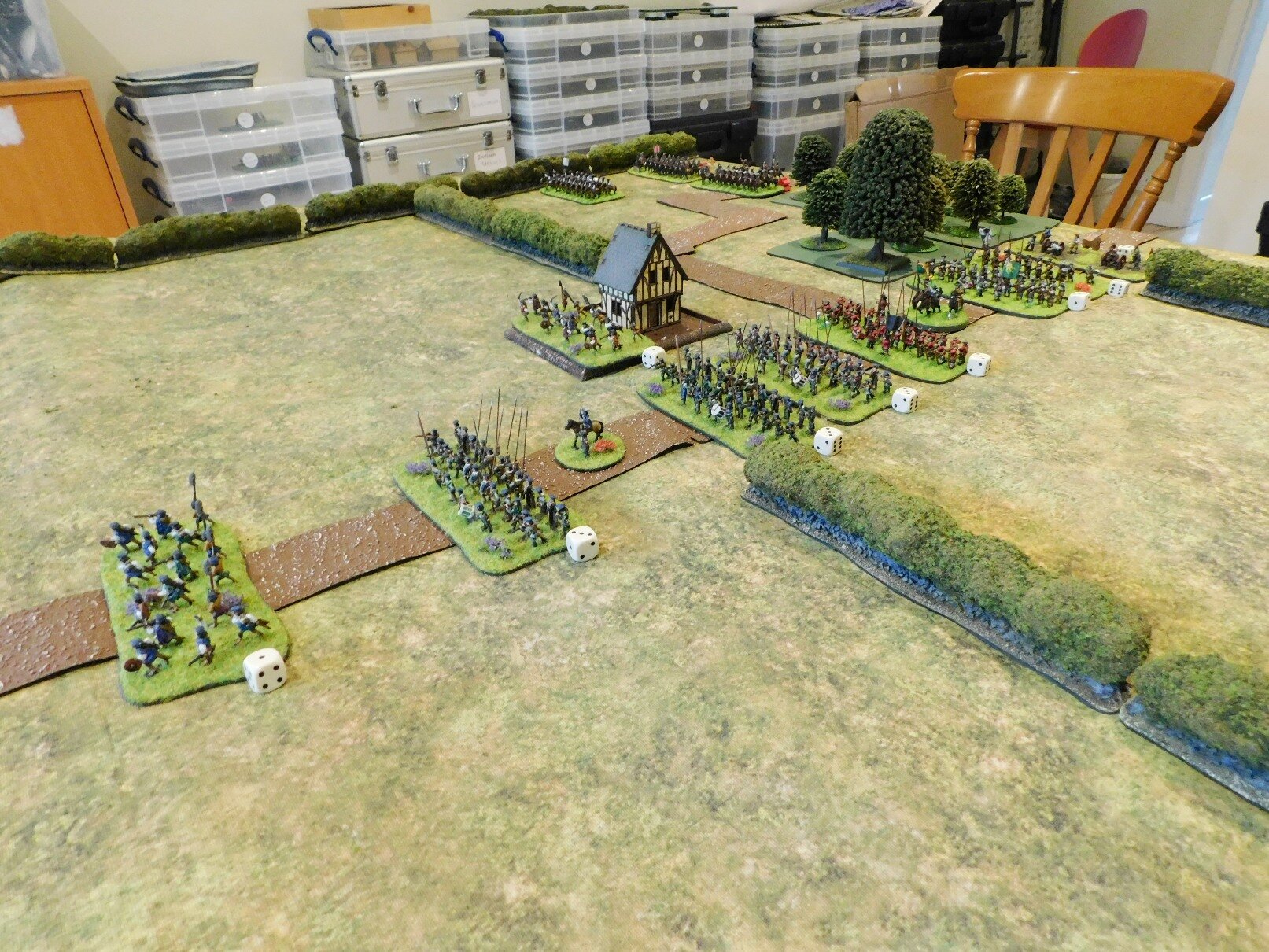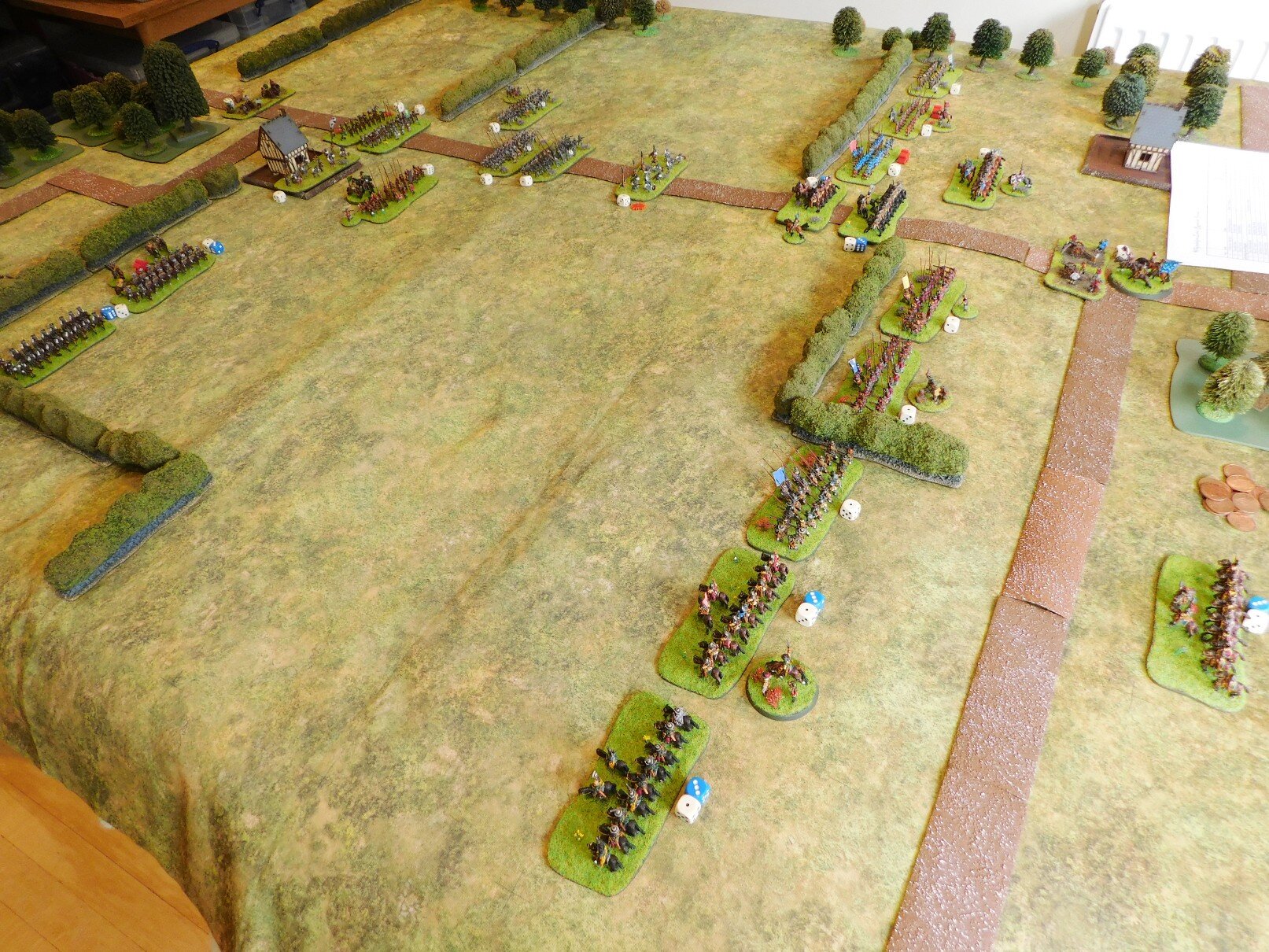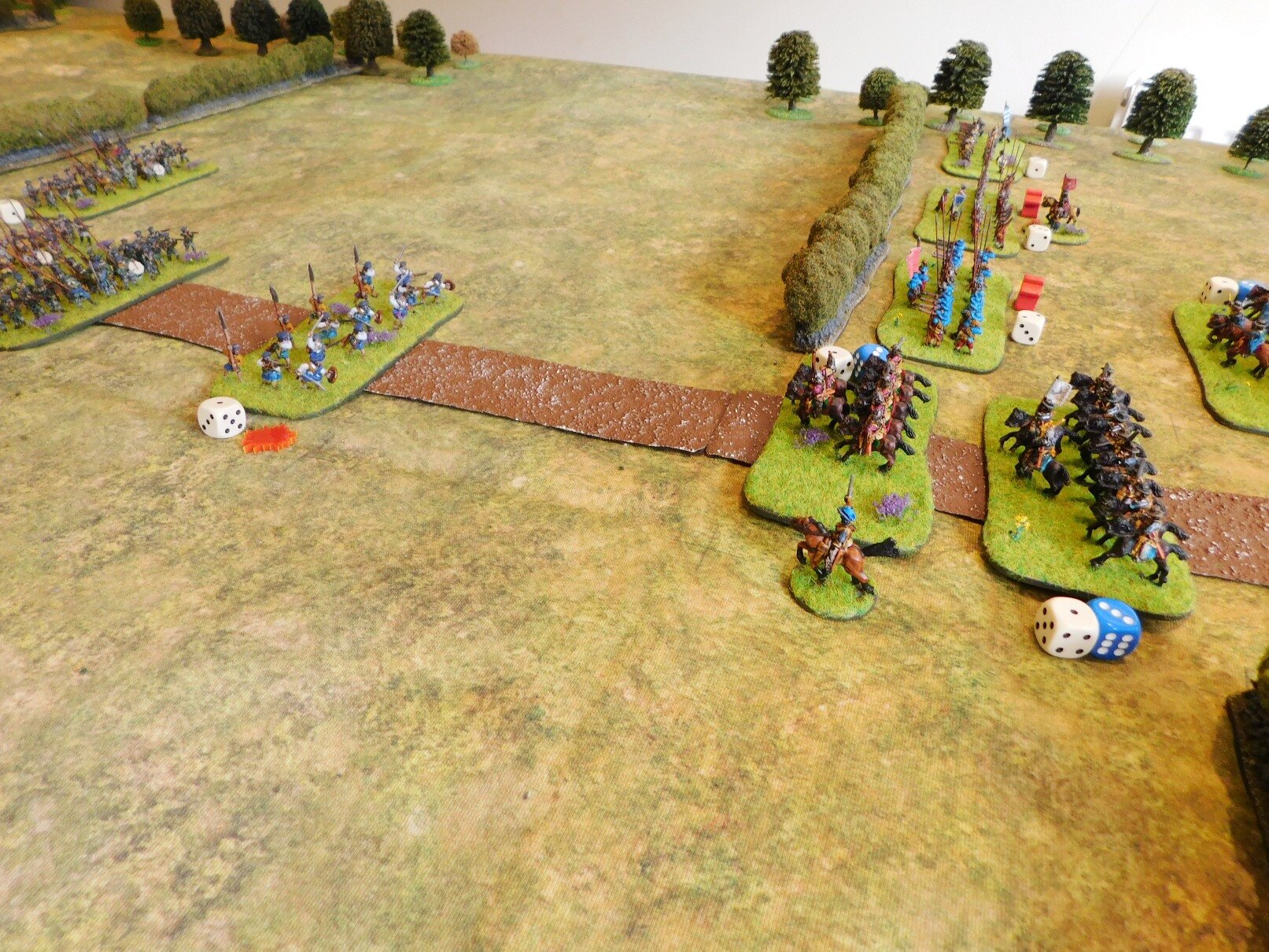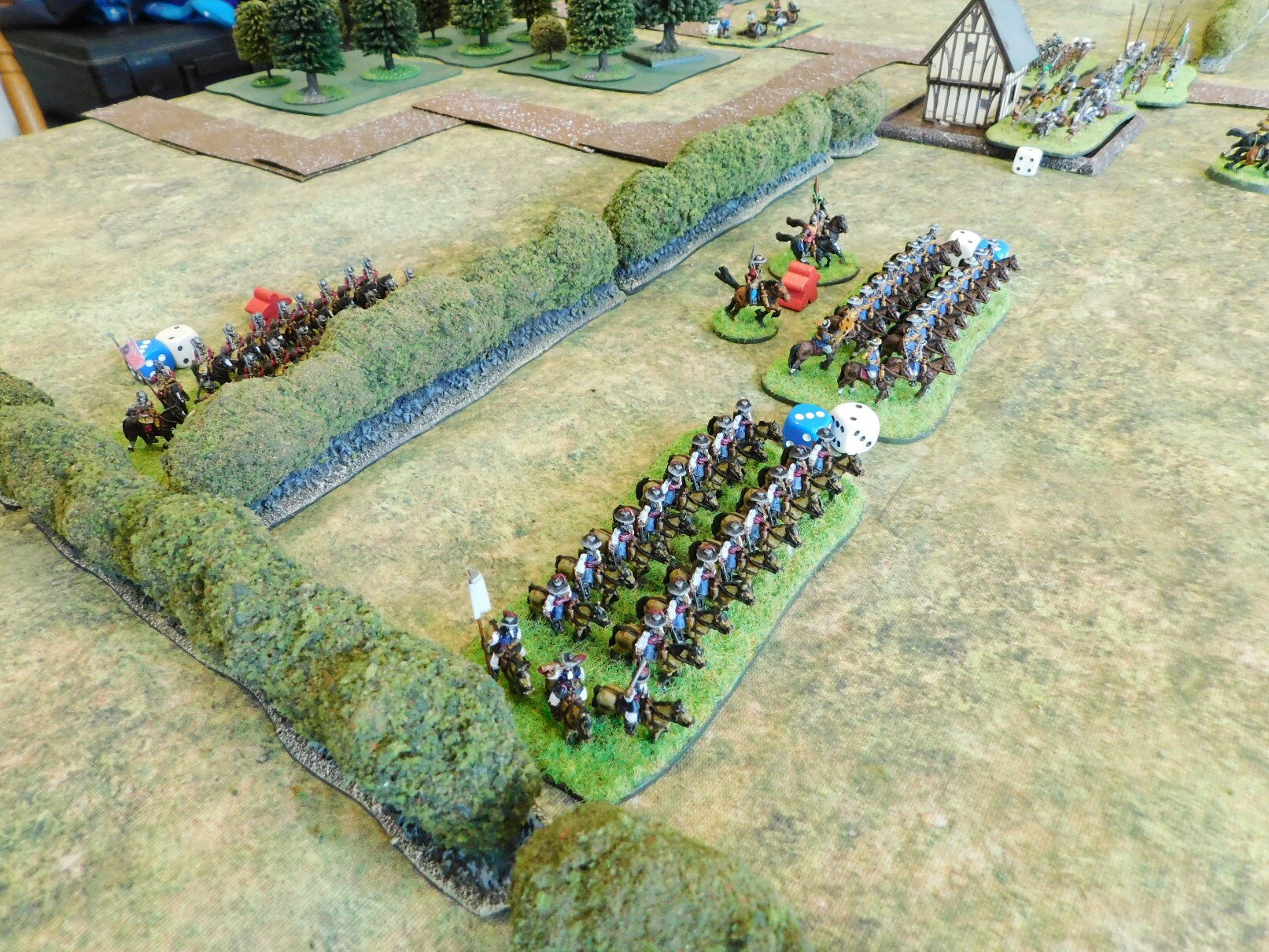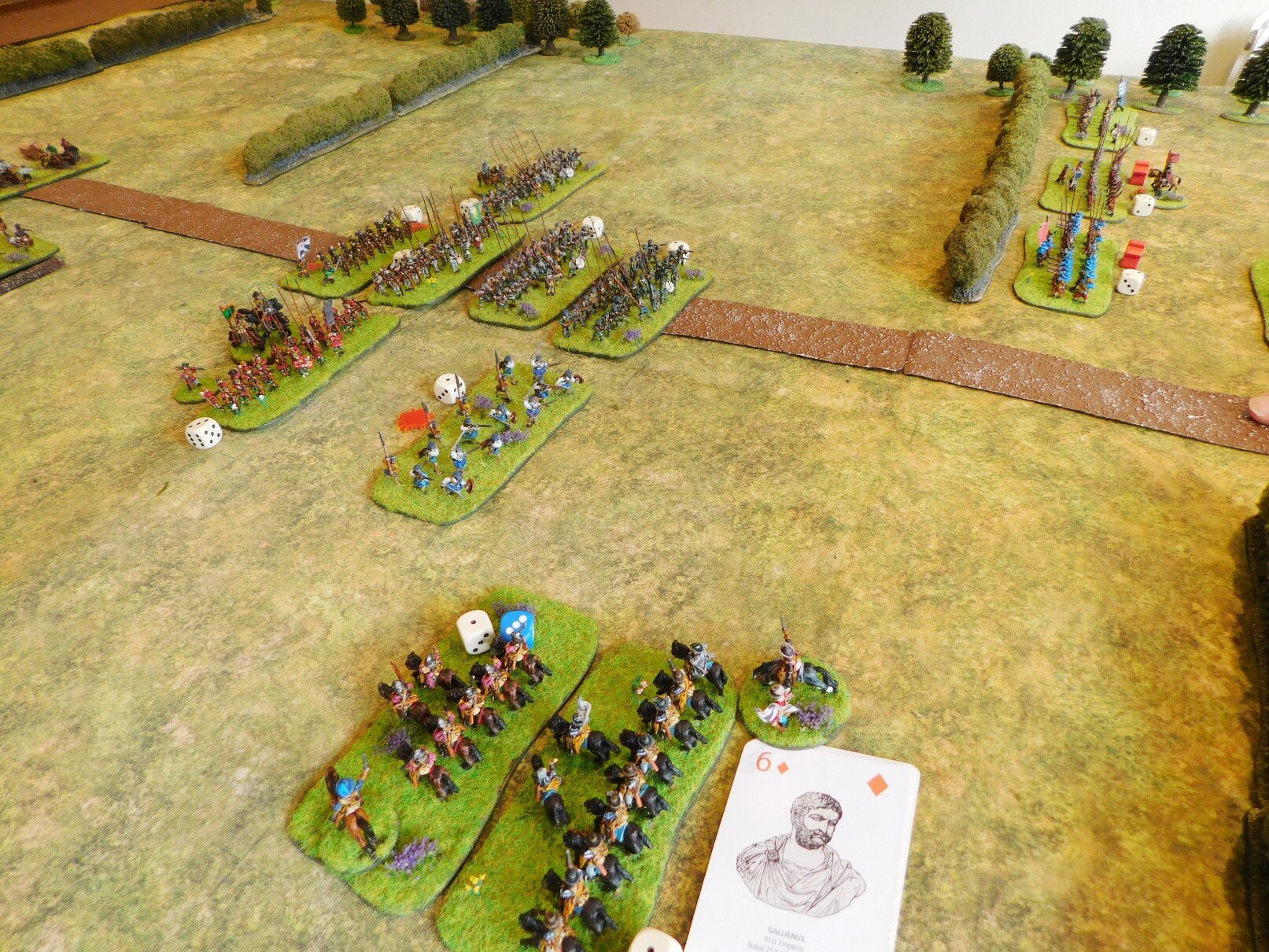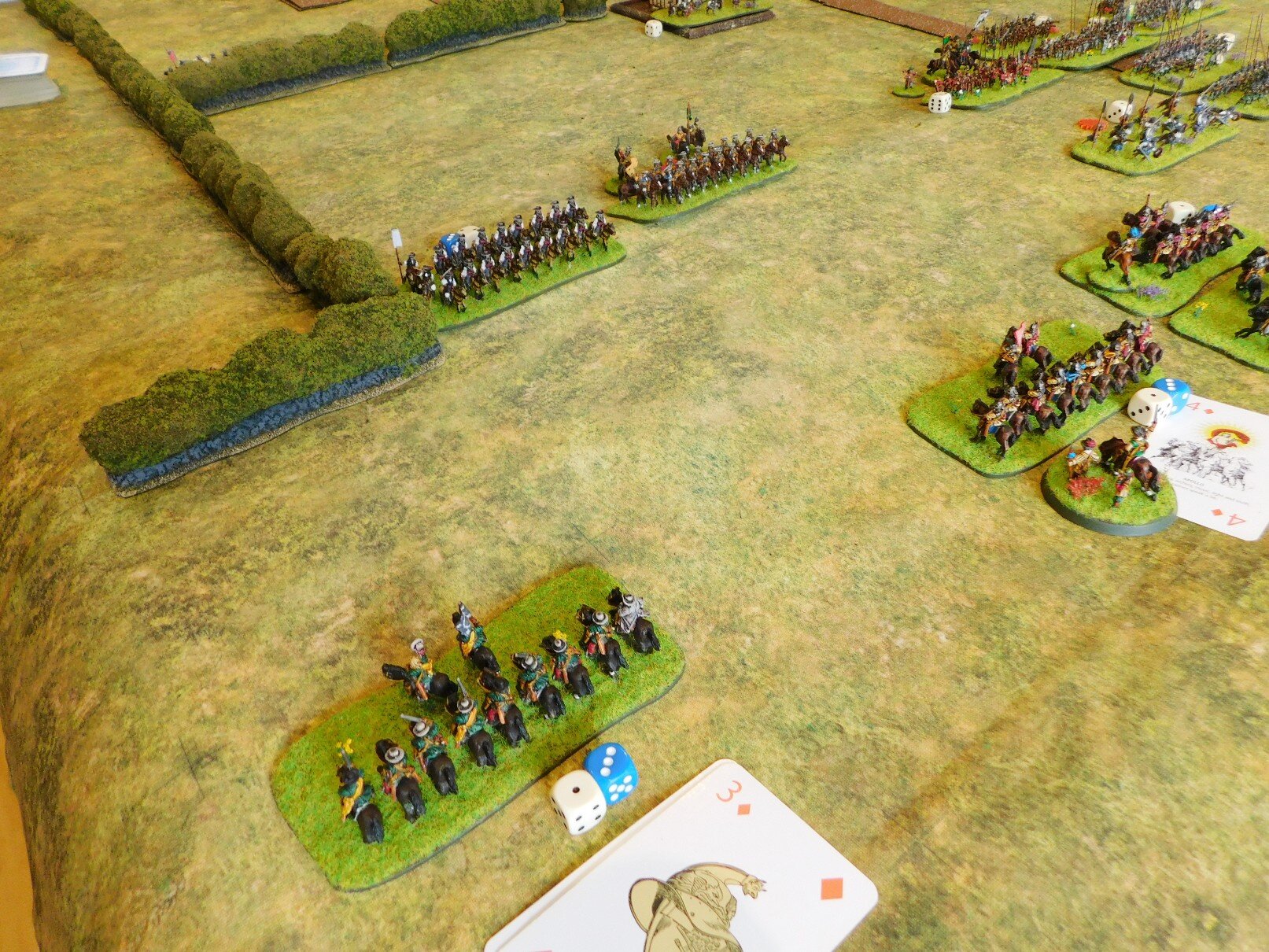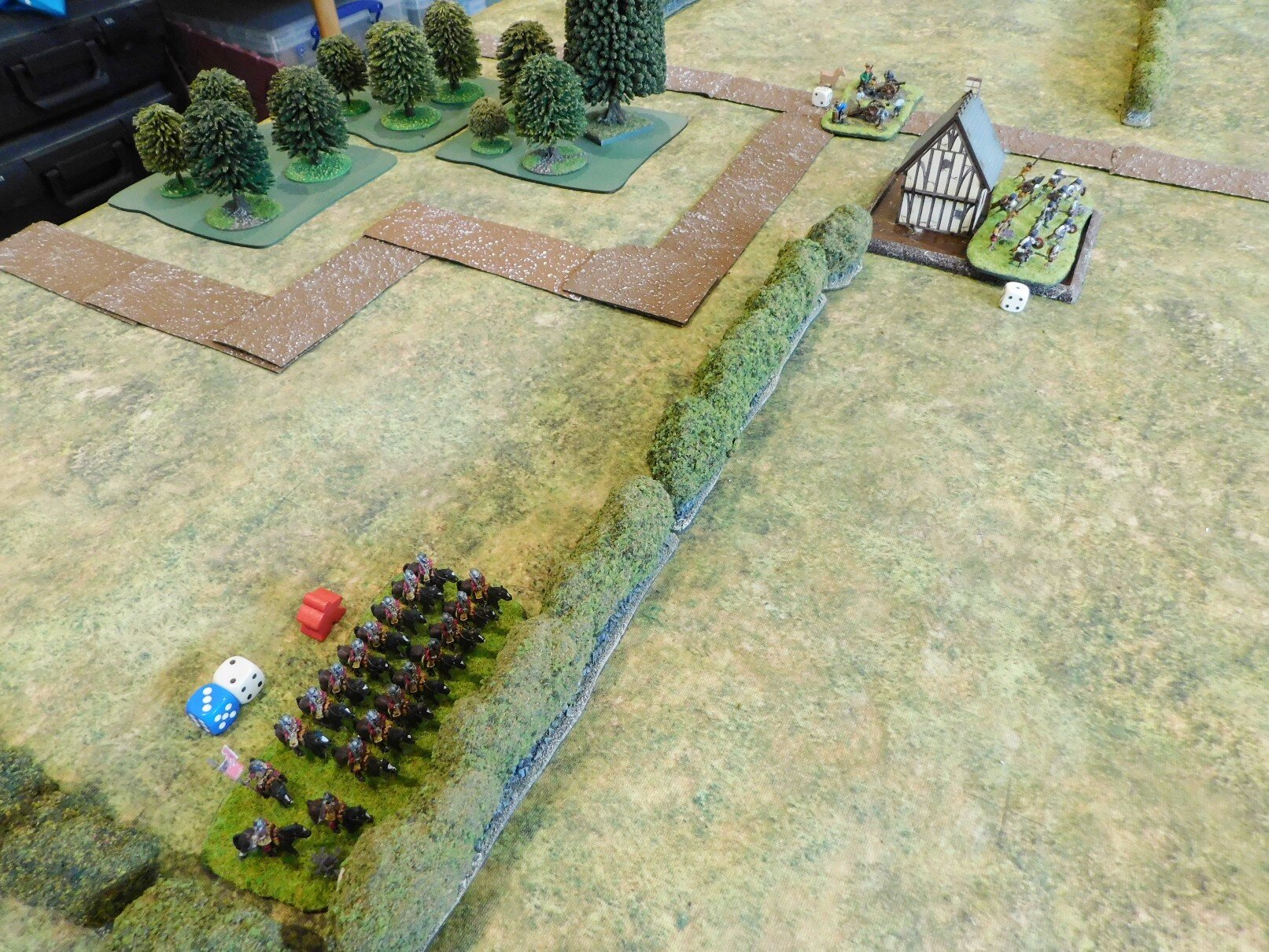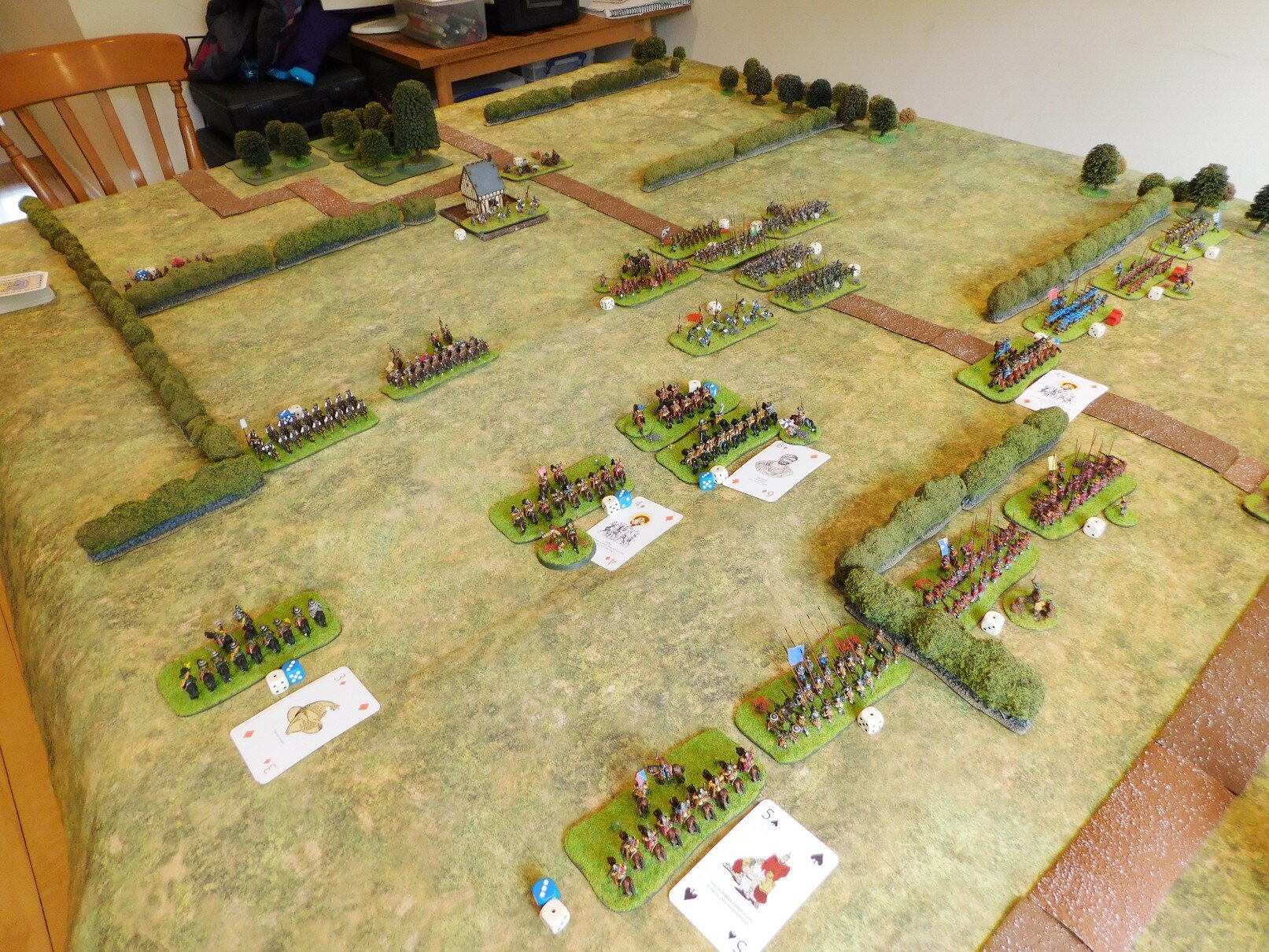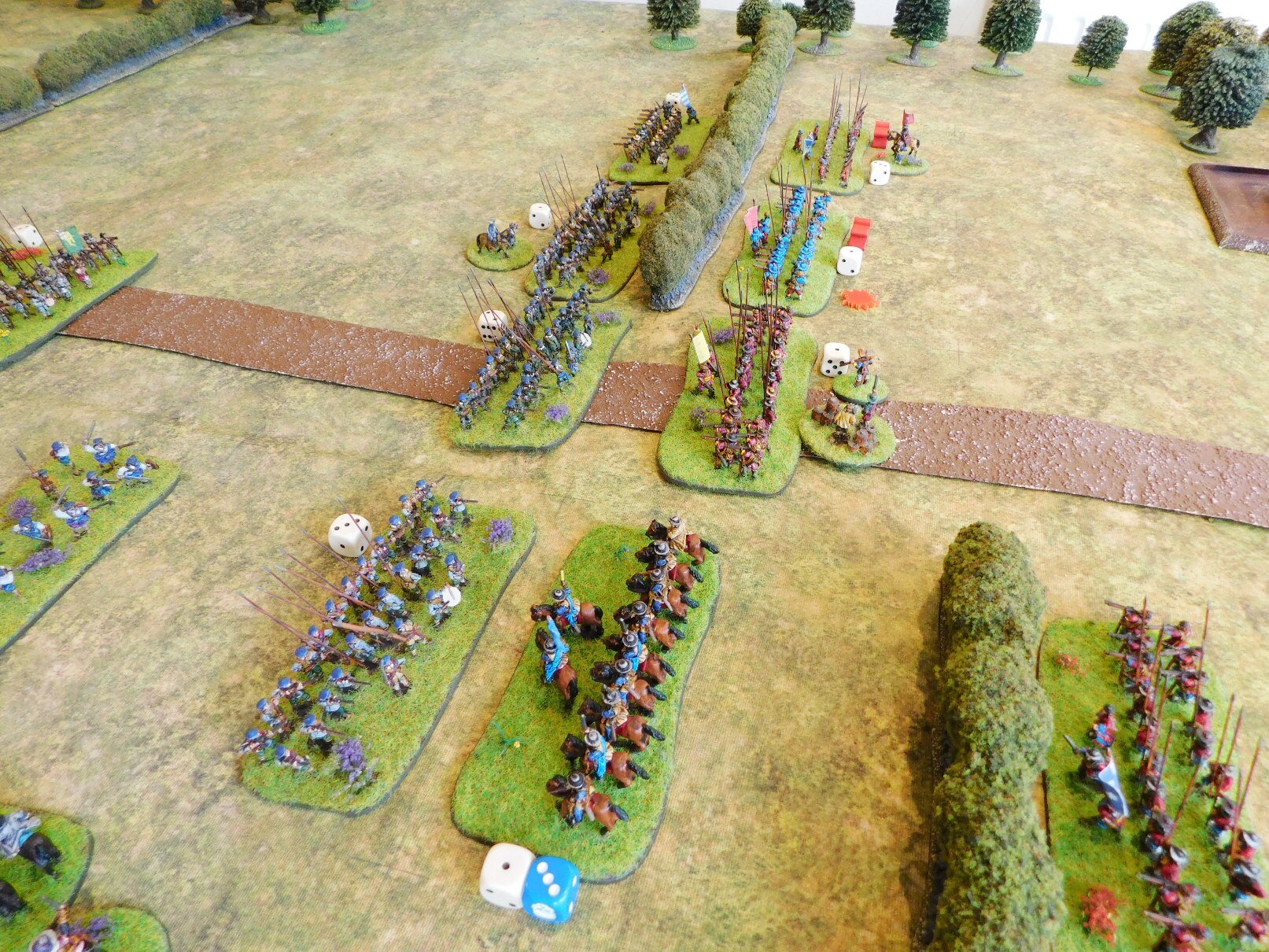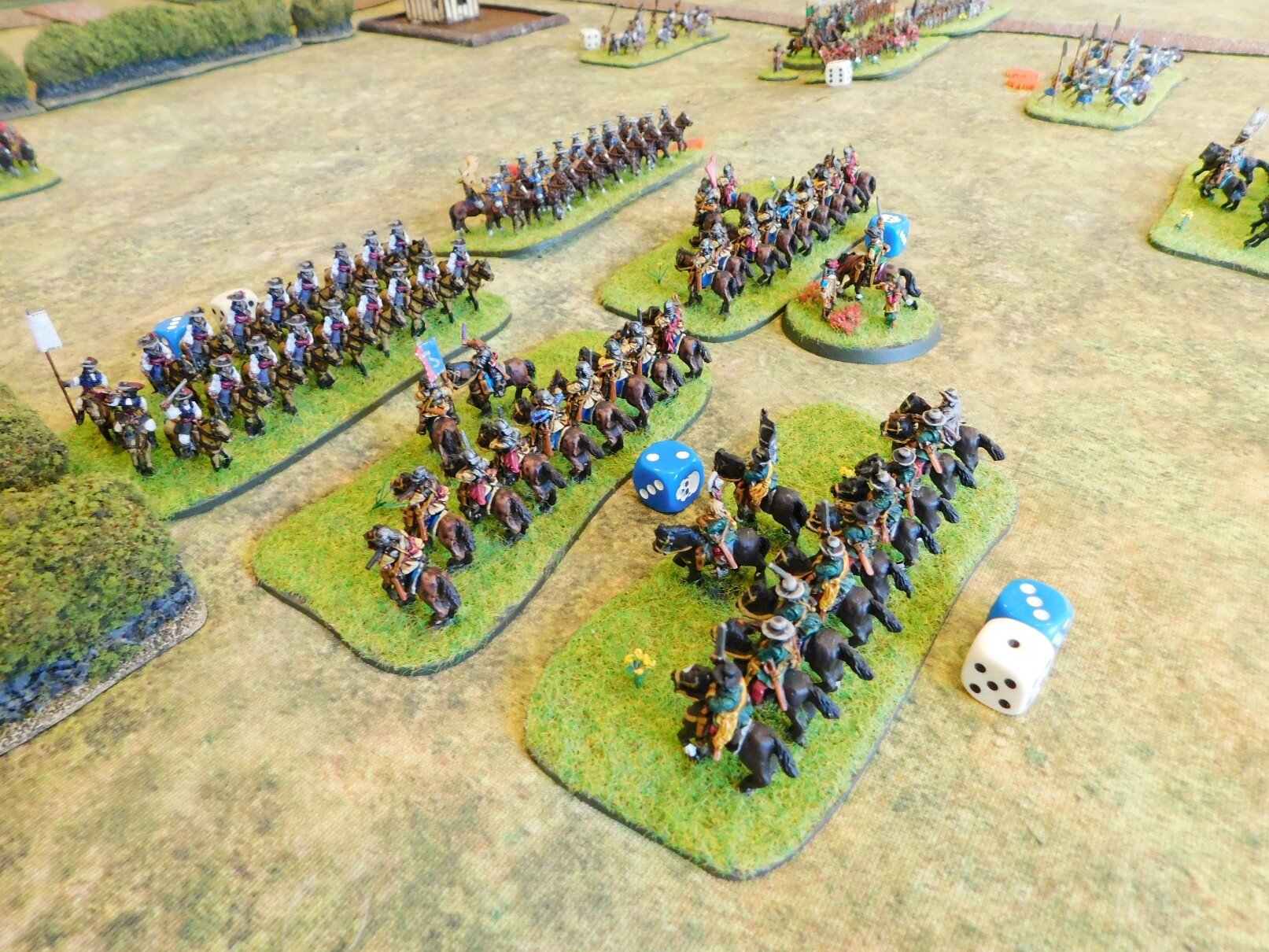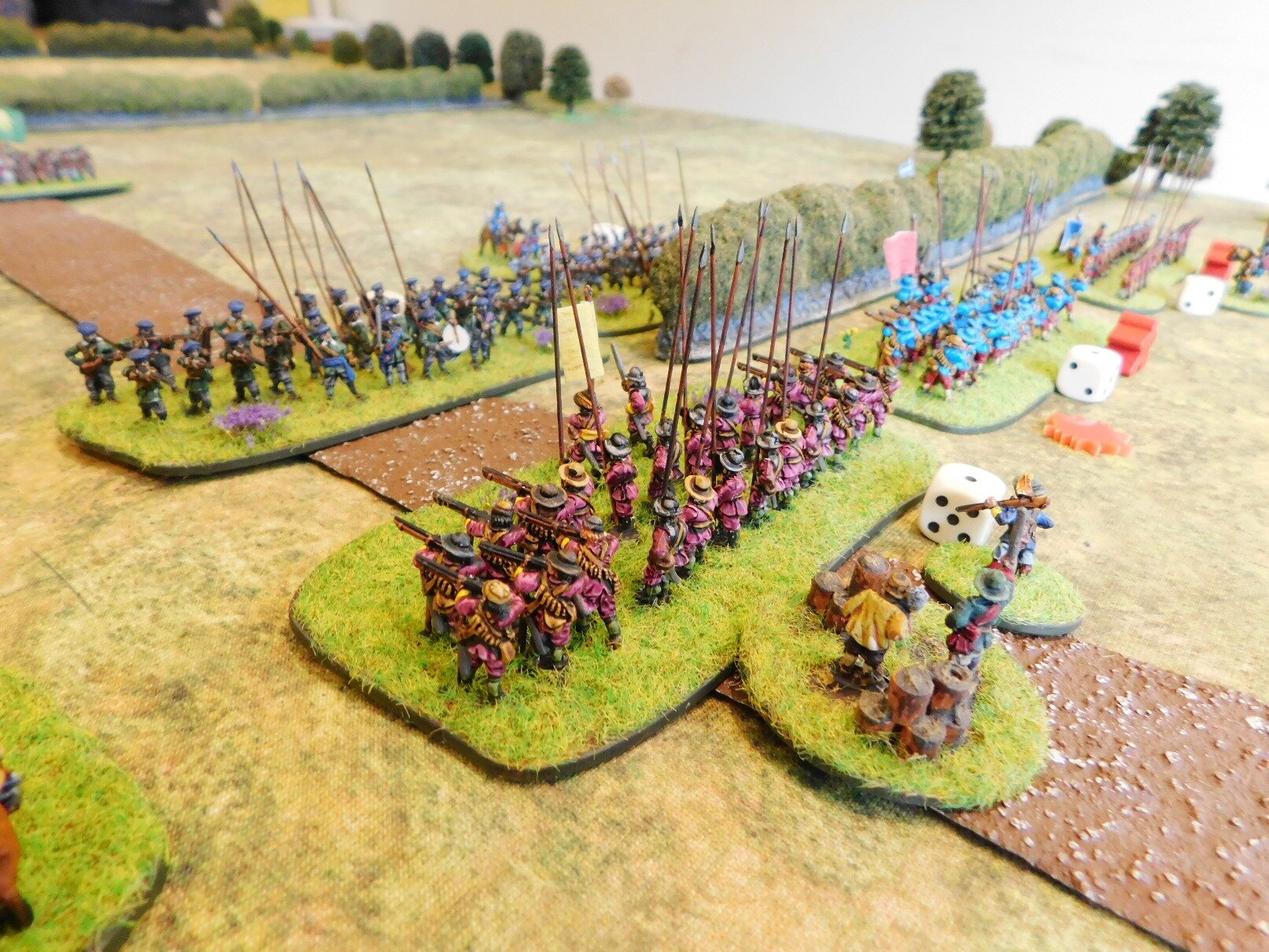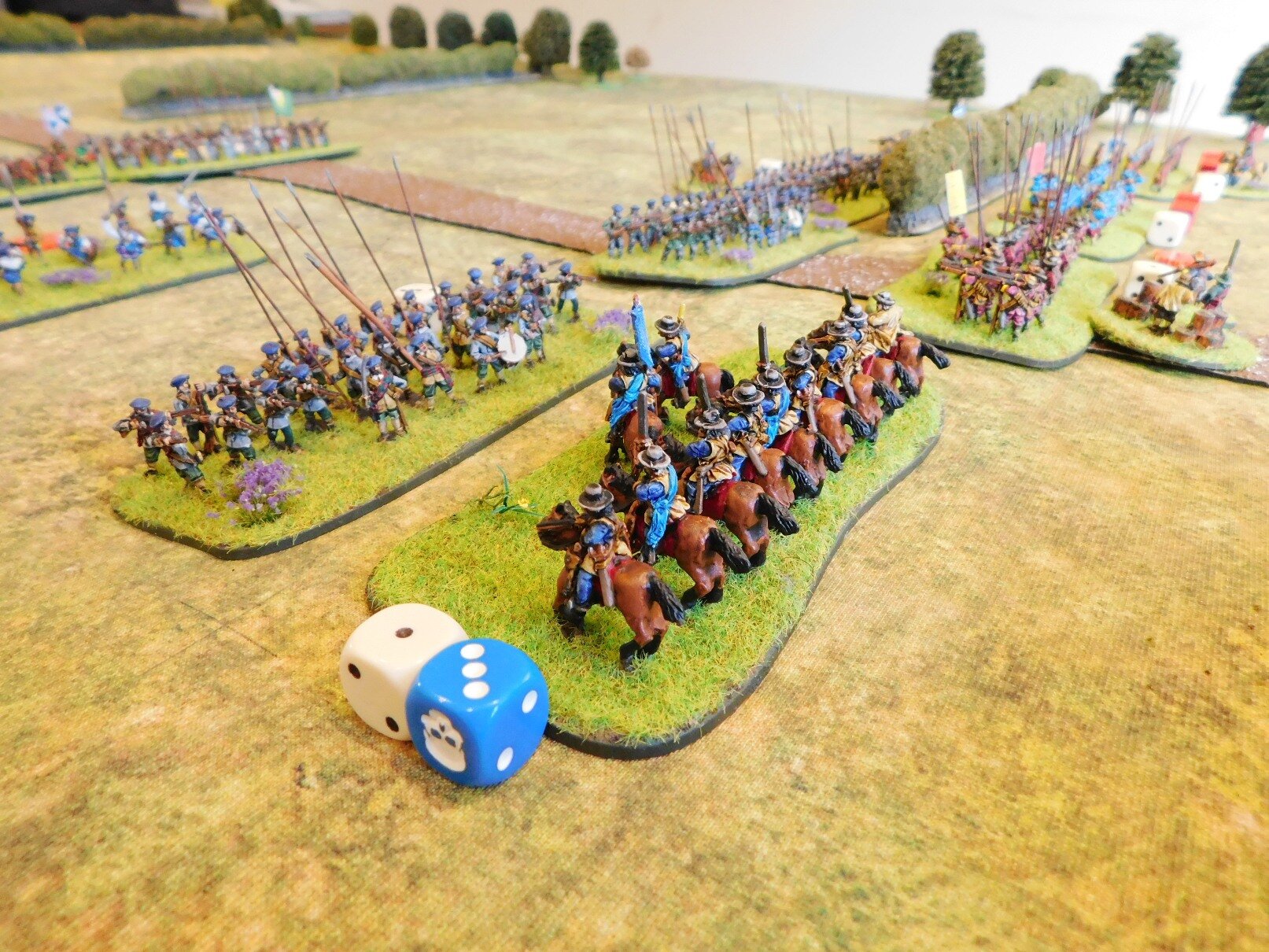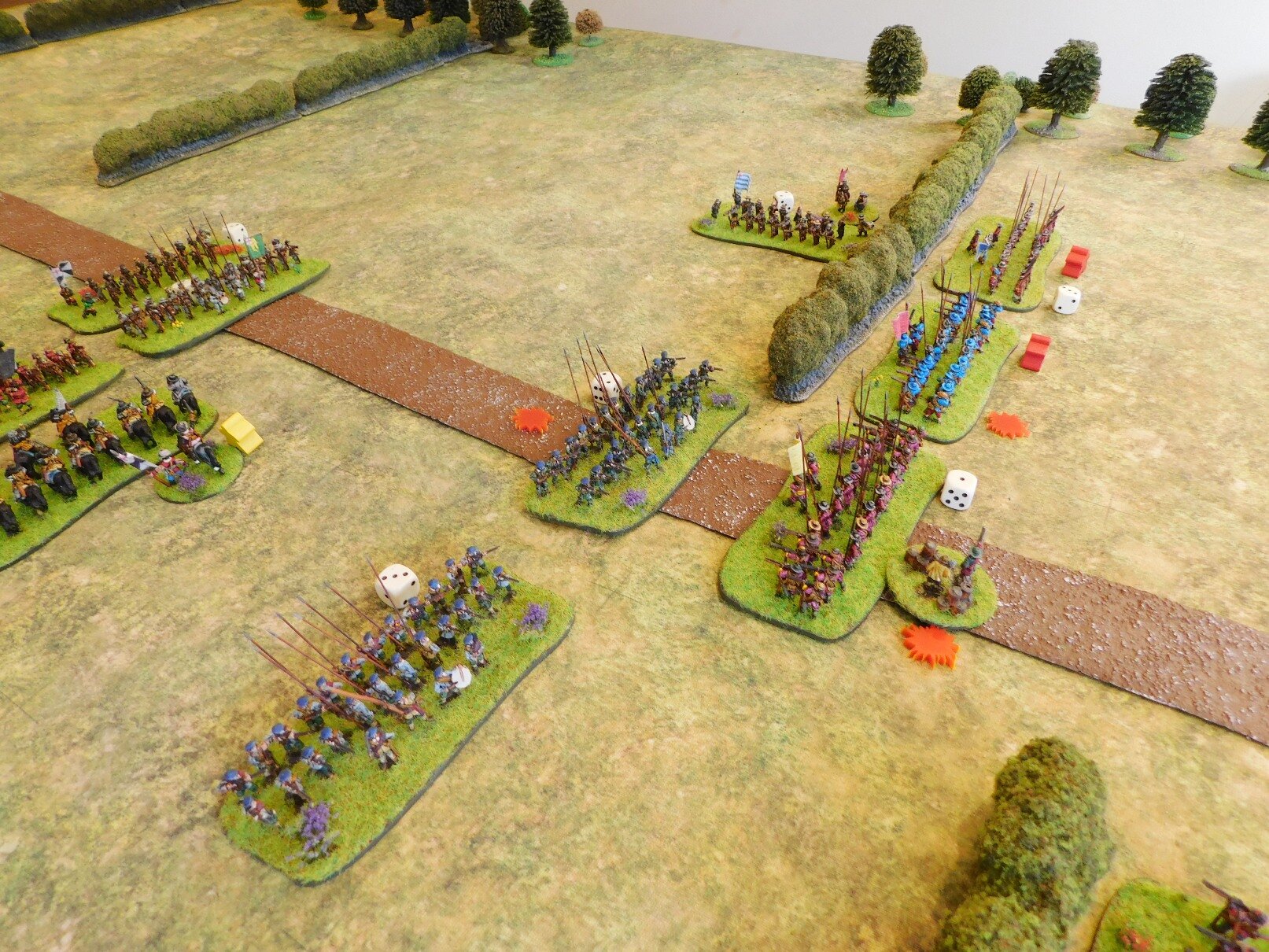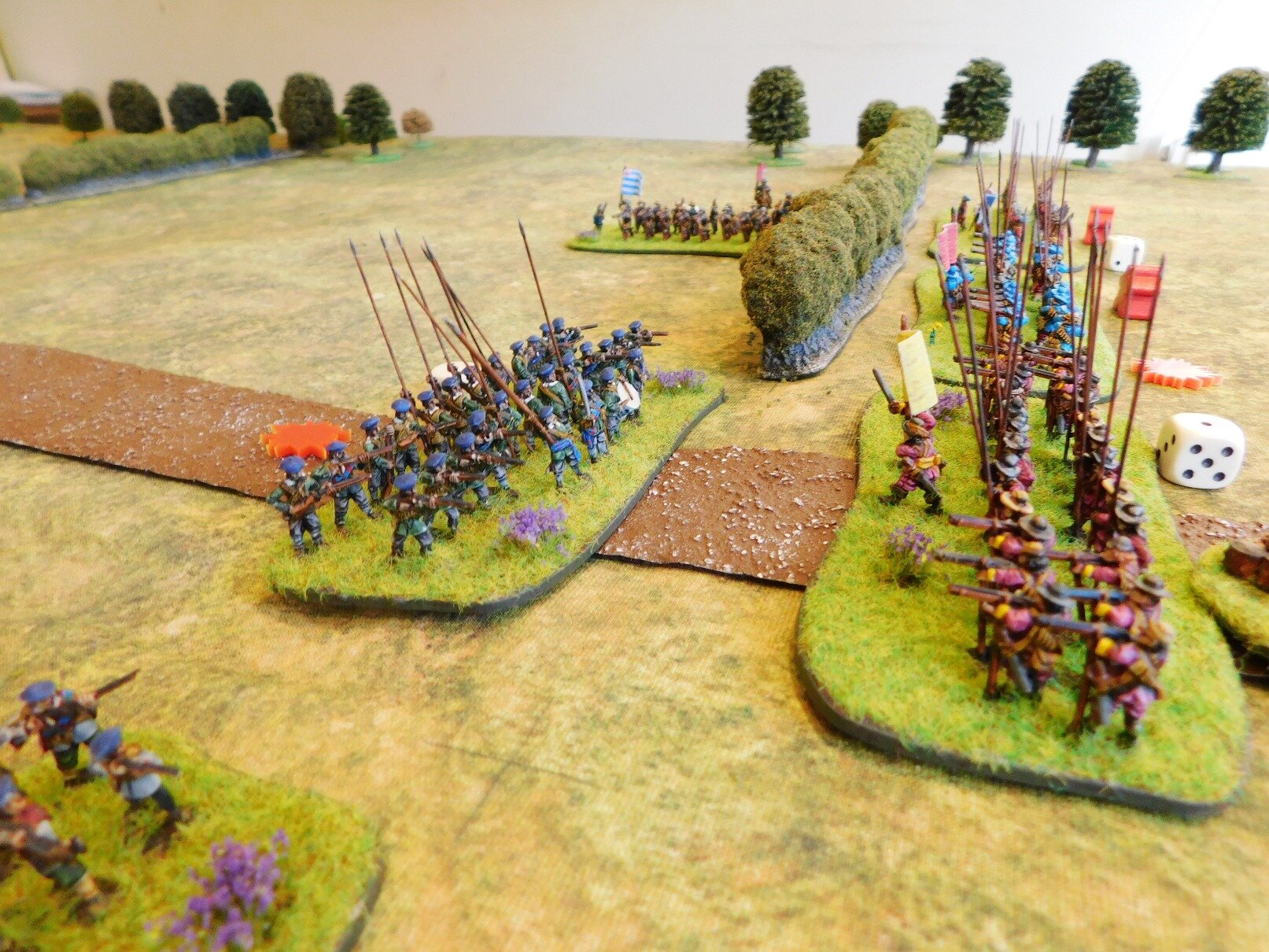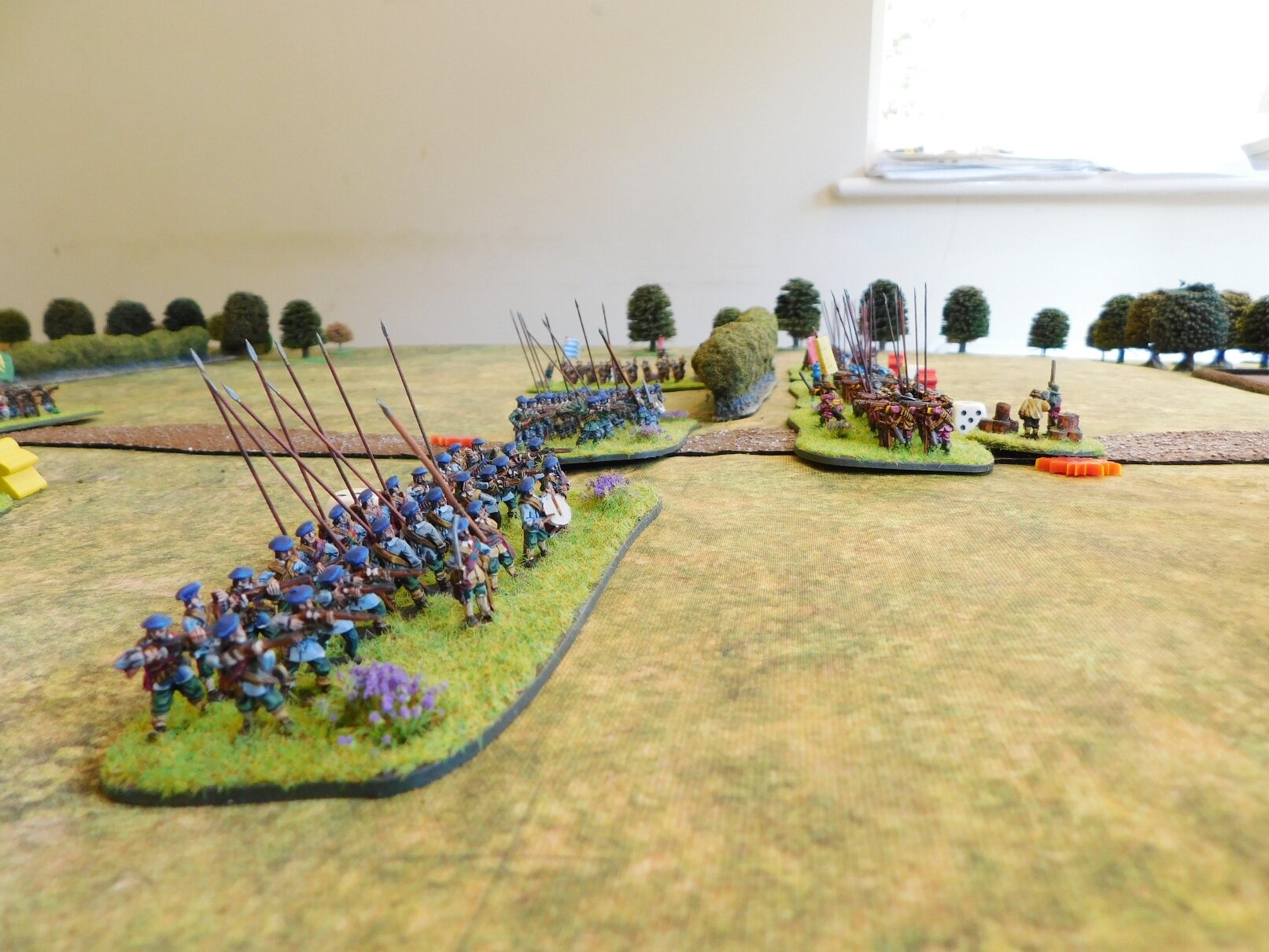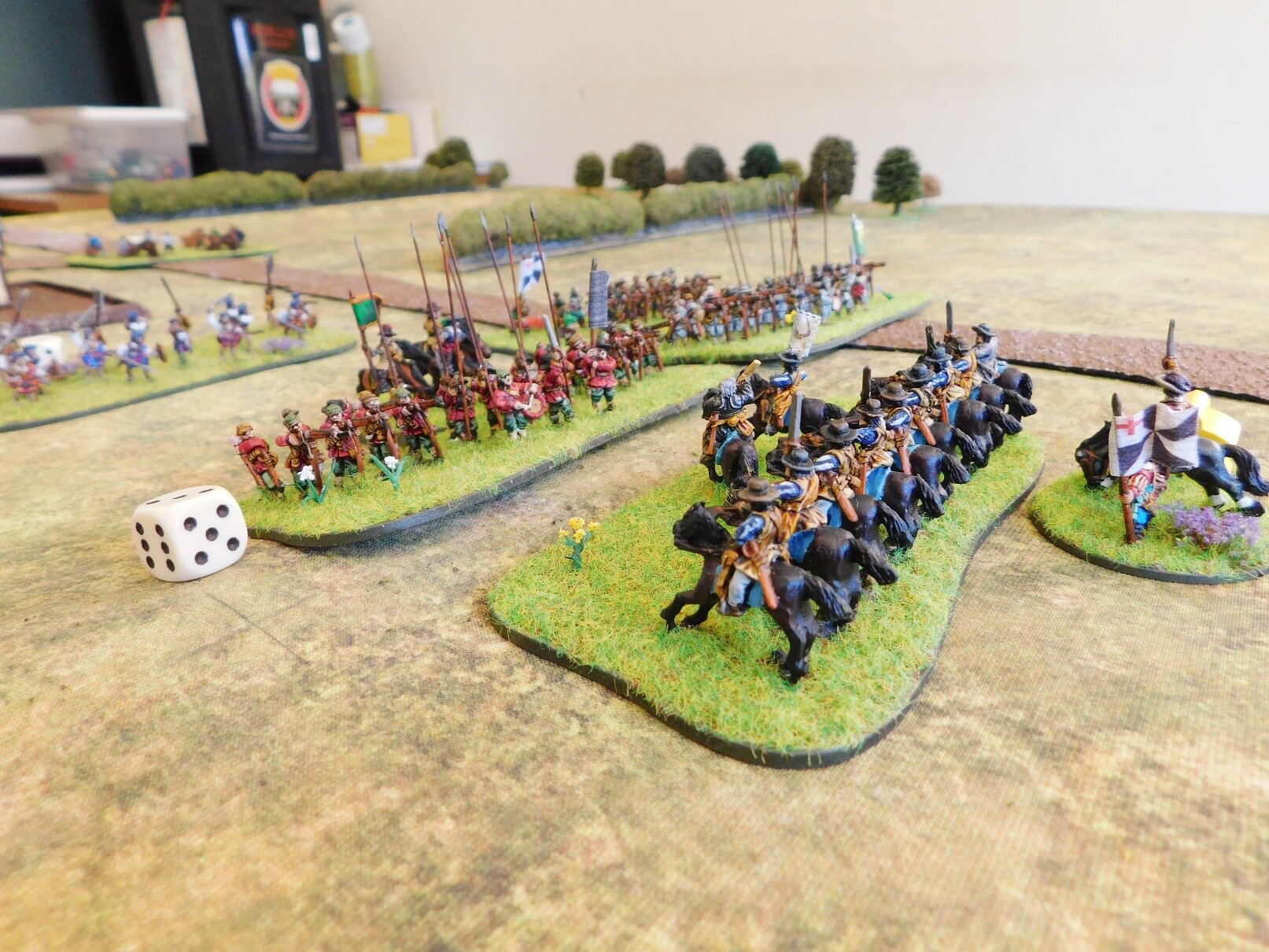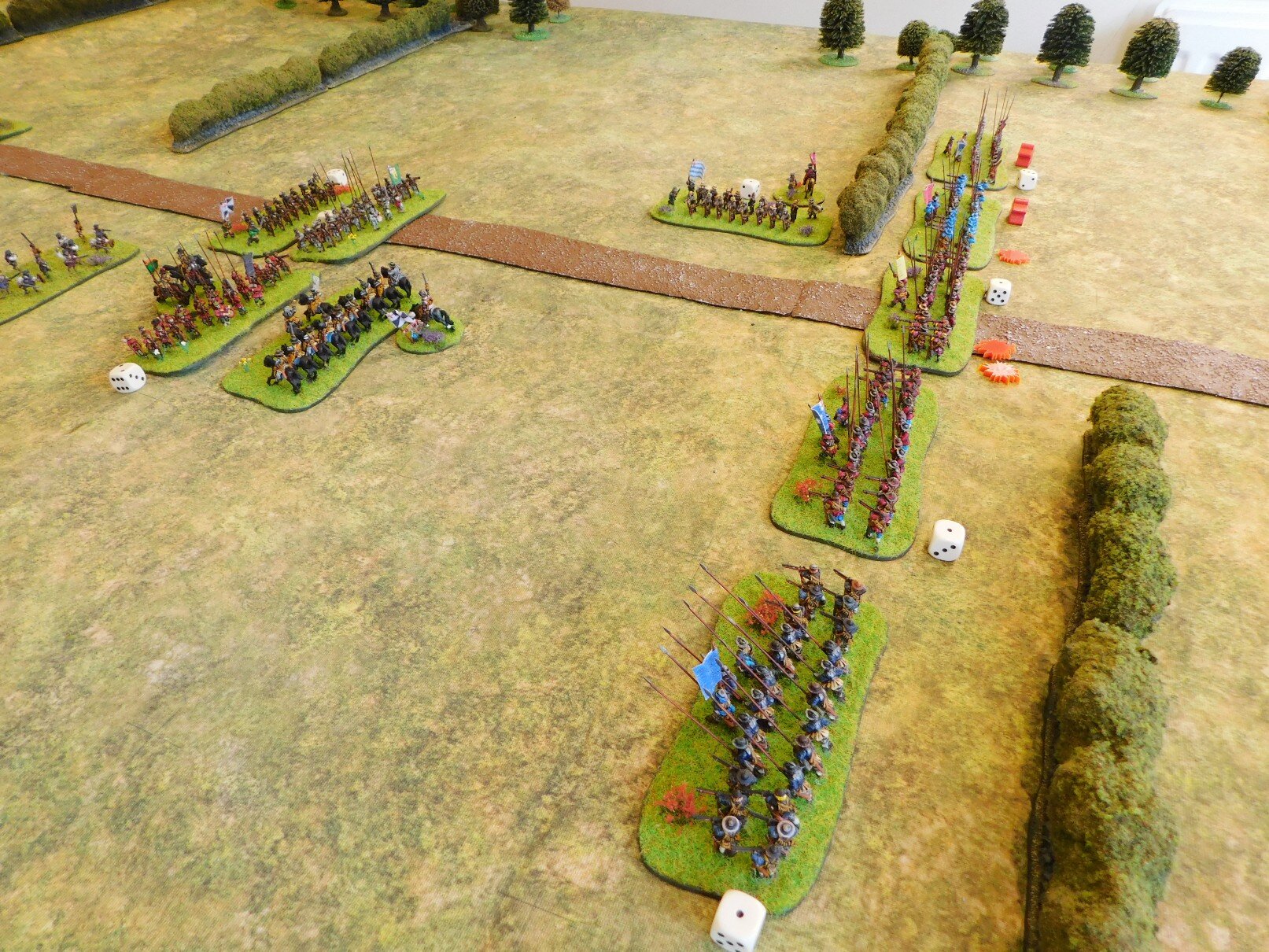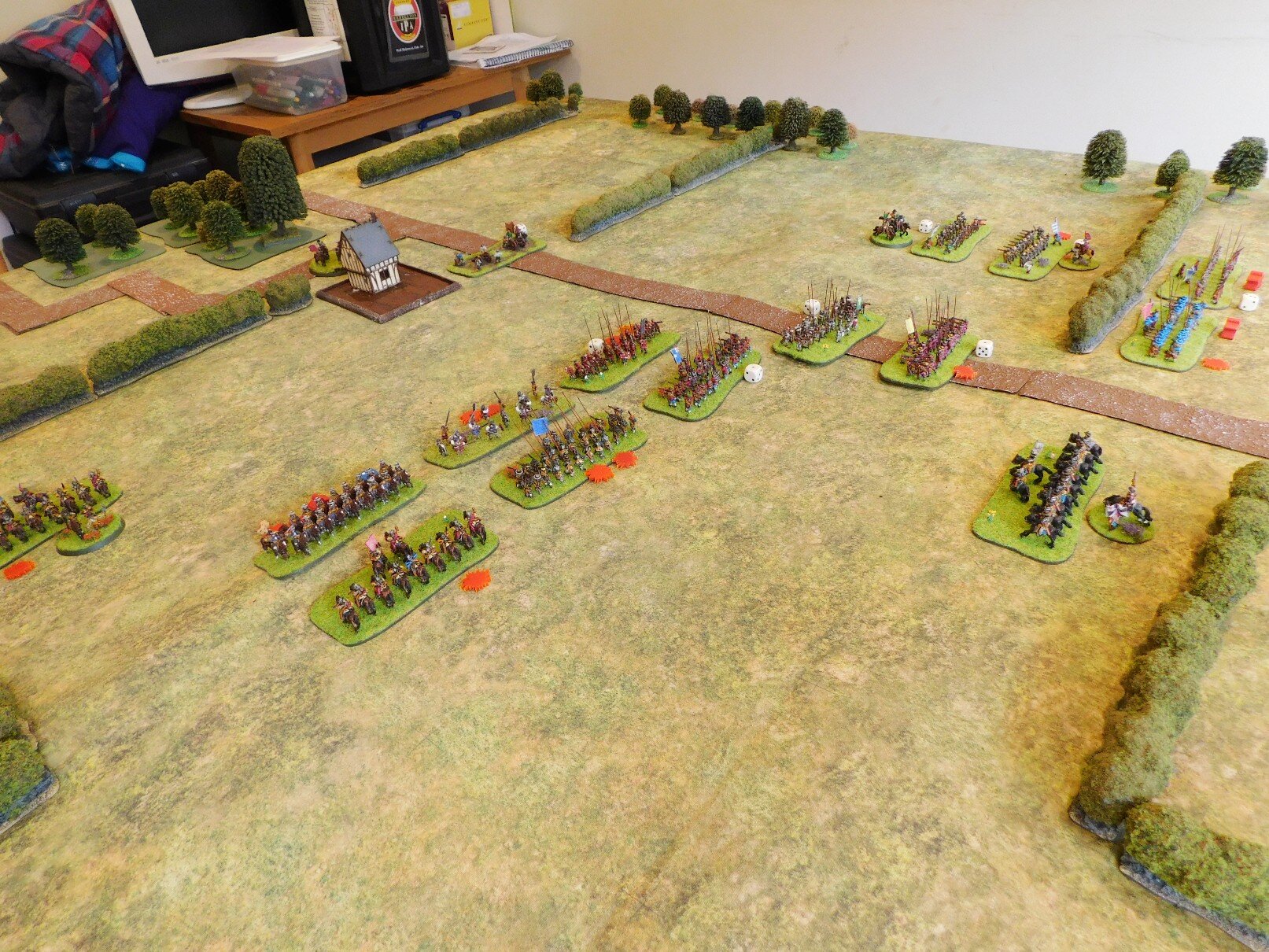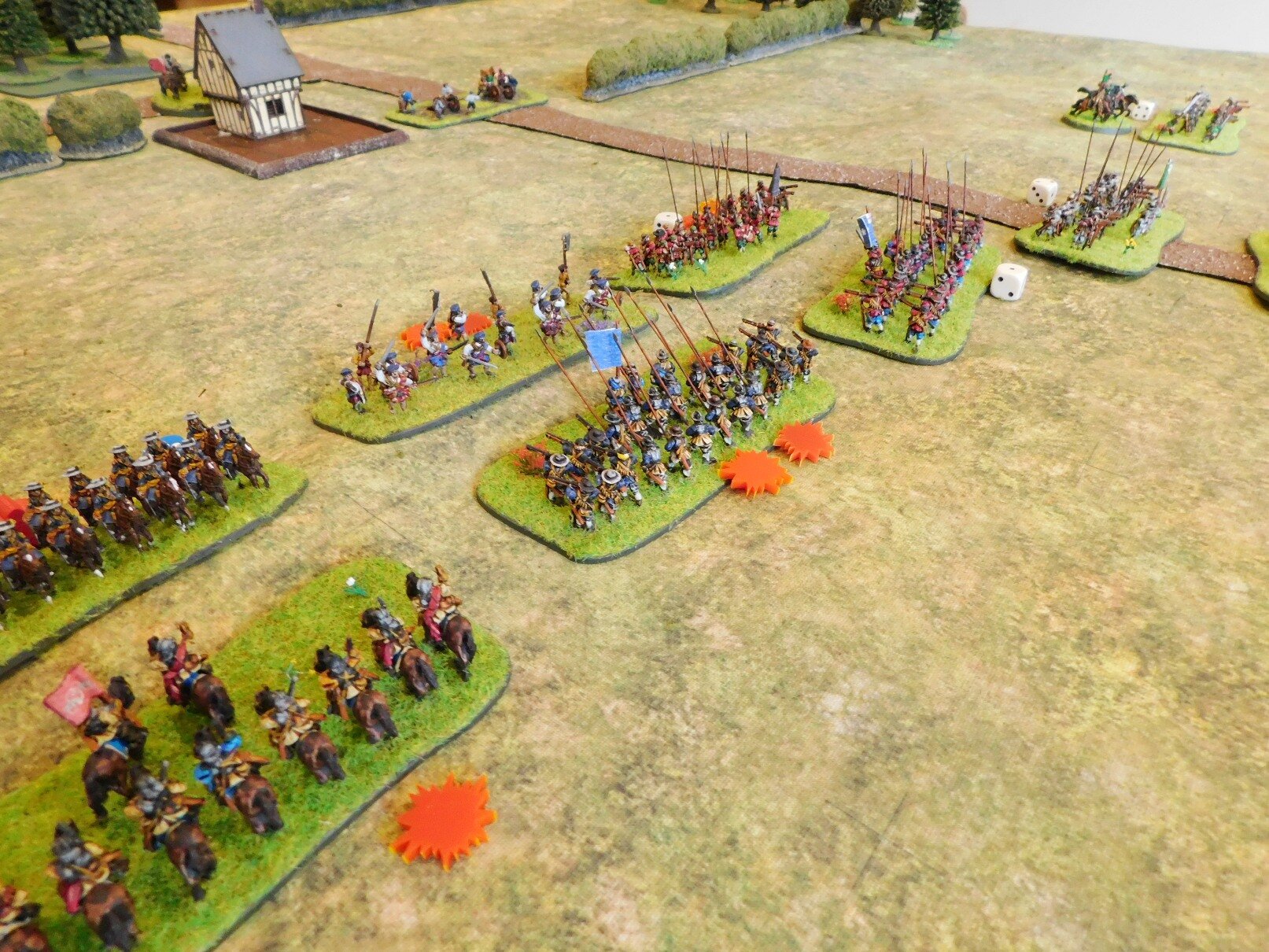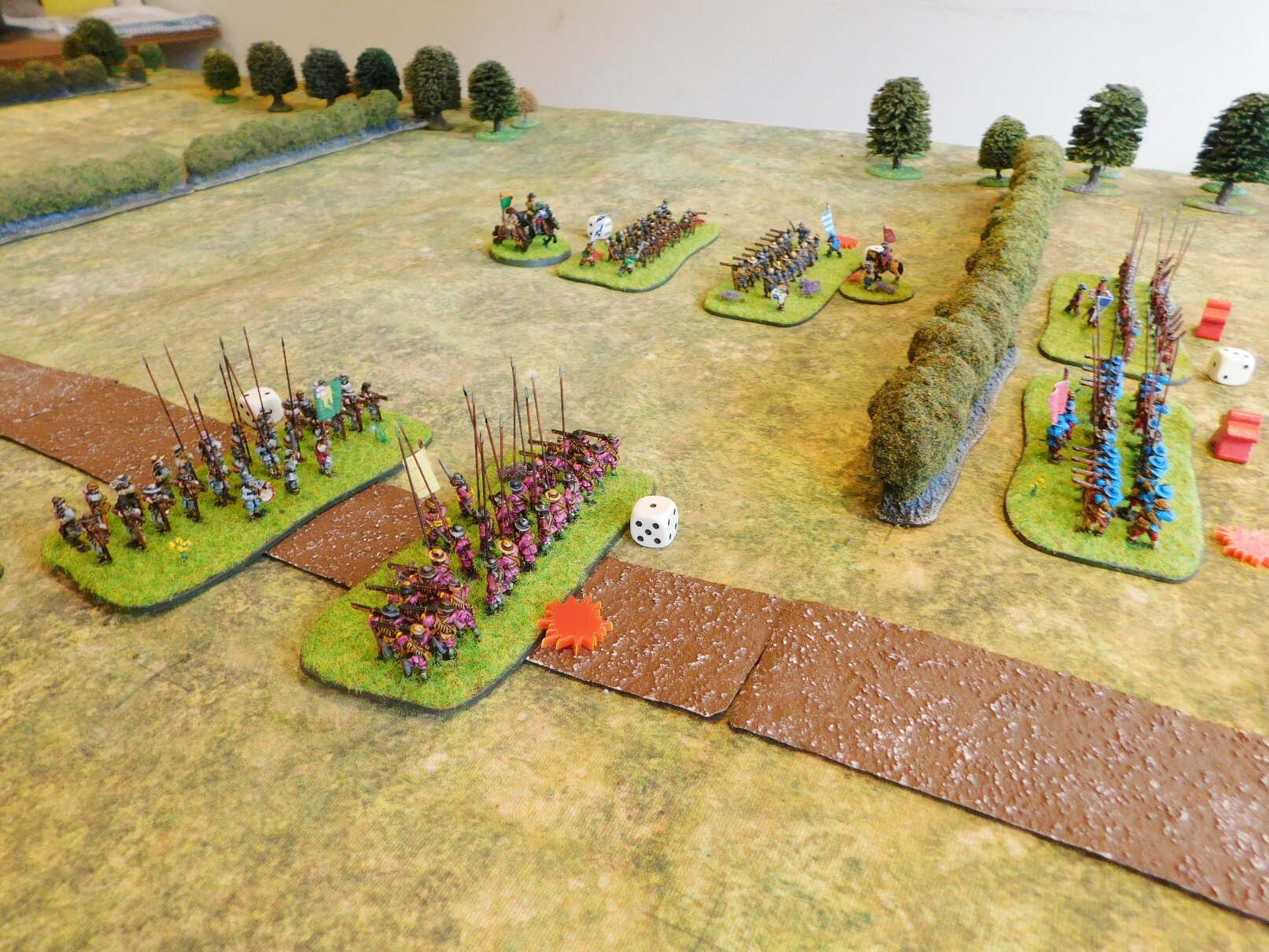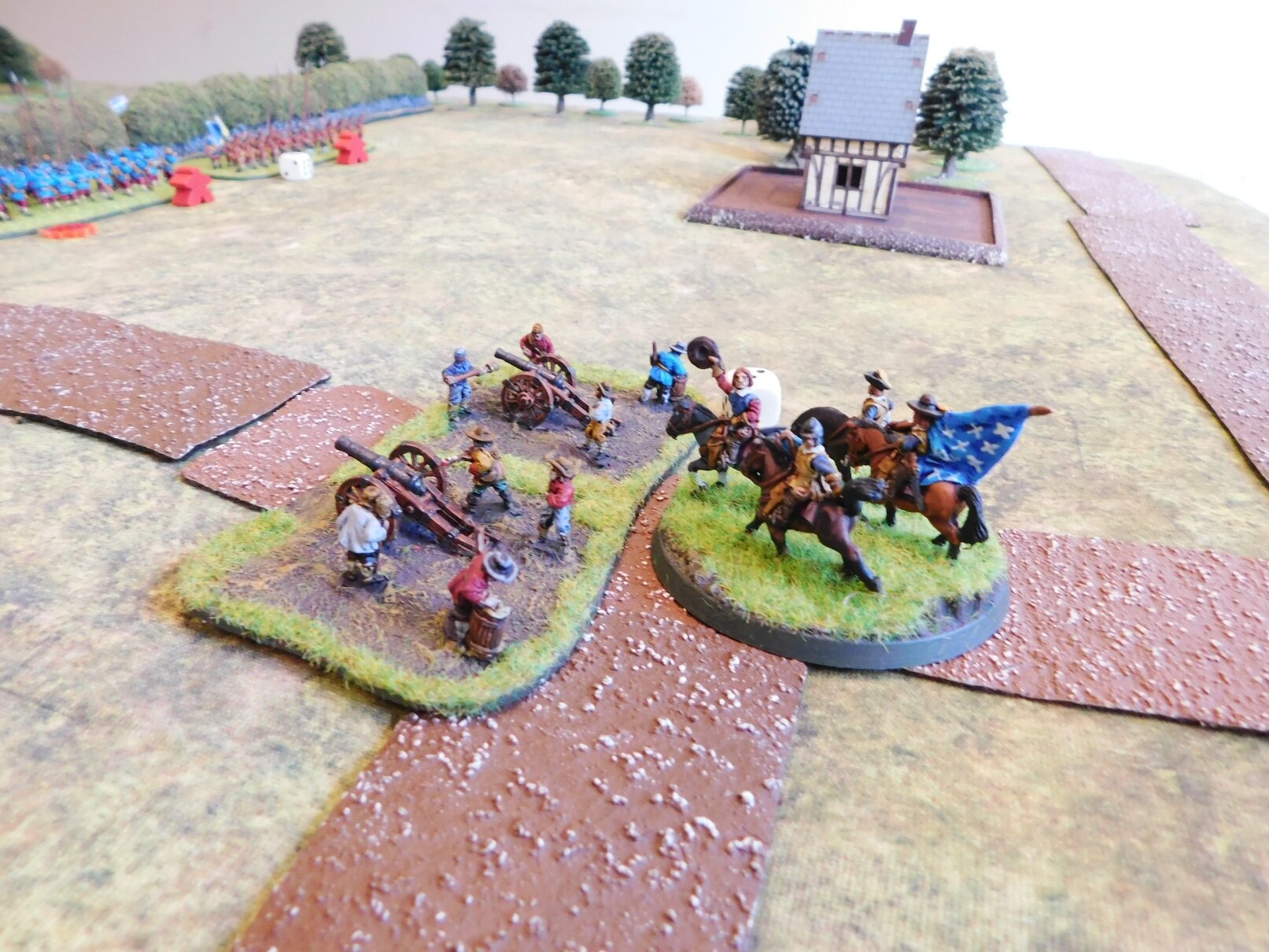Napoleonic AAR: Ostrolenka by Zoom
/Having very much enjoyed my first remote wargame last week, I took part in another last night: a Napoleonic clash between the Russians and the French based on the battle of Ostrolenka, 16th February 1807.
Re-enactors fight Ostrolenka
This was run quite differently to my last remote game. Three players a side, with initial briefings sent out a couple of days before the battle itself. Once all on Zoom and initial banter done, each side was put into its own breakout room, where we waited until our “Chief of Staff” (Edward: the gamemaster, or GM, for want of a better word) arrived to either (a) give a report on the progress of our troops and take orders or (b) escort us on a tour of the battlefield, or at least those parts of it that it was judged that we could see.
Screenshot of a battlefield tour
This last was particularly clever, as the GM had hooked up two mobile phones to the Zoom session, so each breakout room had four participants: three players and a camera. Rather than being the traditional wargame helicopter view, however, the ‘phone (with its camera) was only turned on when we elected to tour the battlefield, and was held in a way that showed us only what we could see from horseback. As it was a misty day, this meant that we could only see certain sectors of the battlefield each time we toured, and only see a short way in front of our most forward troops.
This meant that, as commanders, we really felt the “fog of war”: issuing orders based only on the reports we received and, if we did tour the battlefield, we had to wait until our next turn to issue orders based on what we had seen. A novel experience for those used to the traditional wargamer omniscience!
Introduction To The Game
Steve, Bevan and I were the Russians, facing Dave, Peter and Trevor as the French. Here’s an extract from the Russian briefing that sets the scene:
Following the costly battles, especially the blood-bath at Eylau, which drew the 1806 campaigning to a close, the opposing armies of France and Russia have both paused as the winter takes grip. Prussia has collapsed and Berlin fallen to Napoleon, but the French have found it harder to make headway against the Russian forces.
General Bennigsen, who has the bulk of the Russian army to your North, has ordered you to threaten and throw back the French right flank, which is anchored at Ostrolenka, so as to cause Napoleon to withdraw from his winter quarters. To achieve this you have been given a significant portion of the Army of Moldavia: Volkonski’s and Sedmarkatzki’s Divisions.
Well before dawn your two divisional commanders, who have their units ranged North of Ostrolenka on both sides of the River Narew, have arrived to receive your instructions.
They’ve both assured you that they are ready to move before sunrise, and that cavalry scouts have located French units at Ostrolenka. A captured enemy soldier says that they are not expected to break camp soon.
The Russian Plan
Seeking to achieve a concentration of force, we elected to keep all our forces west of the river Narew, effectively attempting to attack down the axis of the Kadzidlo Road. We didn’t necessarily expect to get that far west and south without first encountering the French, but the plan was to follow that strategy as much as possible until we did run into the enemy.
Our strongest division, Volkonski’s, would therefore march down the Zbotna Road until the end of the Sandy Hills, then loup around to the west. Our second division, Sedmarkatzki’s, would march down the line of the west bank of the river.
Once we encountered the enemy, we planned to deploy all our artillery and pound them to death, with Sedmarkatzki covering the guns and awaiting an opportunity to punch forward, whilst Volkonski kept edging around Ostrolenka to the west, pushing forward against what we assumed would be the far left of the French line.
GM’s Summary of the Action
(my thanks to Edward, who has also provided an excellent time-lapse video of the action, link below )
Before dawn the Russian leader General Essen sent both his divisions, led by Generals Volkonski and Sedmarkatzski, South towards the important town of Ostrolenka, in the valley West of the River Narew, hoping to concentrate his force and overwhelm the French. The strategic Russian aim was to threaten Napoleon’s southern flank, as he settled into his Winter quarters following the battle at Eylau.
The French corps commander, General Savary, made his dispositions as dawn broke, with Suchet’s division out to the East of the town, Gazan’s men to the North in the valley, Becker’s cavalry covering the left flank, and Oudinot’s three brigades of elite grenadiers held in reserve.
The Russians proceeded cautiously, deploying guns and spreading their rather crowded forces up onto the hills North-West of the town.
Becker’s dragoons mounted some charges up the hill, attacking Volkonski’s division, which was on the Russian right flank. Casualties mounted, with the Russians generally coming off the best and one of Becker’s brigades routed.
Savary, hearing that there were no Russians East of the river, eventually re-called Suchet back to Ostrolenka, but meanwhile the Russians increased the pace of their attacks and pressed on. Gazan came under increasingly heavy pressure, falling back, while Oudinot’s French grenadiers, which had been held in reserve, were committed by Savary to shore up his left flank. In fact, they took the attack to Volkonski’s forces with considerable success as the afternoon wore on.
As the light faded, Sedmarkatzki’s lead brigades pressed the attack more forcefully down the line of the river, advancing to within a few hundred paces of the town and capturing some French guns. Suchet having been inexplicably slow in coming West was too late to buttress the French position satisfactorily. Oudinot’s successes on the French left flank could not be followed up.
Although not a disaster for Savary, the French casualties were significantly higher, and as night fell he pulled his shaken corps away to the South, leaving Ostrolenka to the Russians. Napoleon, with the main French army to the North, was forced to detach a further corps to rescue his right flank. Historians have recorded this as a minor but important victory for the Russians under General Ivan Essen.
Historical Note
In reality Sedmarkatzki’s powerful division never made it to this battle, having been ordered North the day before. Essen none-the-less planned two separate attacks from the North against Ostrolenka. Savary, with the advantages of interior lines and numbers, was able to repulse the Russian probes in detail and secure the French position.
French Commander’s Report
(my thanks to Dave for this)
My Emperor,
I am hoping that Gerard has carried the news to you of our tactical withdrawal from Ostrlenka. Knowing how you planned to stetch the Russian Army and make it fight over too large an area for its pathetic logistic chain, I’m sure you will appreciate the efforts which have gone into this achievement.
I would wish to pay due respects to the brave men who fell for La France on the 16me, and also to the tenacity and audacity of Generals Gazan and Oudinot who fought against great odds with all their might.
Sadly I have to recommend to you that certain officers be recalled from their posts for not achieving the standards you so reasonable expect of your senior officers. Gen Debelle, although commanding one of the finest Light Cavalry Brigades in the Army, somehow failed to observe and report the entire Russian army being within a km of his position whilst Gen Becker sadly failed to maintain sufficient discipline of his Division, such that one Brigade of our finest heavy cavalry charged the enemy without orders and were effectively destroyed. Such indiscipline cannot be tolerated in the Grande Armee, we pride ourselves on not behaving like British cavalry!
You may well wish to interview Gen Suchet yourself, his tardiness in obeying his orders to withdraw cost us many casualties and compounded his initial error in advancing too far from his assigned position, although he did later make every effort to redeem himself and valiantly led his men into the fray.
I believe the Russians will now be critically extended and ripe for your offensive.
Vive La France
Anne-Jean-Marie-Rene Savary, General de V Corps
Conclusion
A narrow victory for the Russians and a great evening’s gaming. The fog of war experience worked really well, with our command team very much having to issue division-level orders as we didn’t really know the exact position of any of the brigades: ours or the enemy’s!
Our plan worked, although not as overwhelmingly as we had thought it would. Our guns, although acting to the overall plan, could have done with a better deployment tactically to maximise the effect of their fire; and we needed to keep better control of Volkonski out on the far right. We only just got Sedmarkatzki into the fight in time, although that did mean that our reserve cavalry were perfectly positioned to repulse the French infantry crossing the frozen river. The French Grenadiers, under Oudinot, really caused us problems. Without their intervention, or rather their highly successful intervention, we would have won a more resounding victory.
An excellent experience, and one I’m looking forward to repeating soon.




